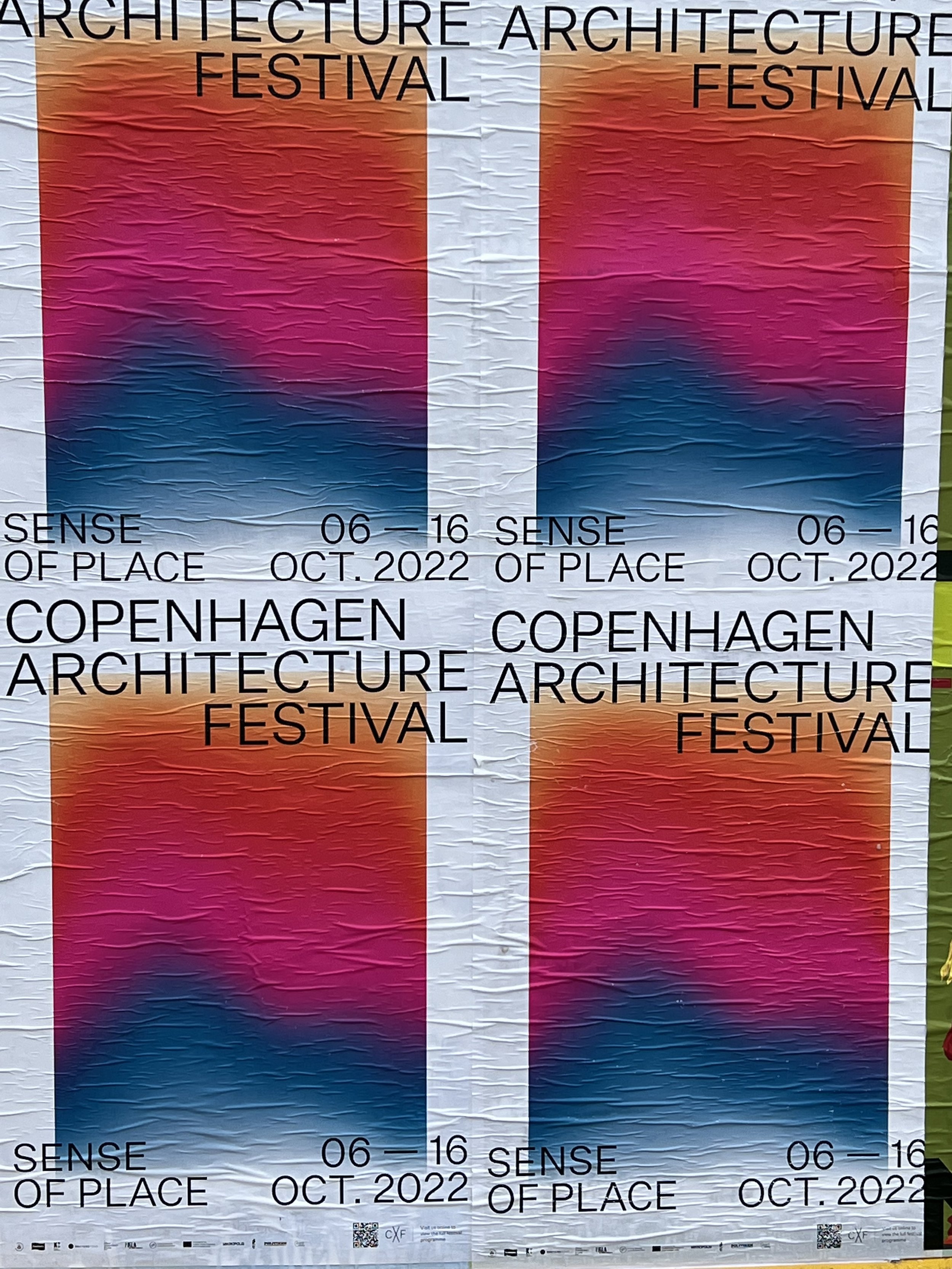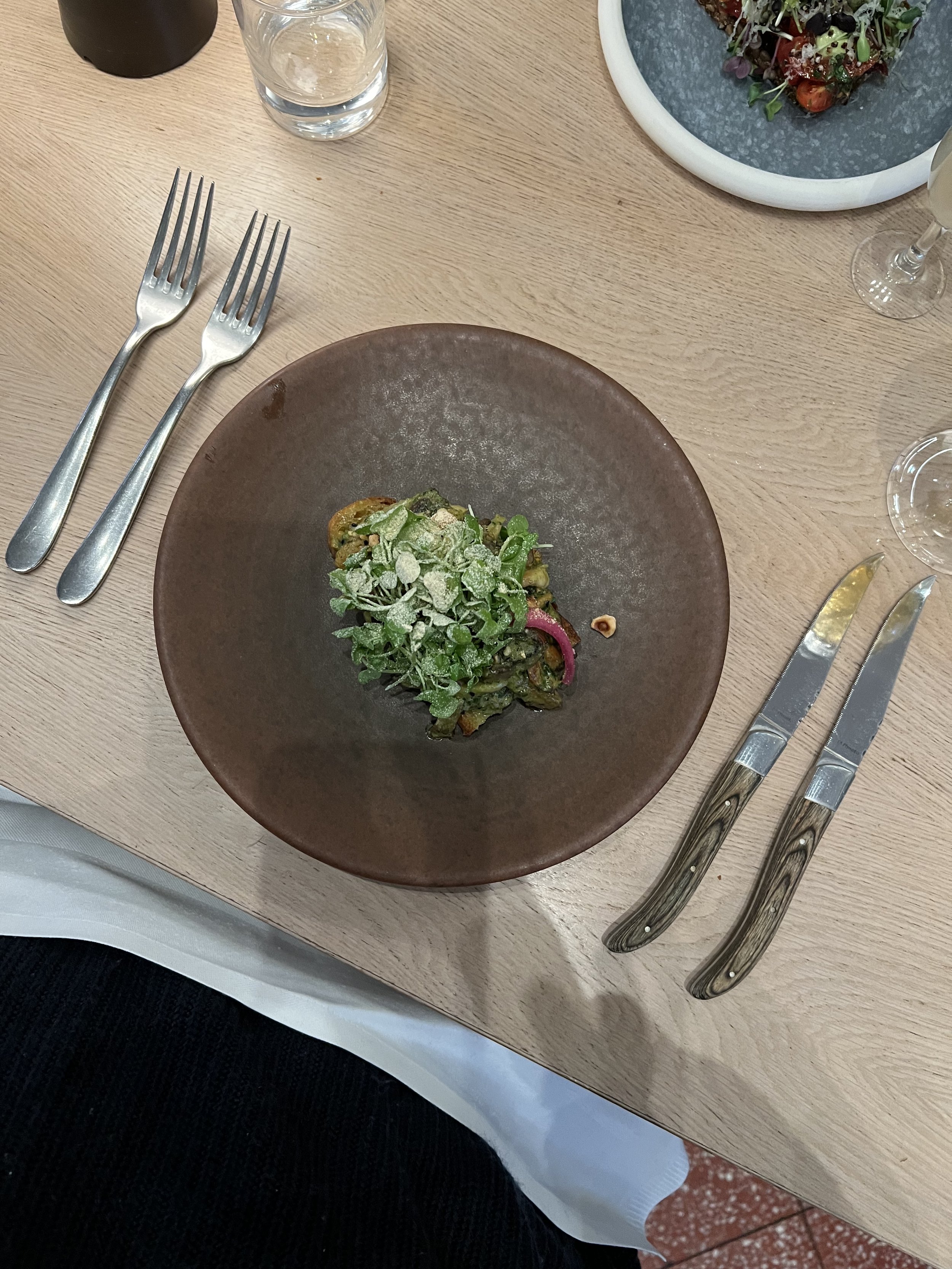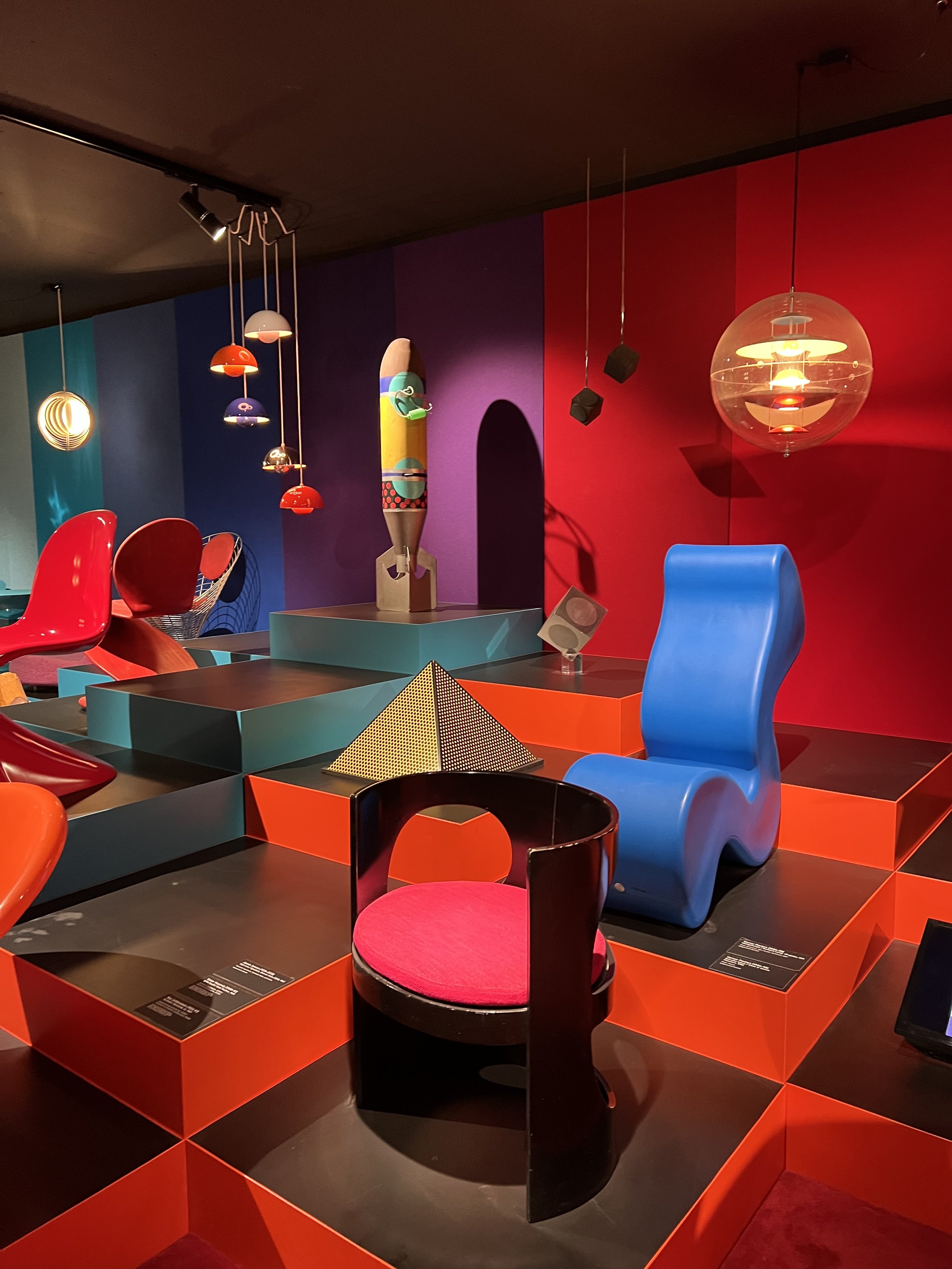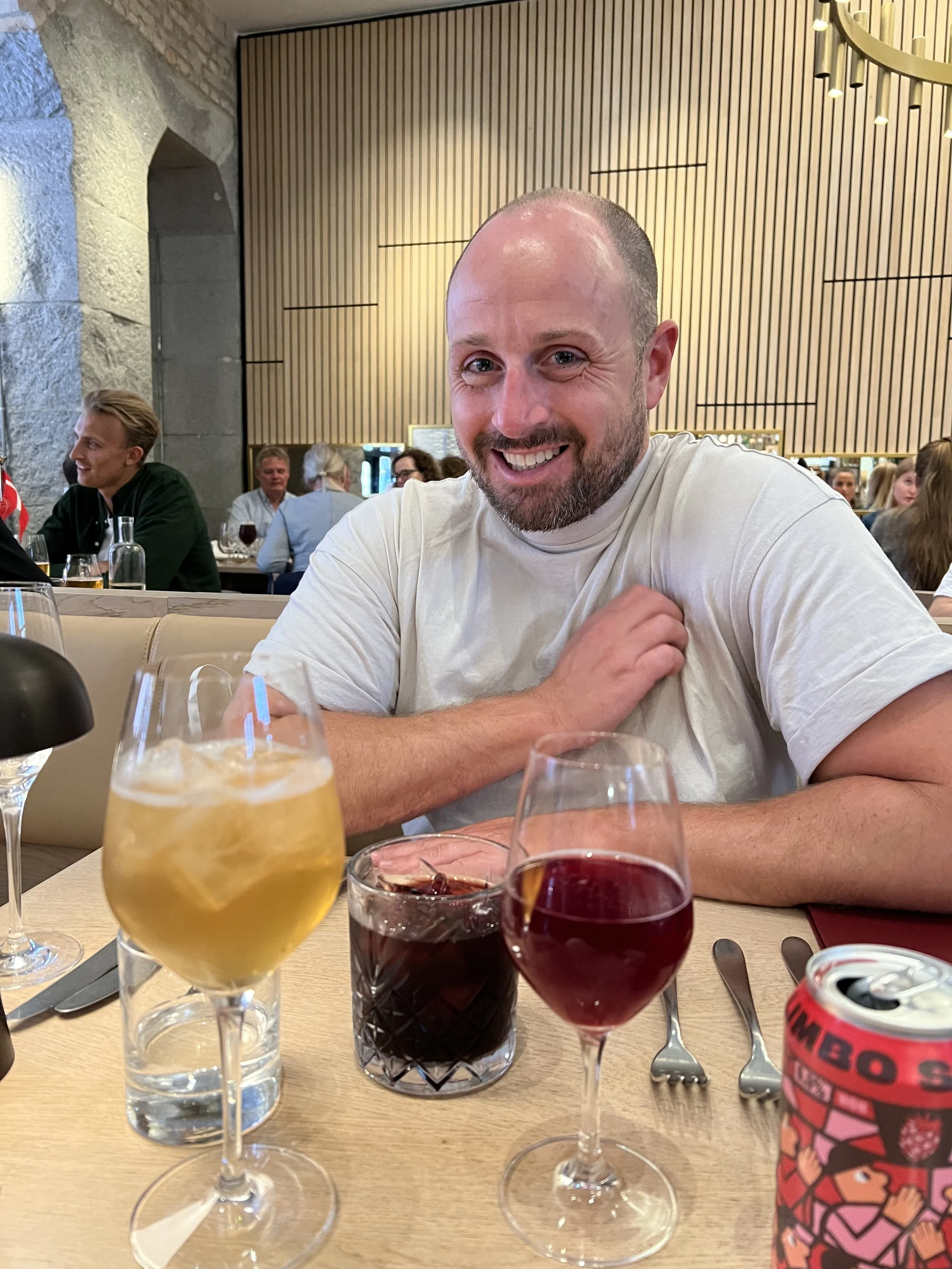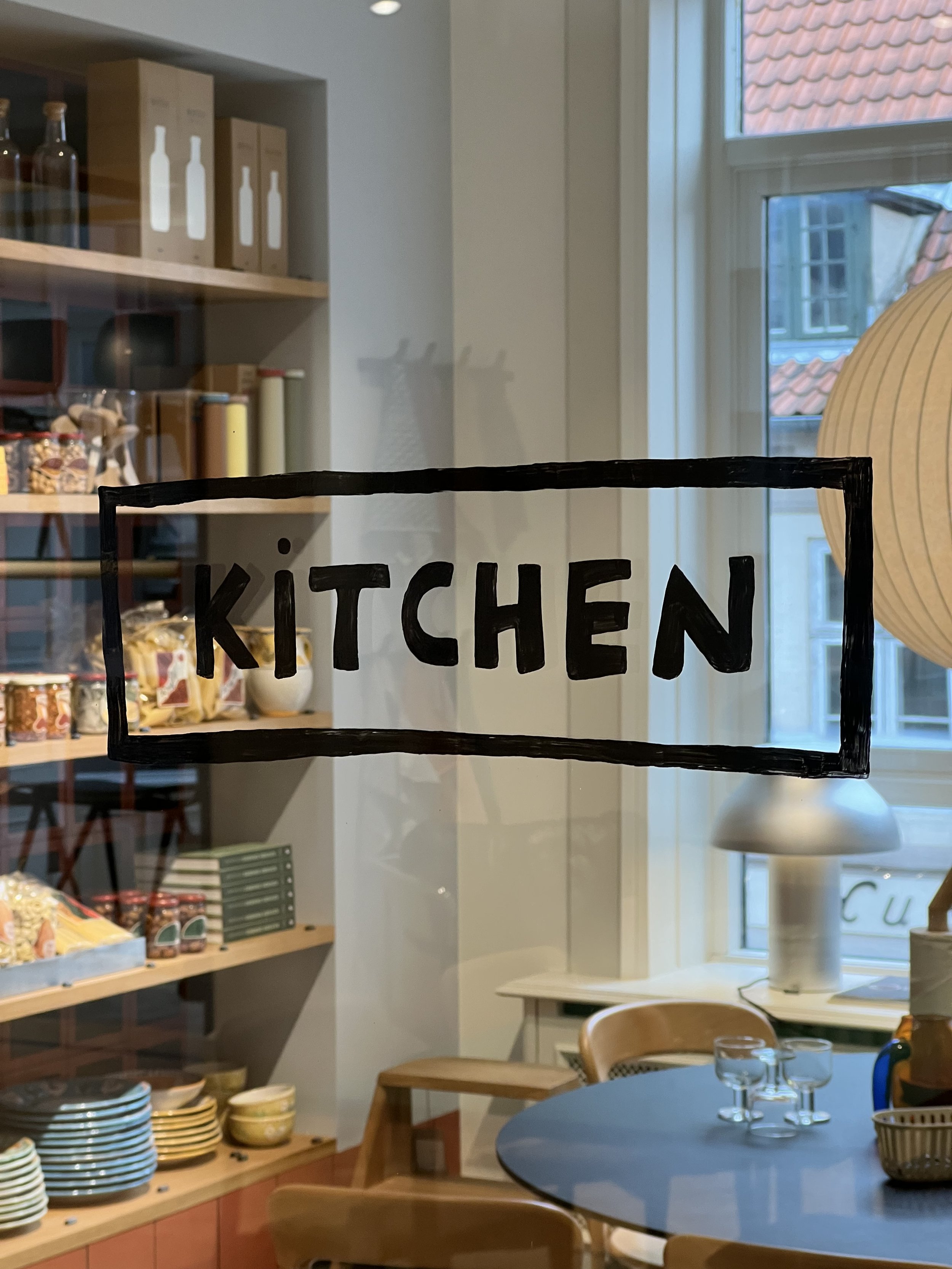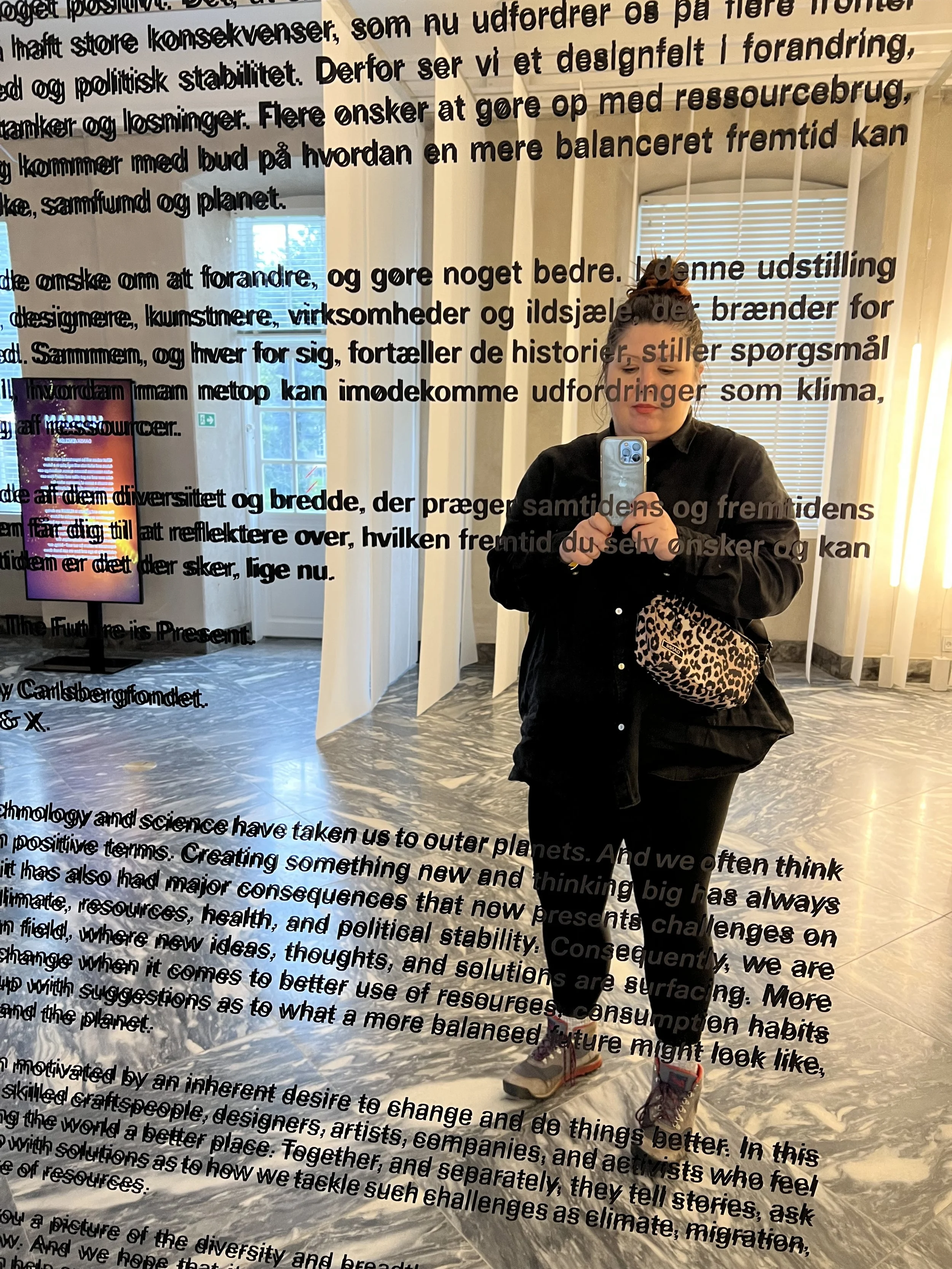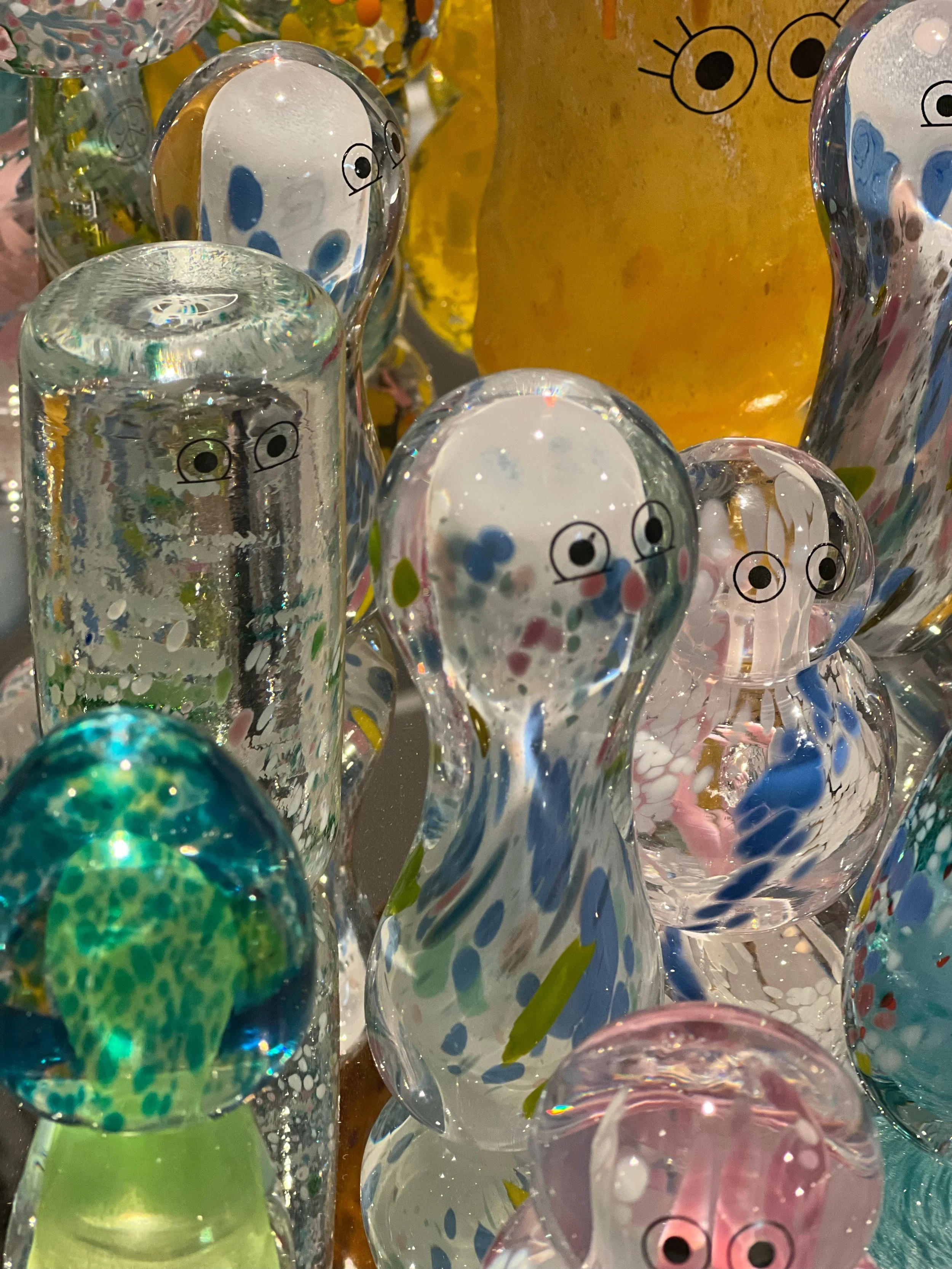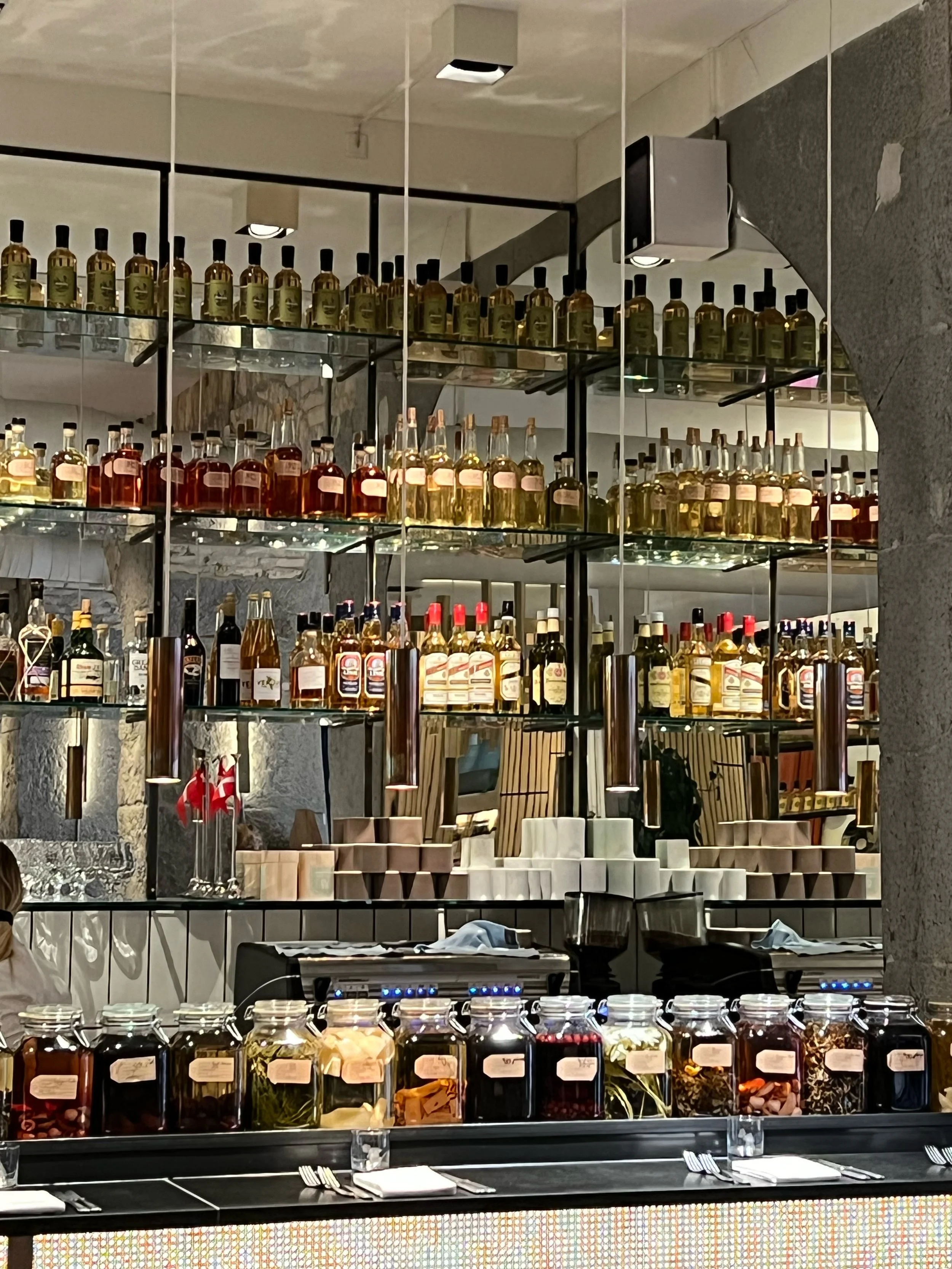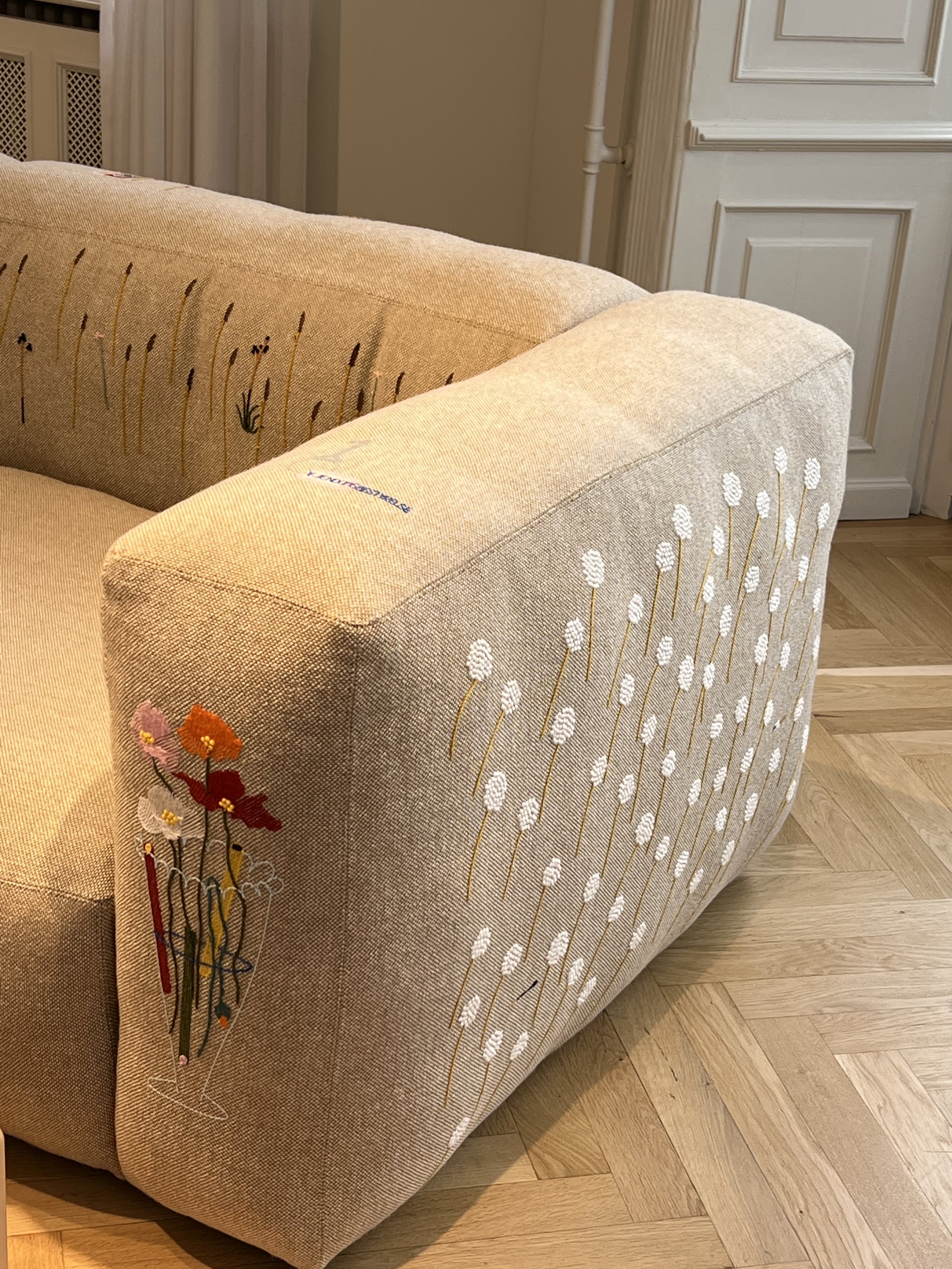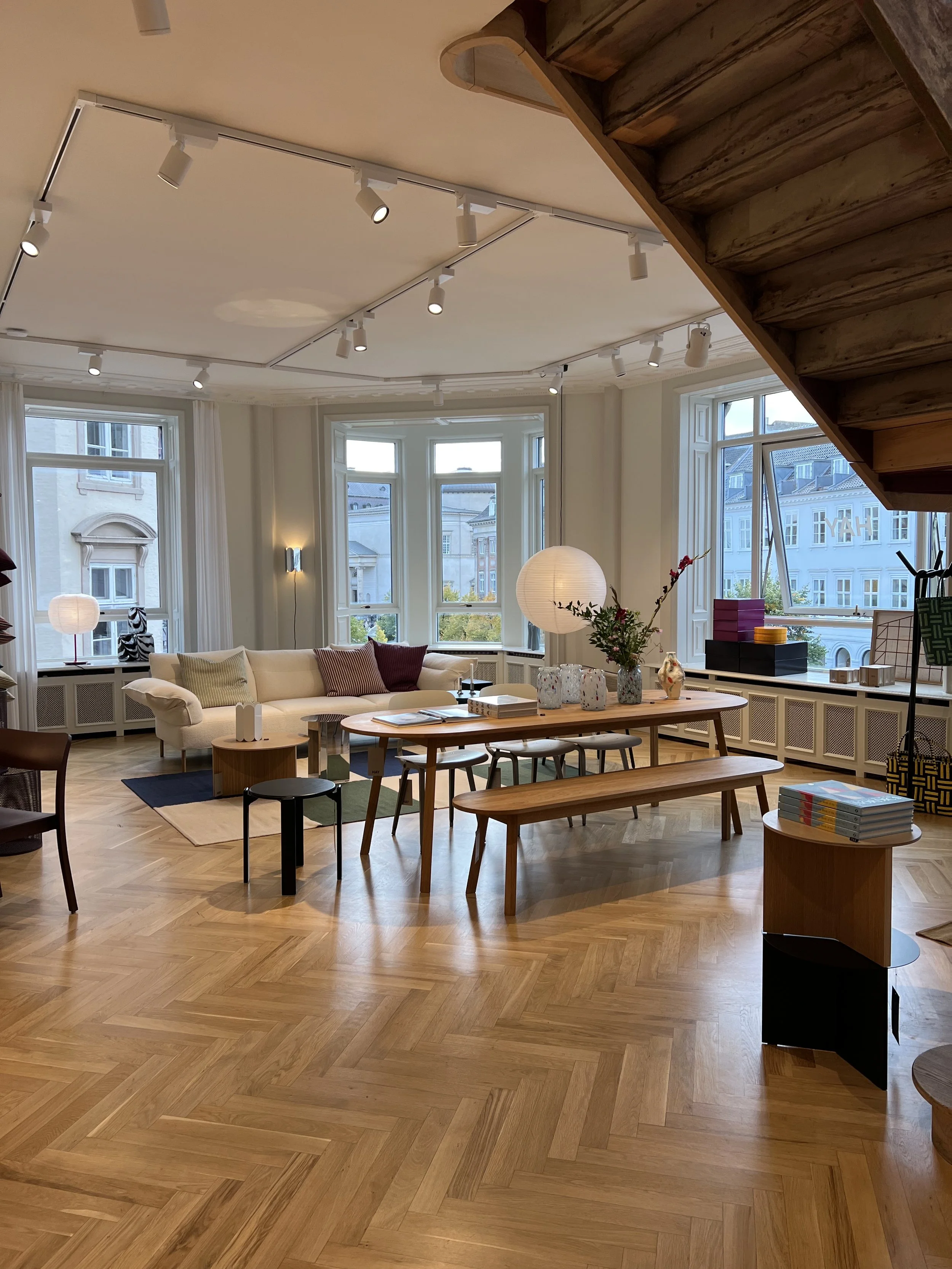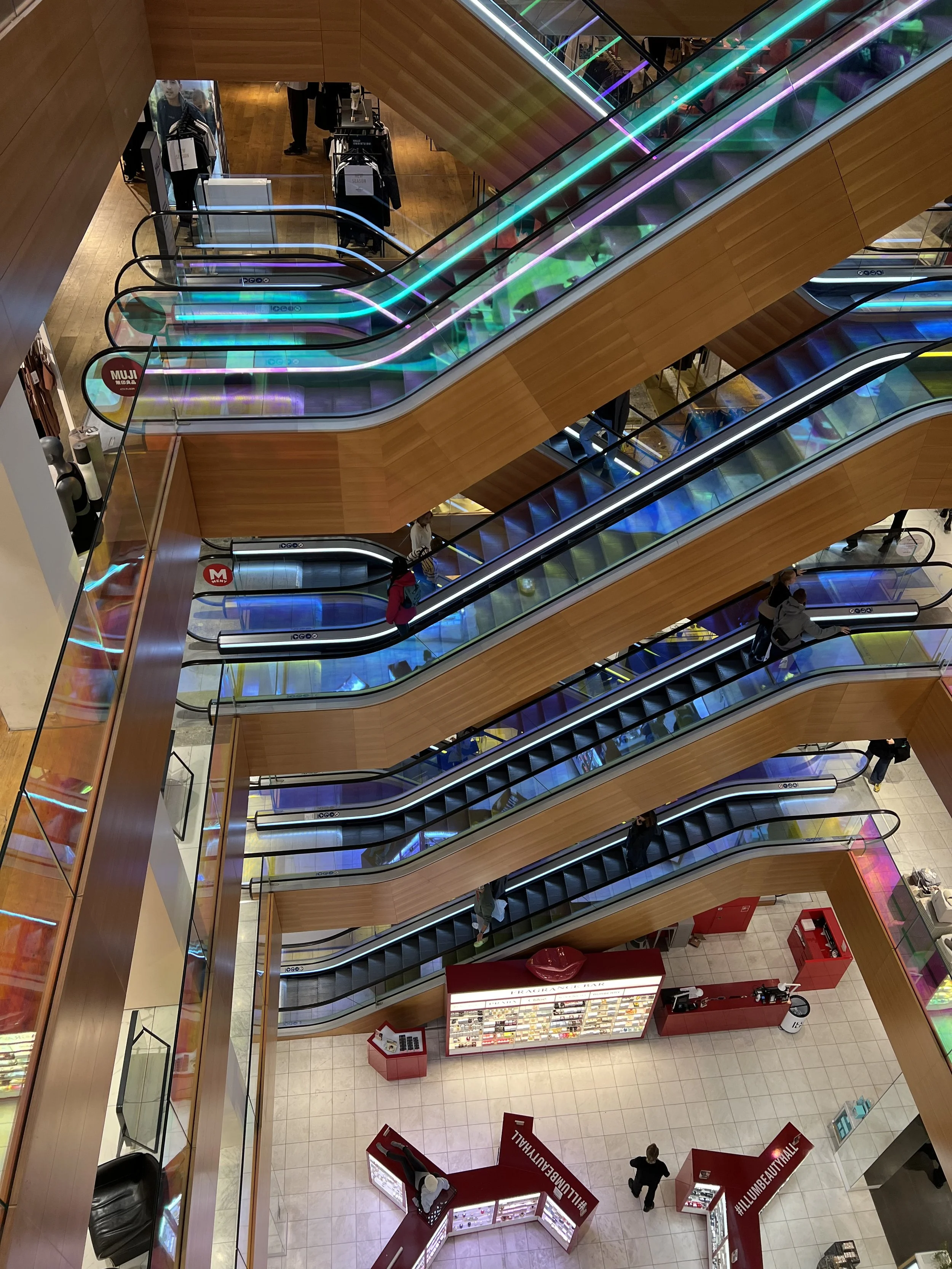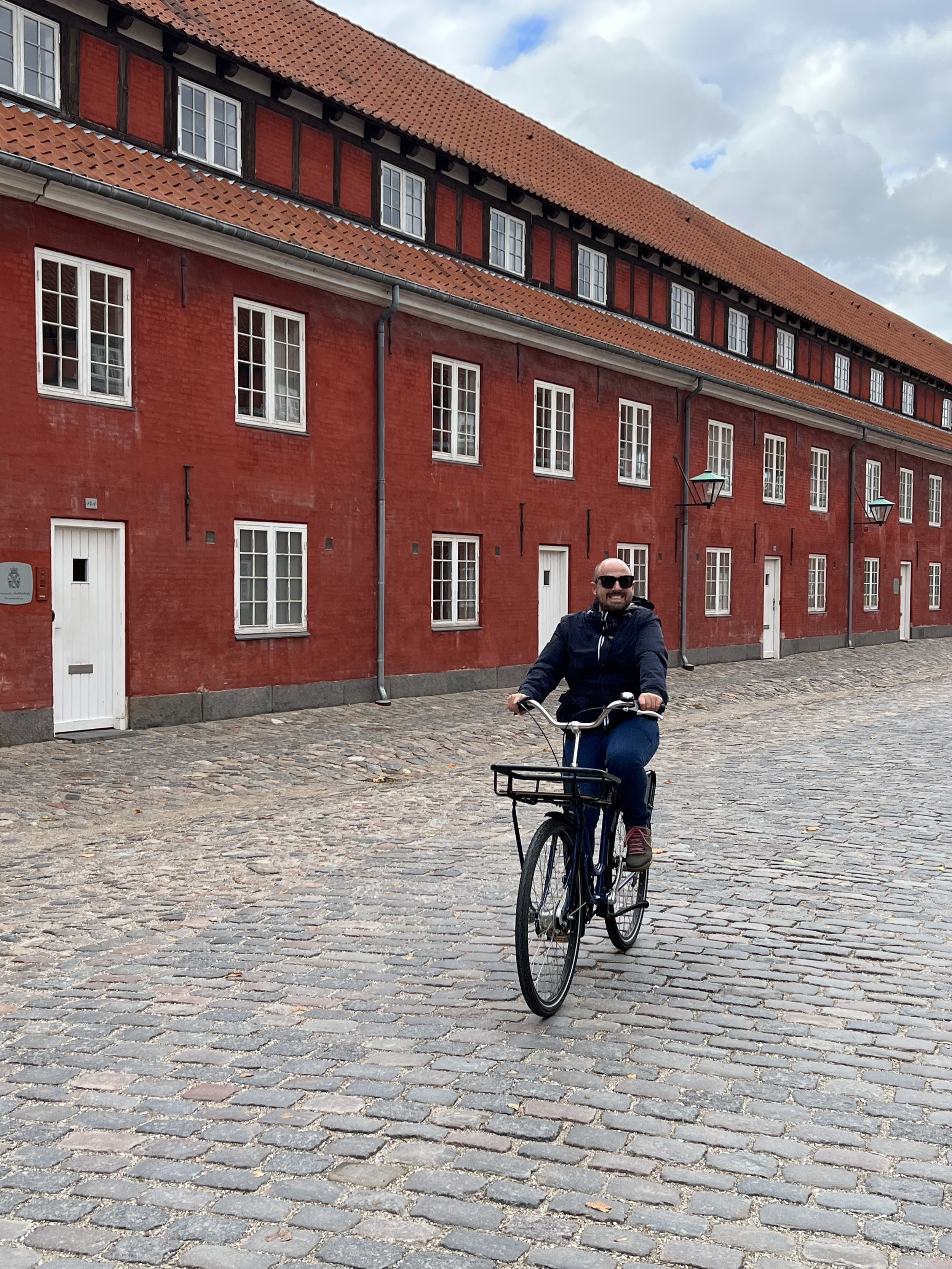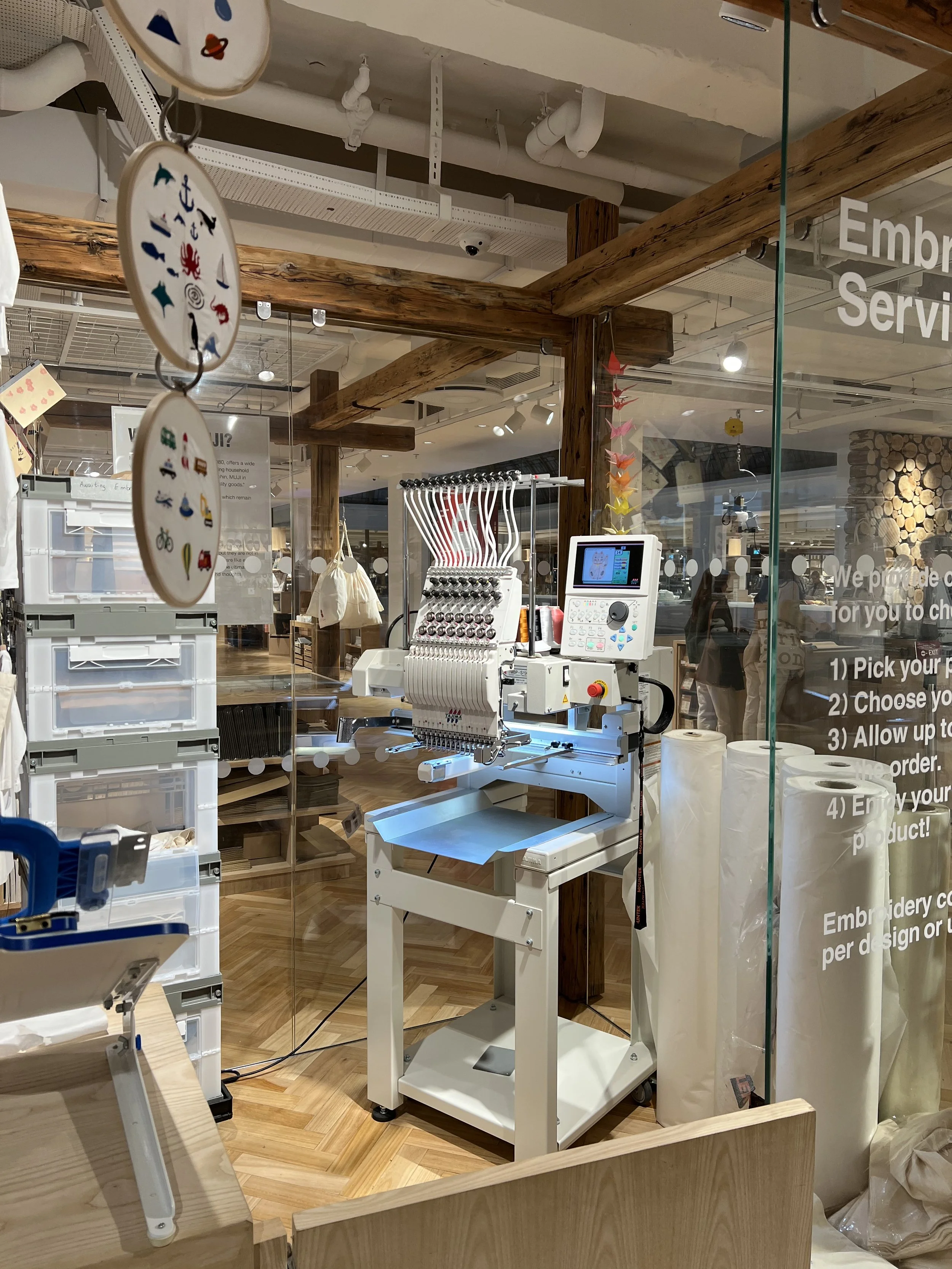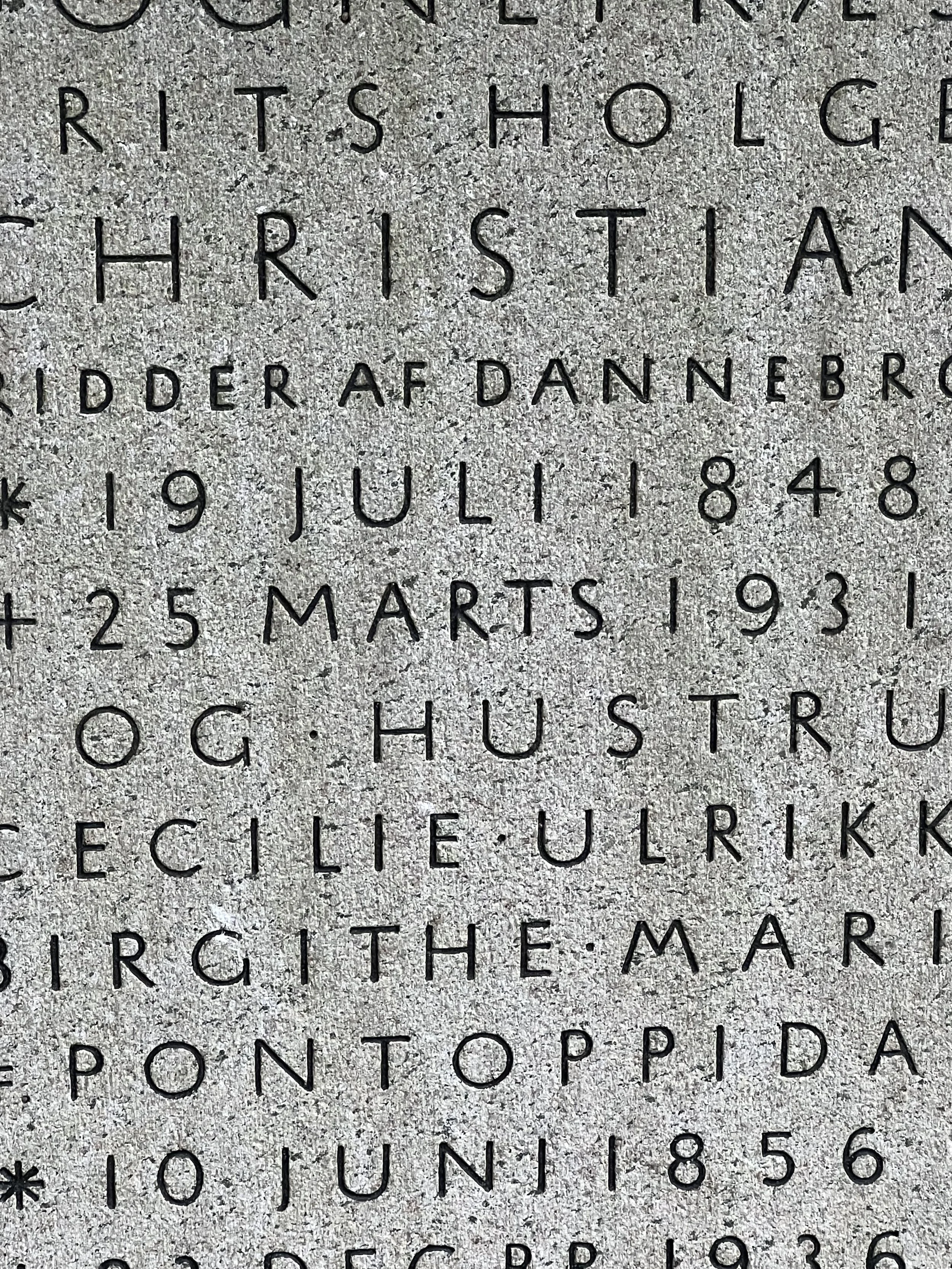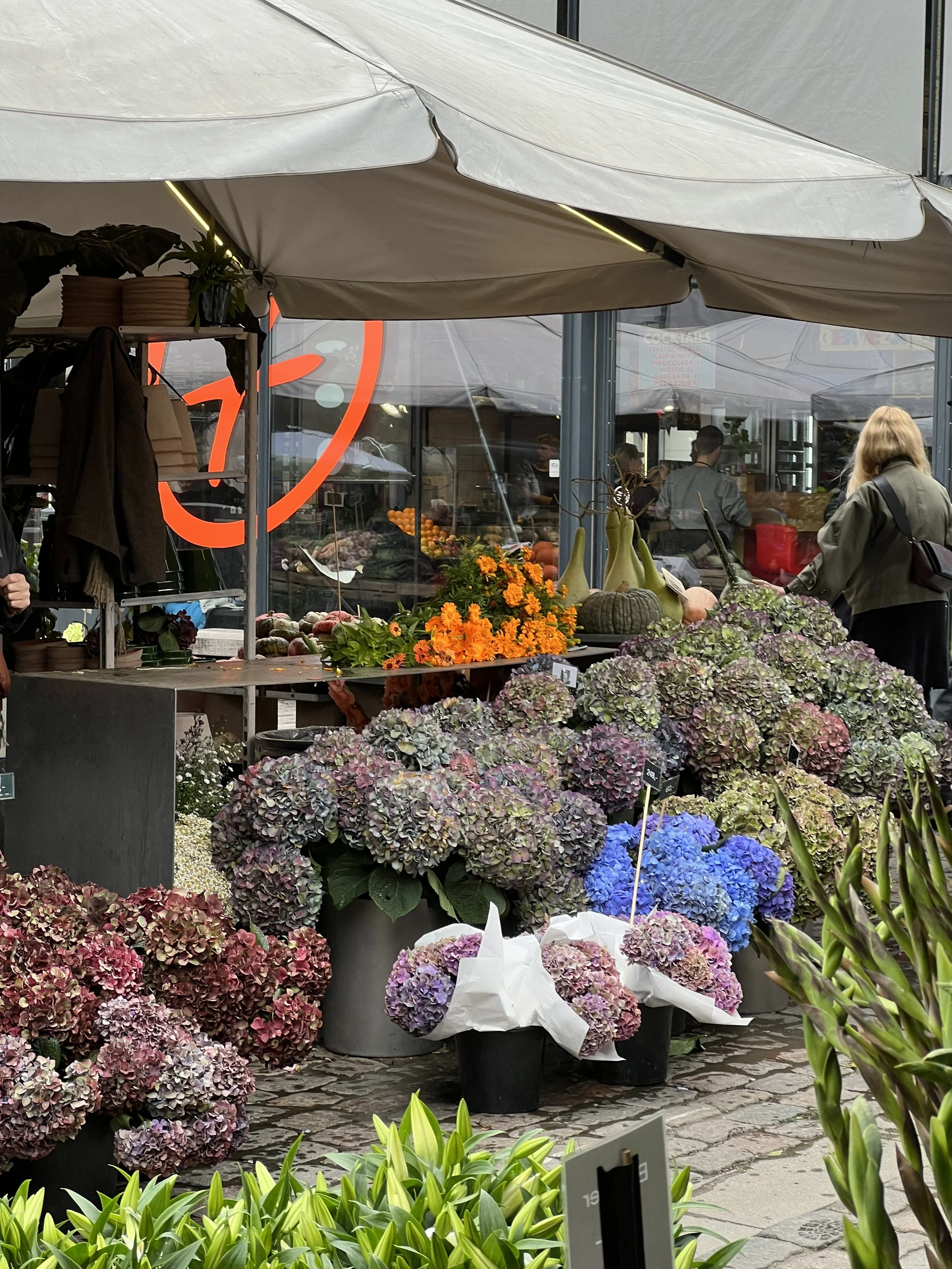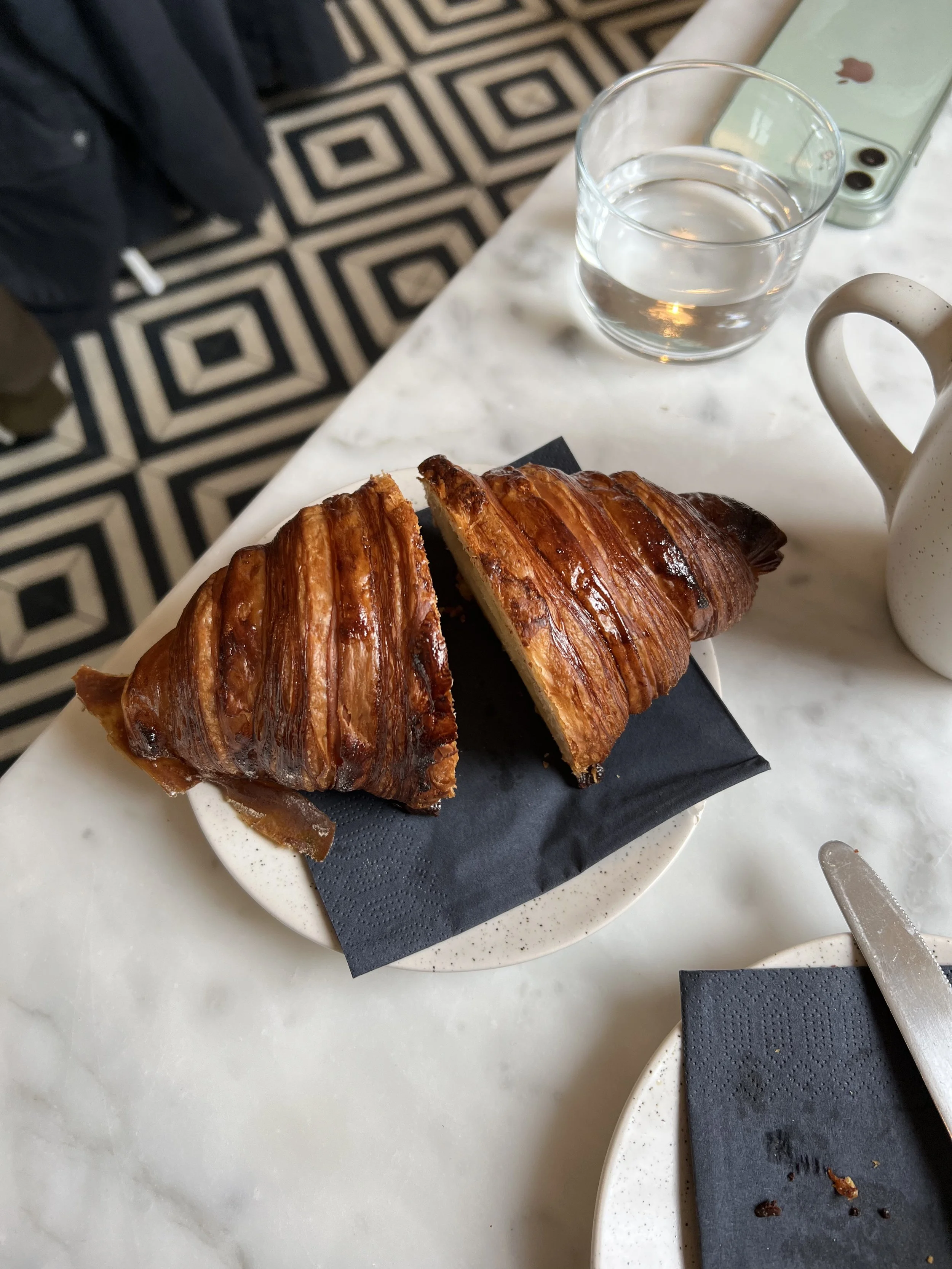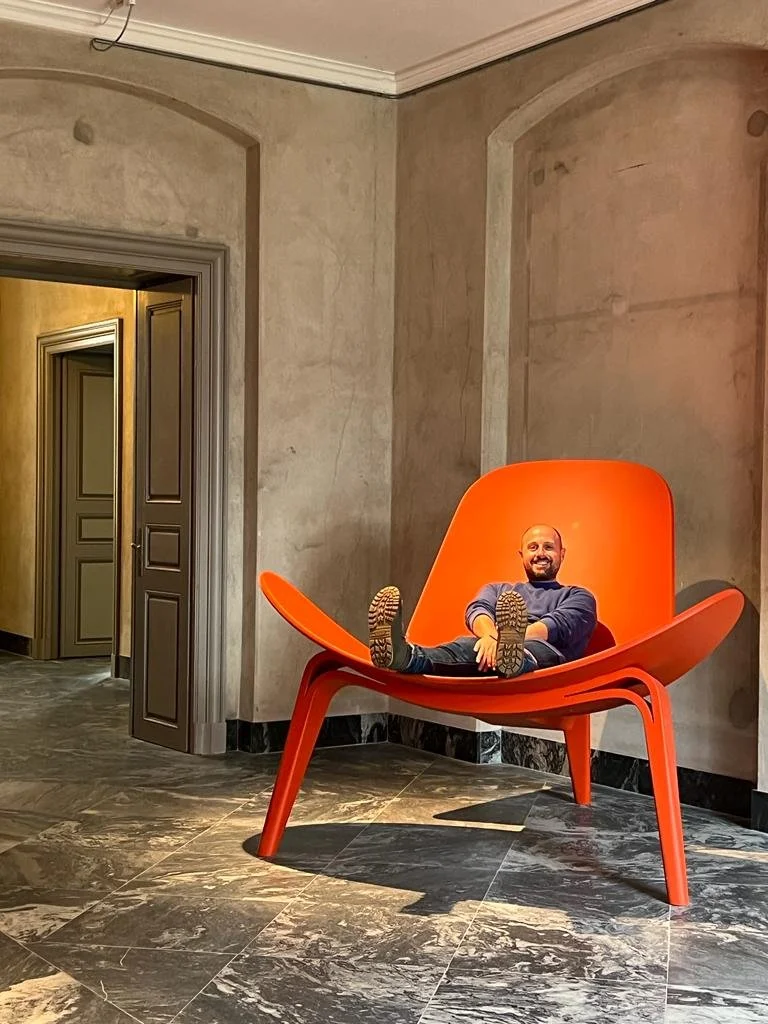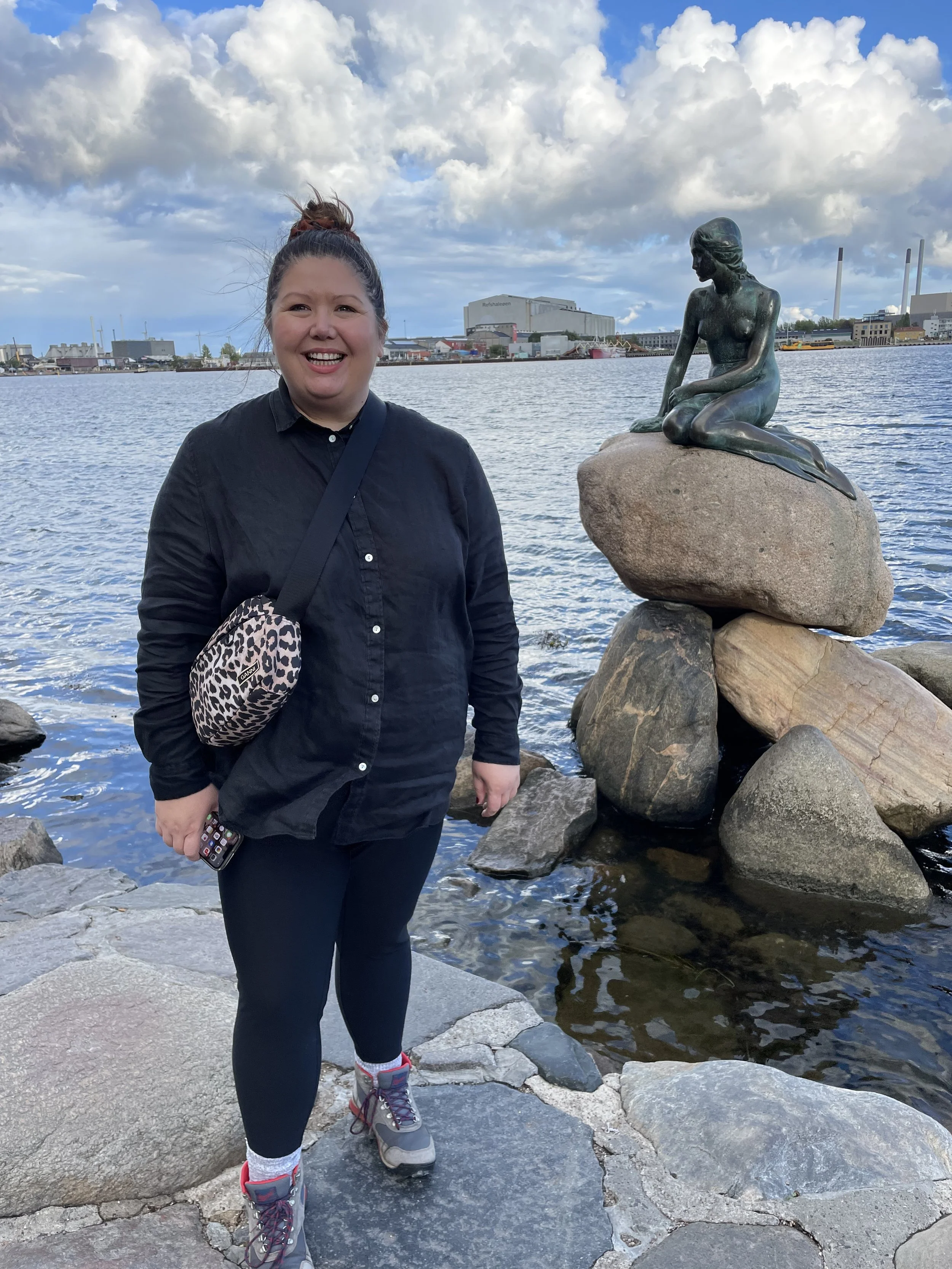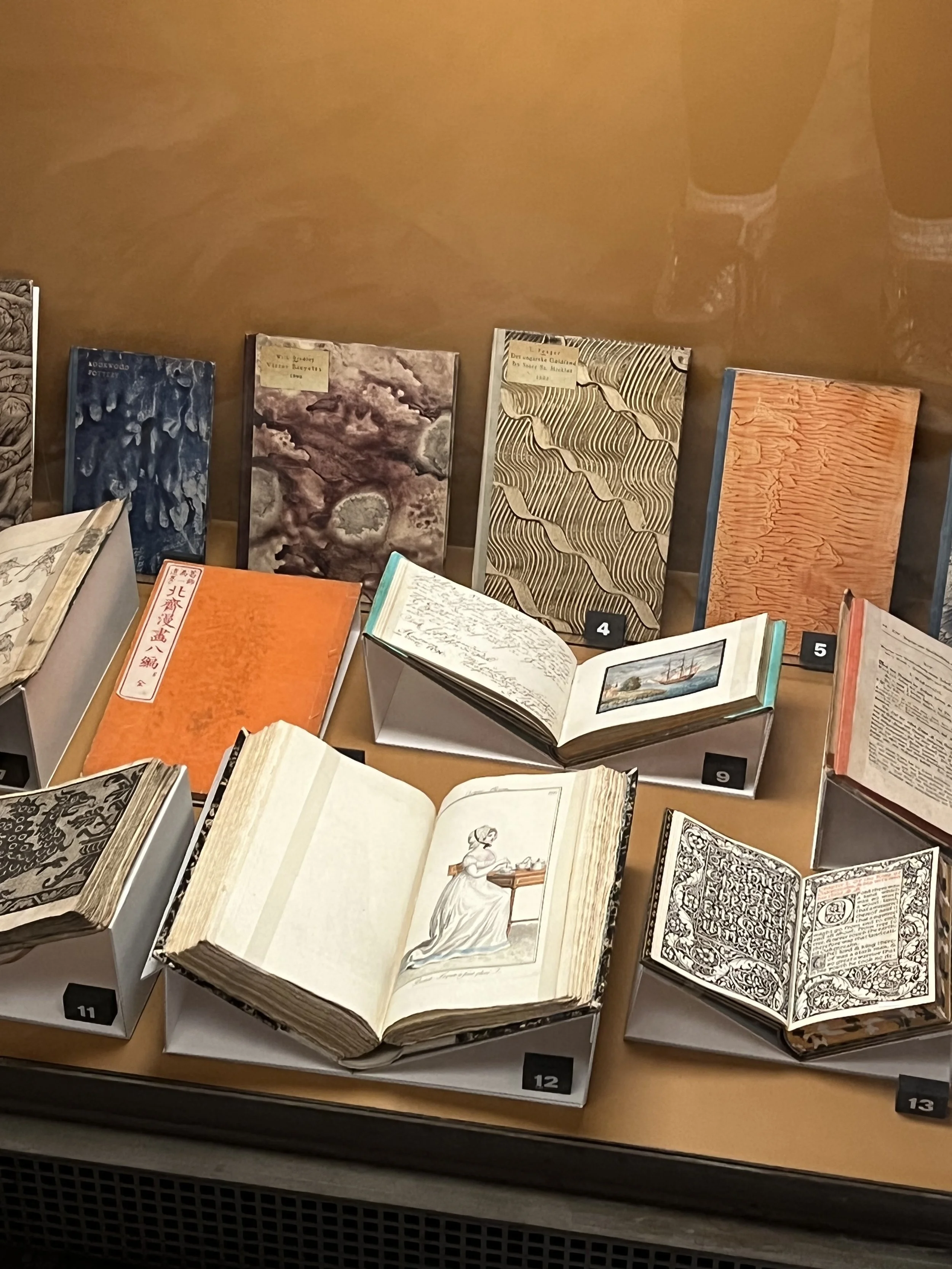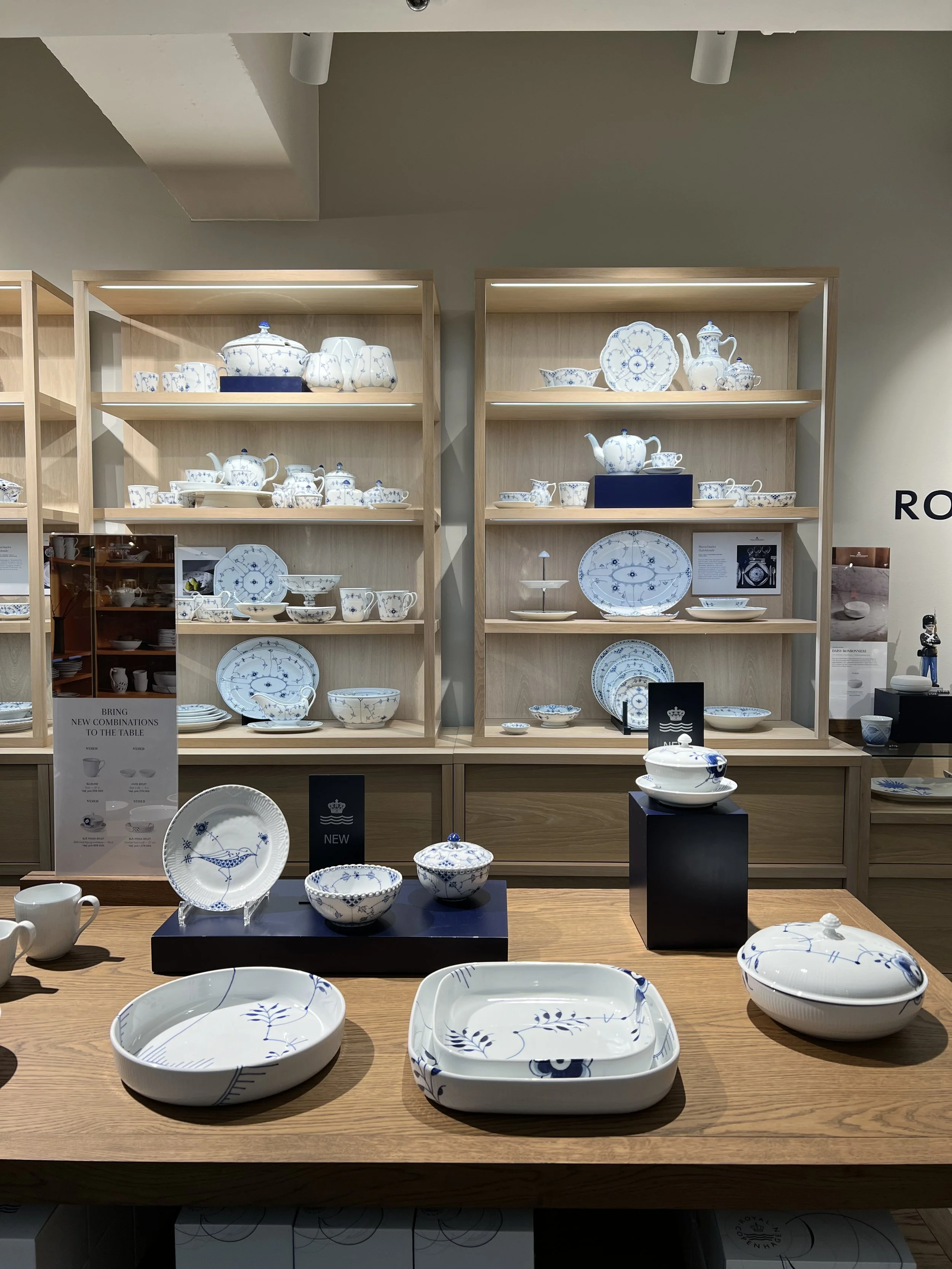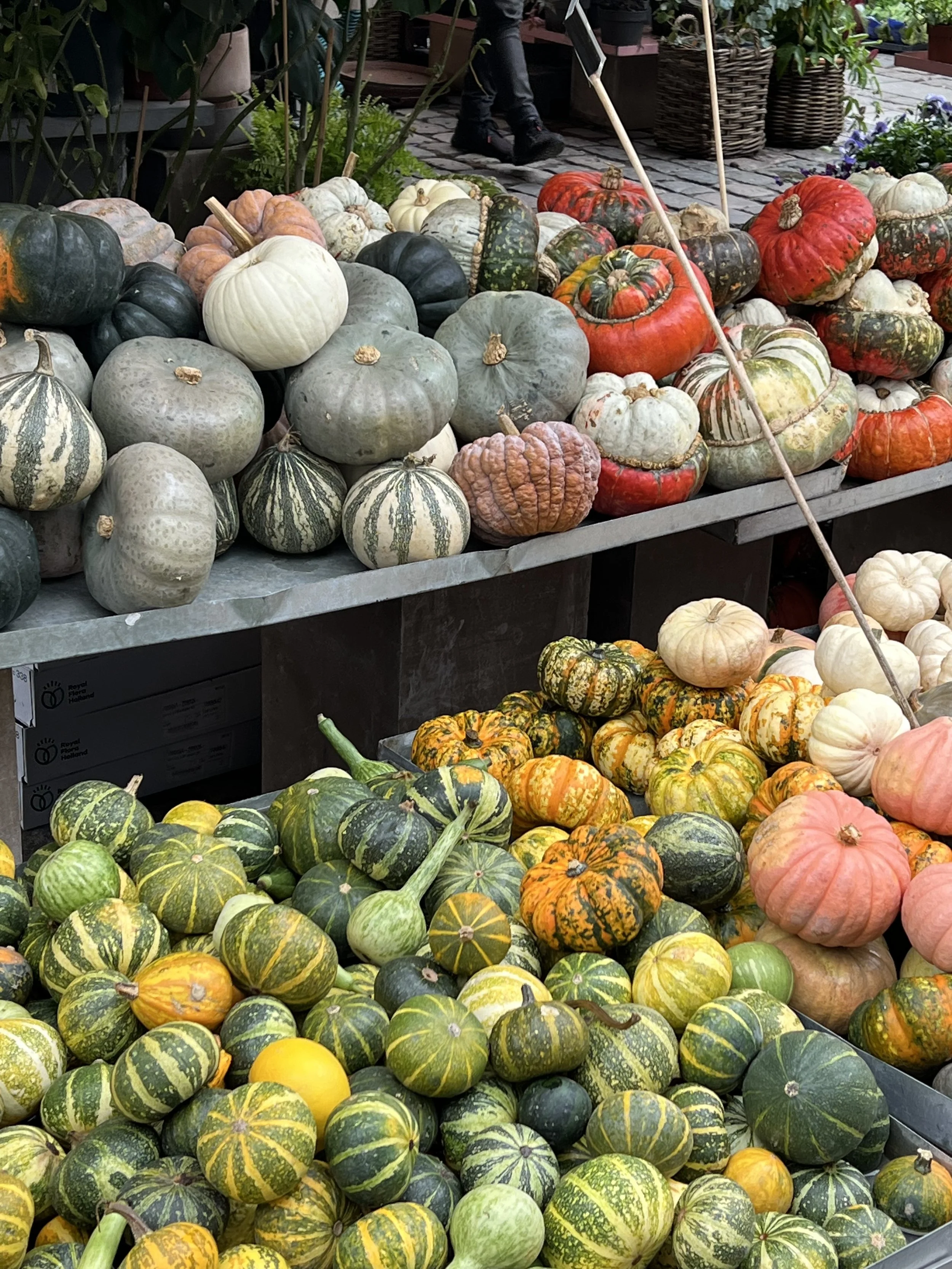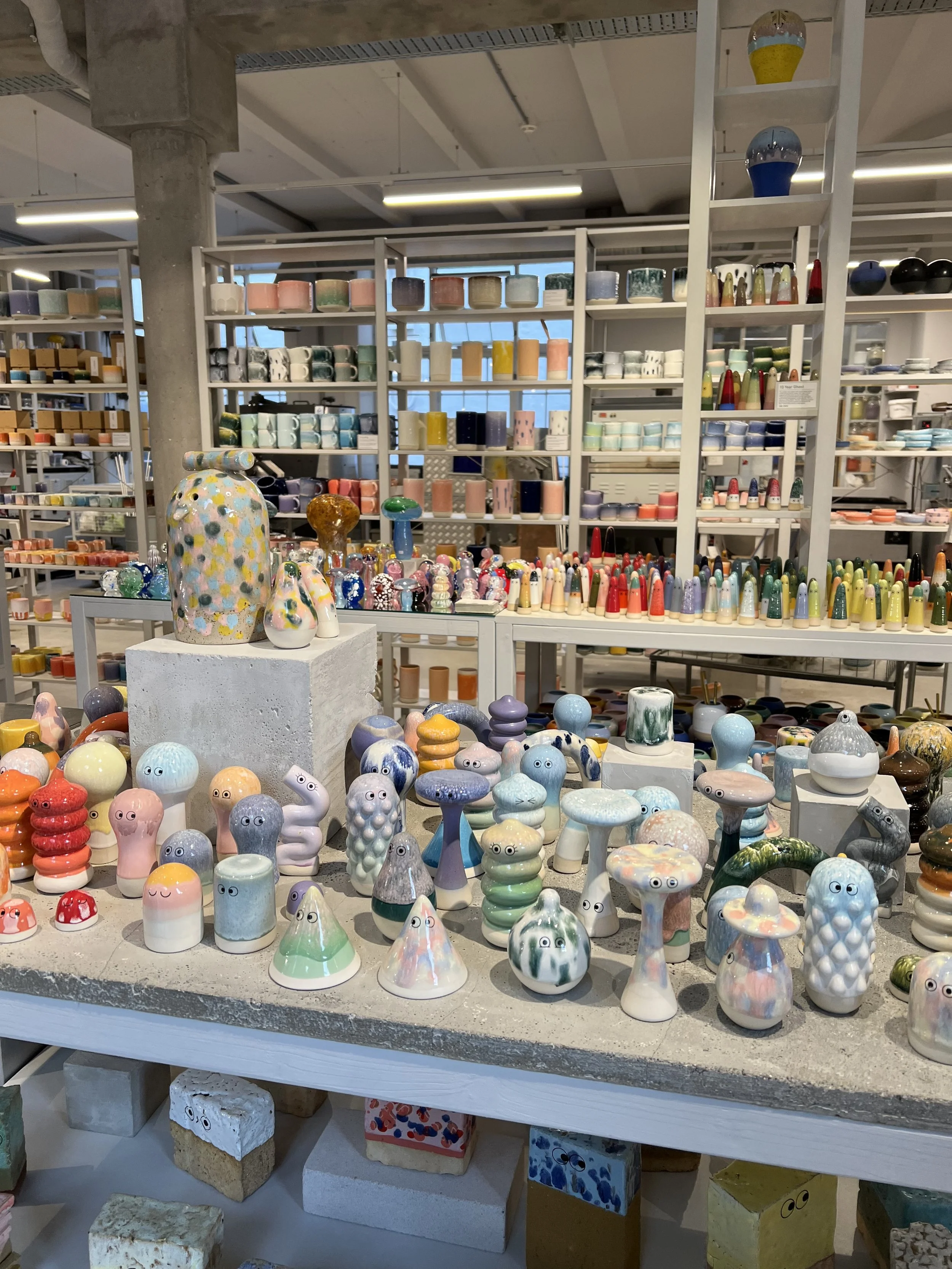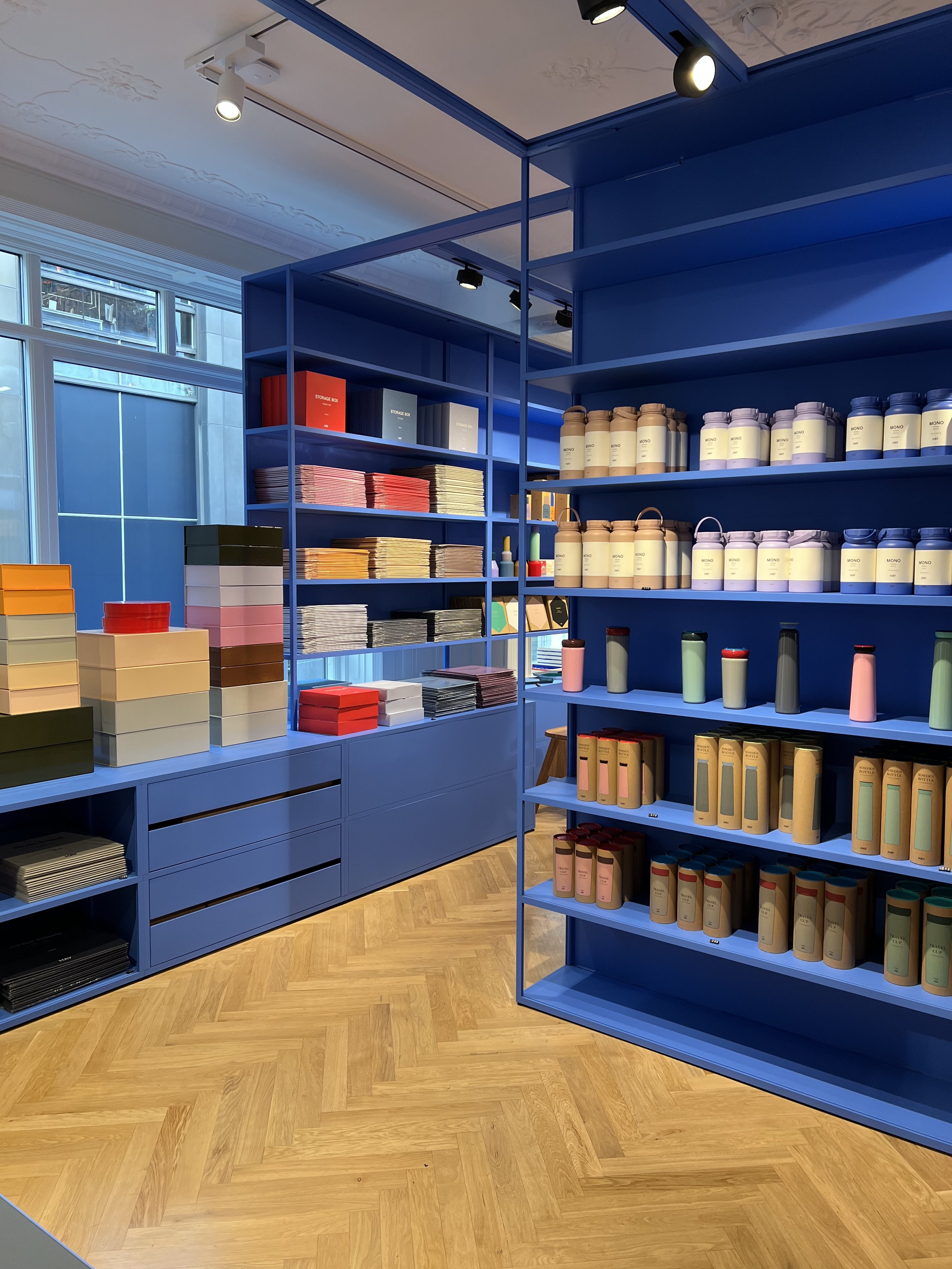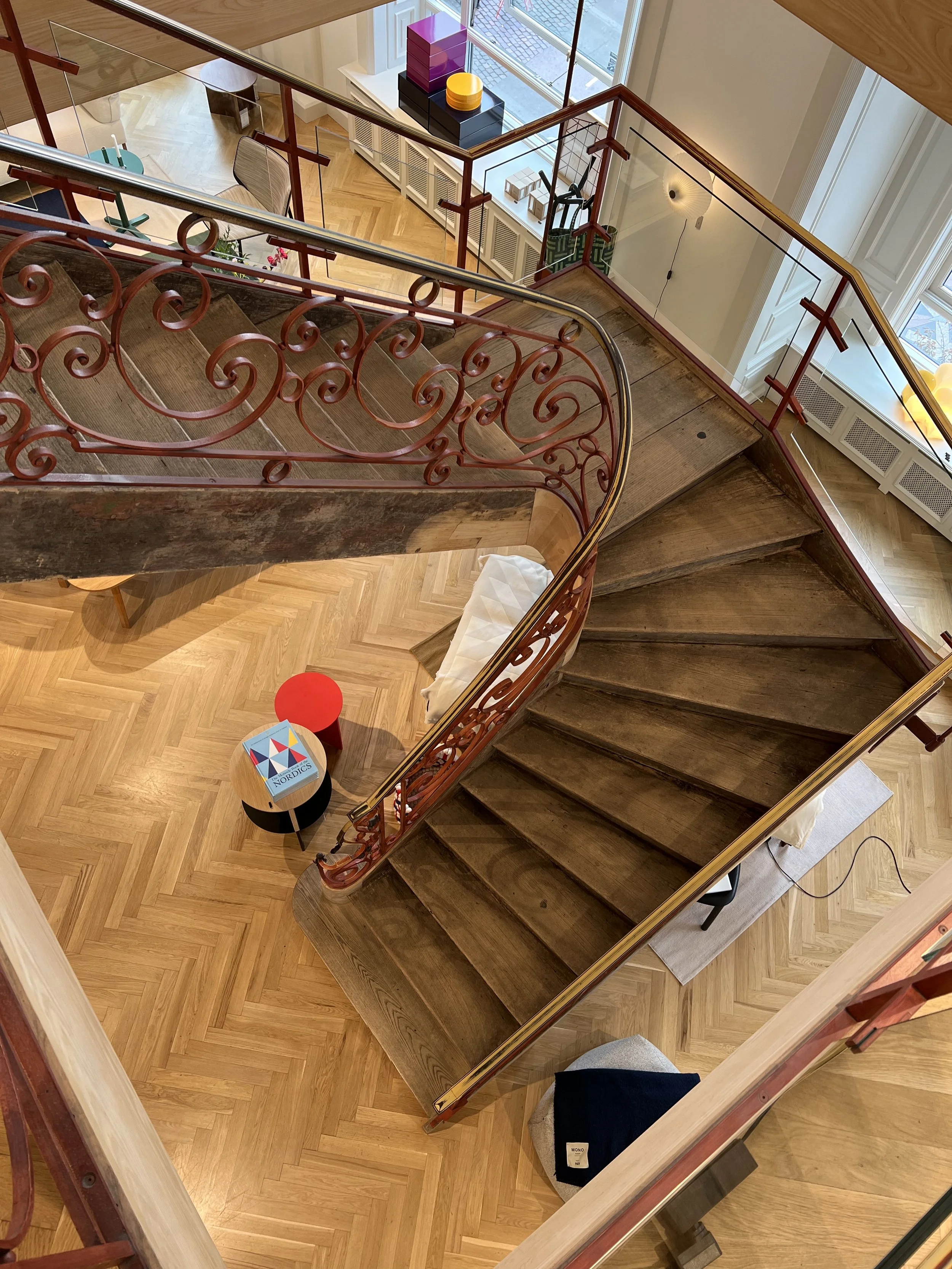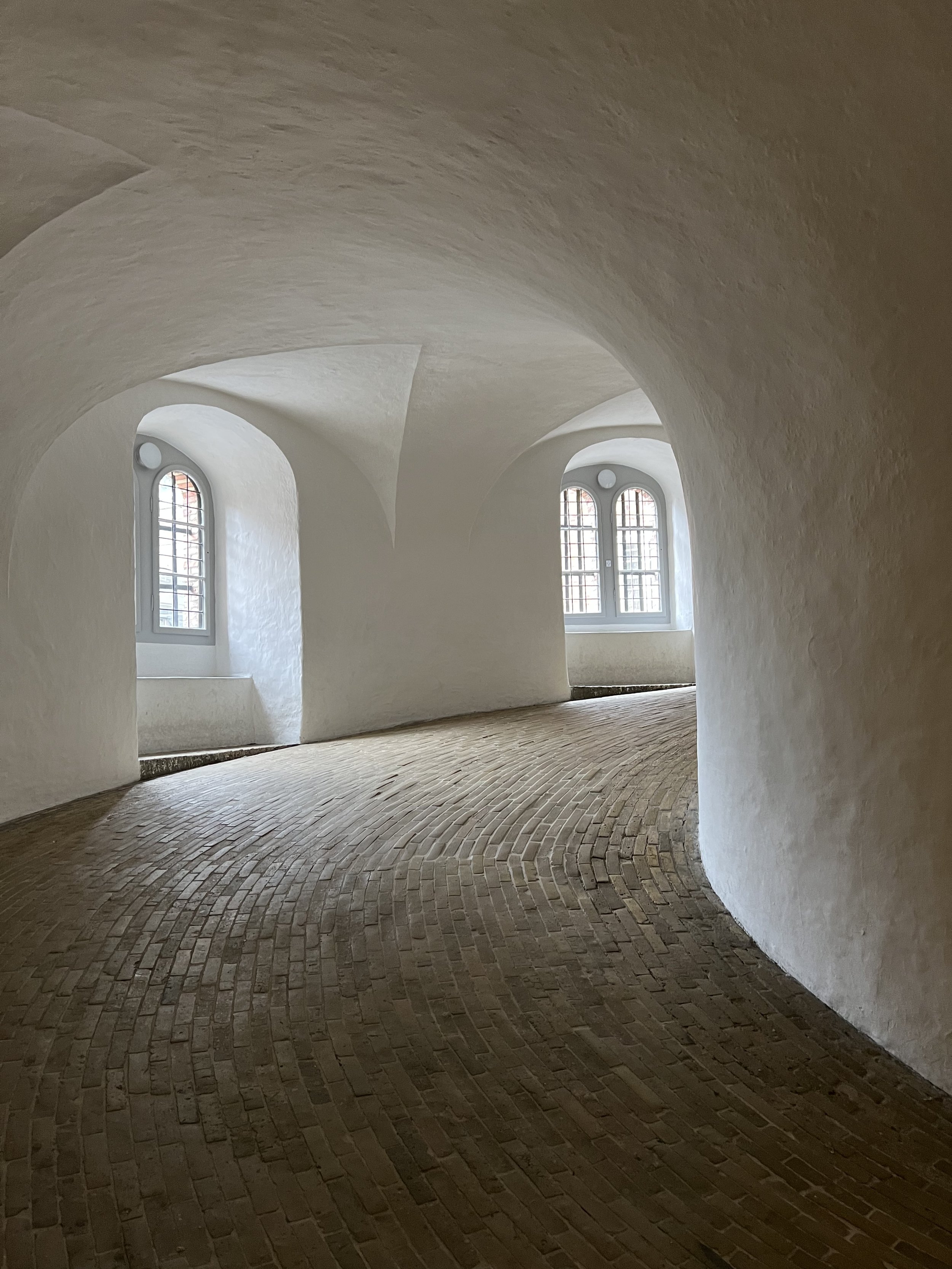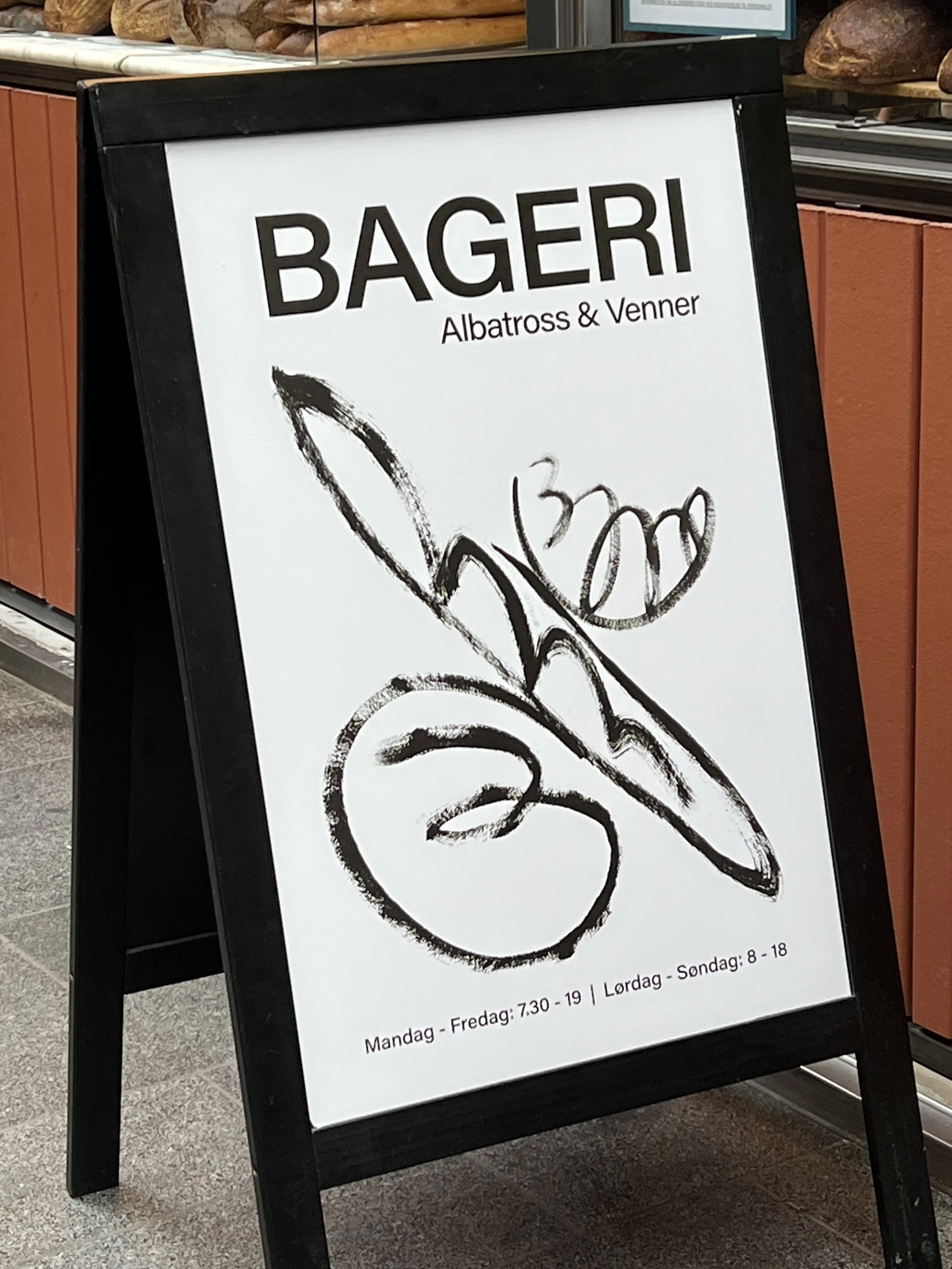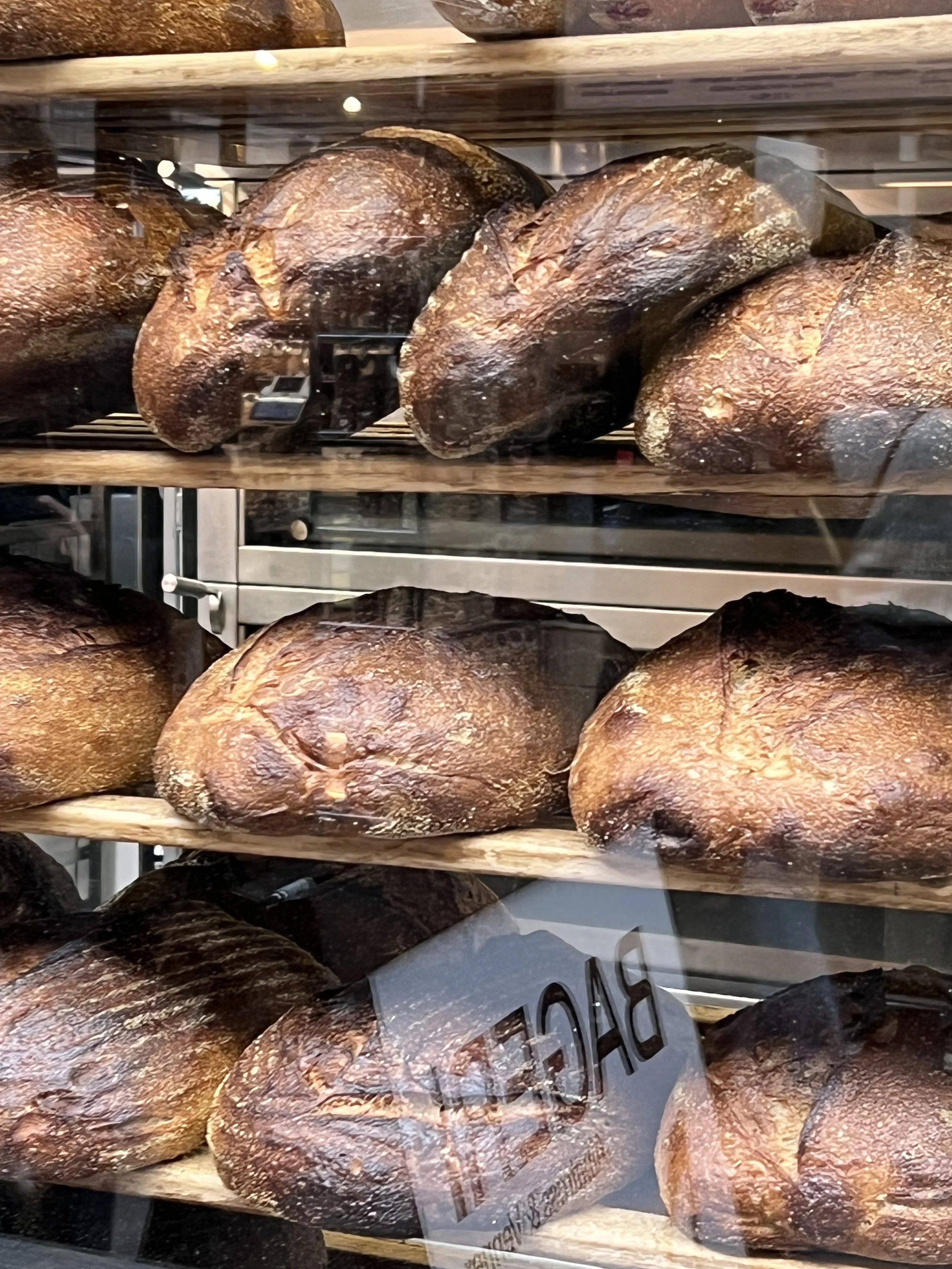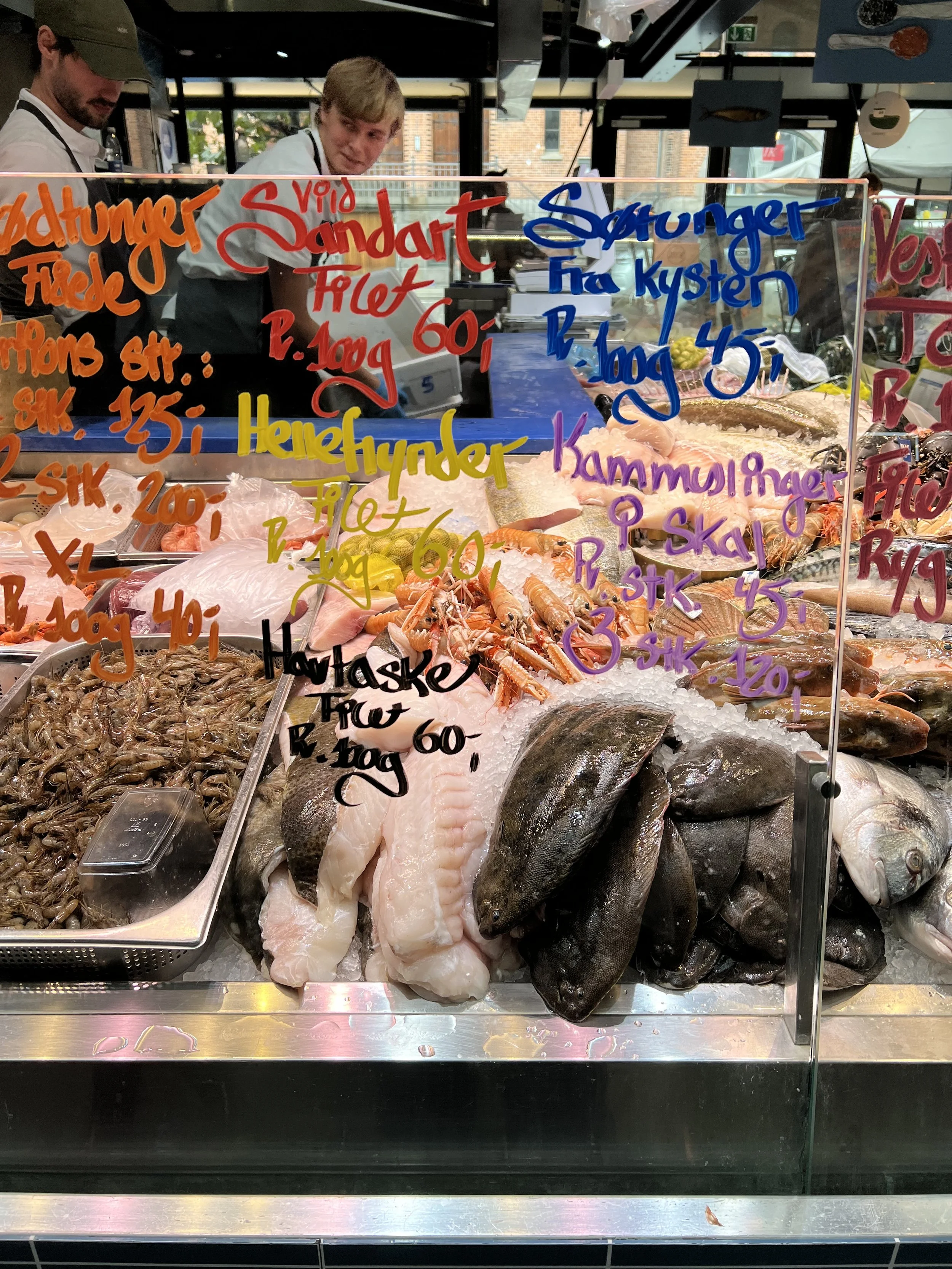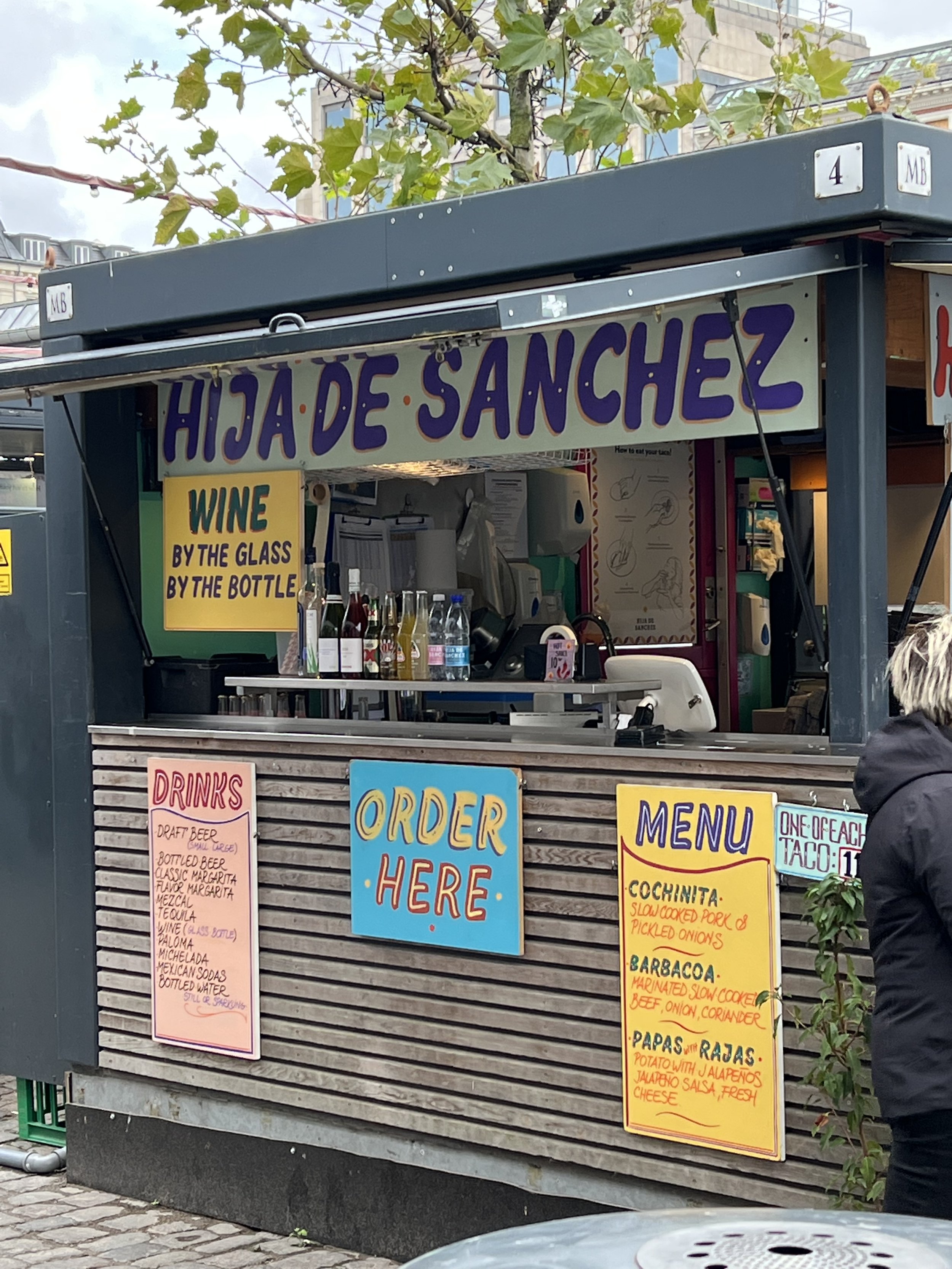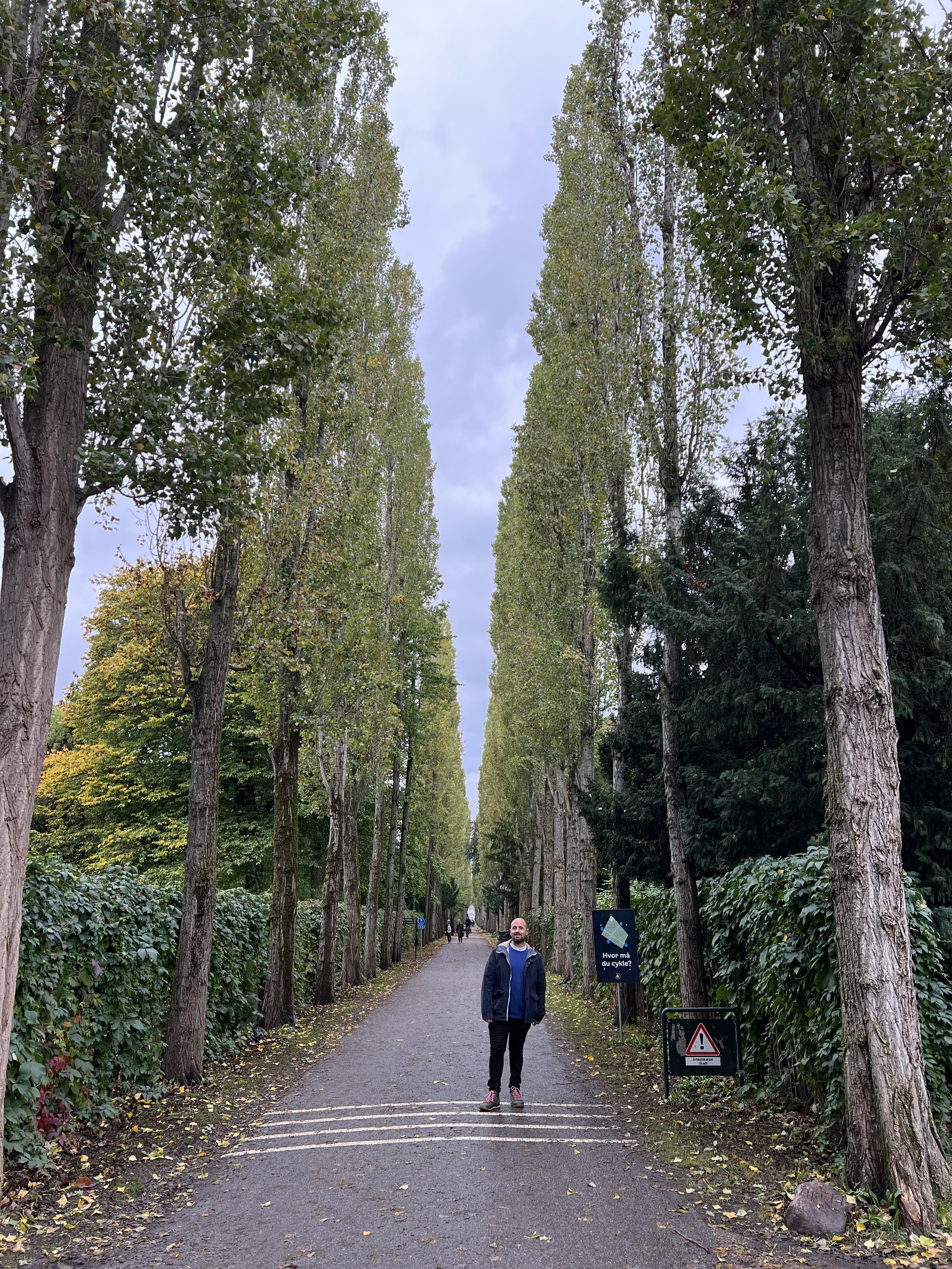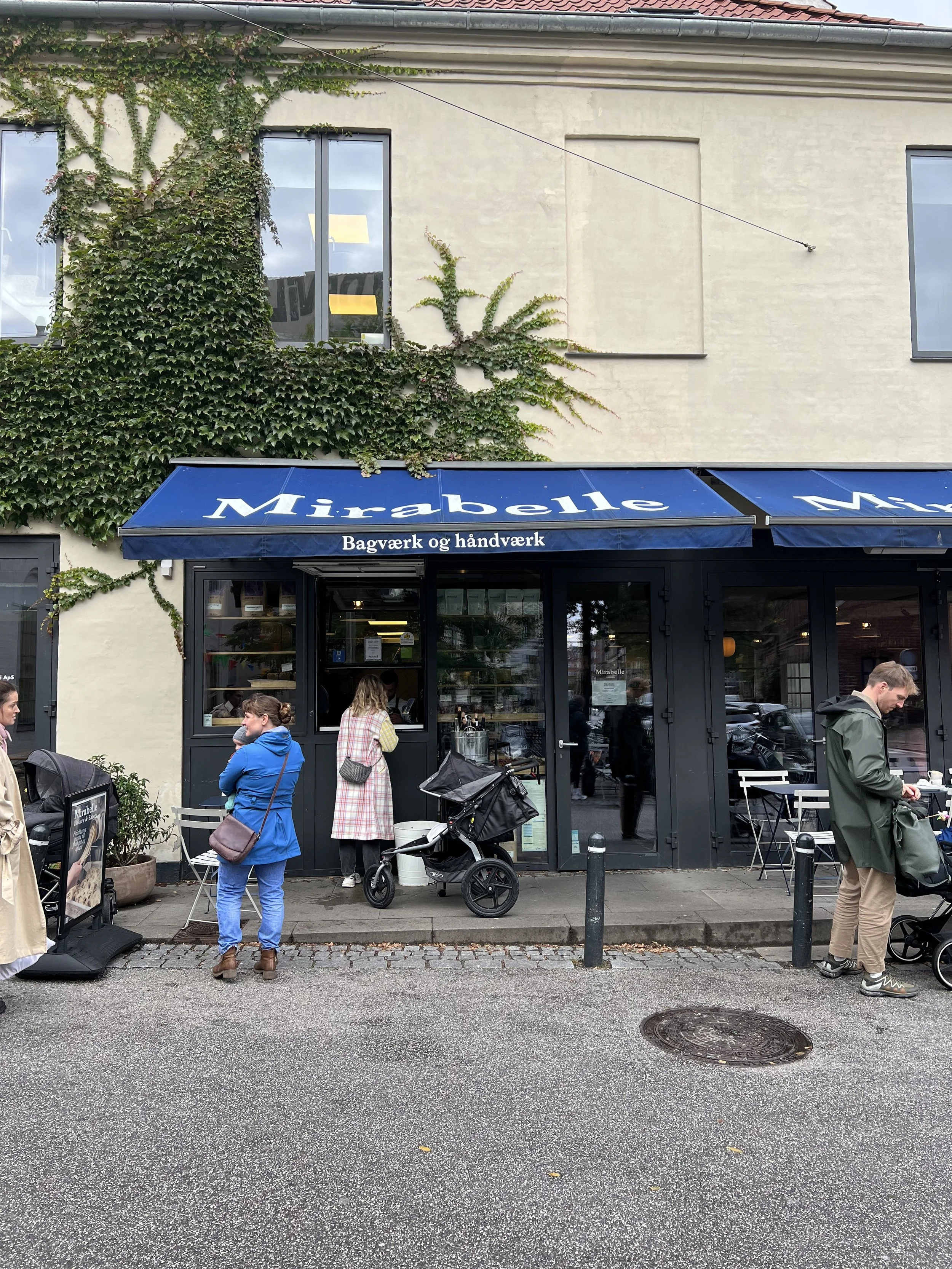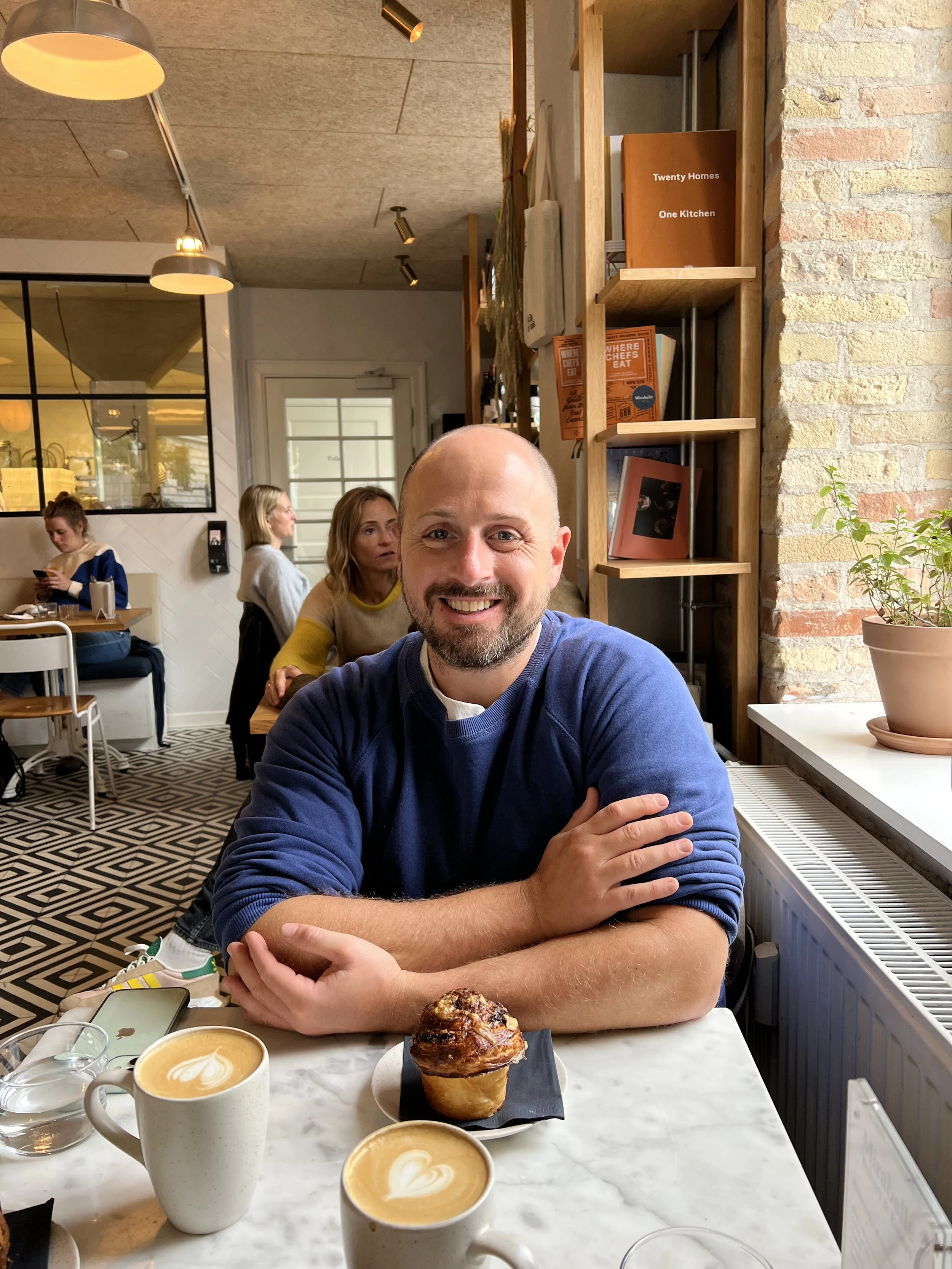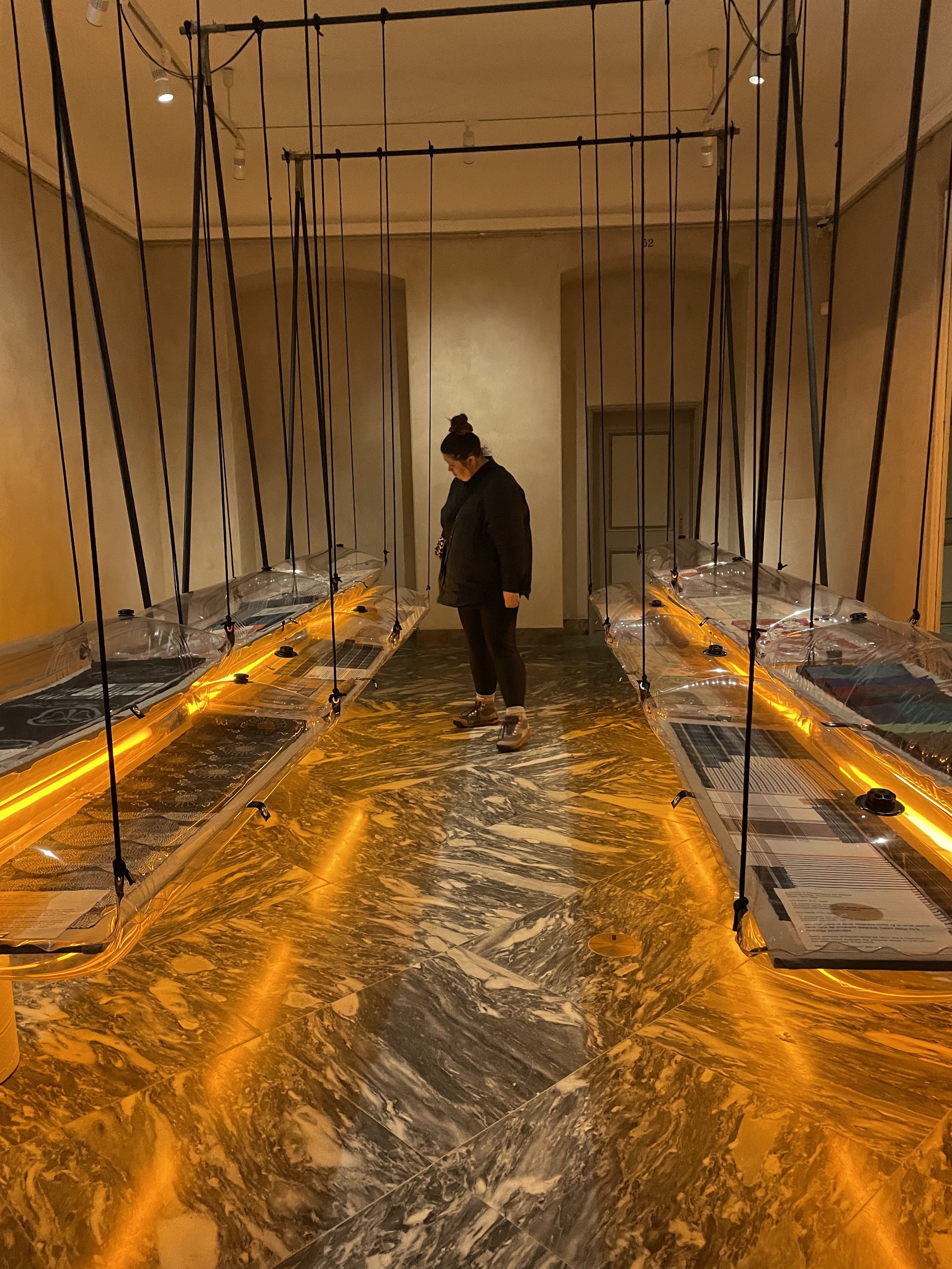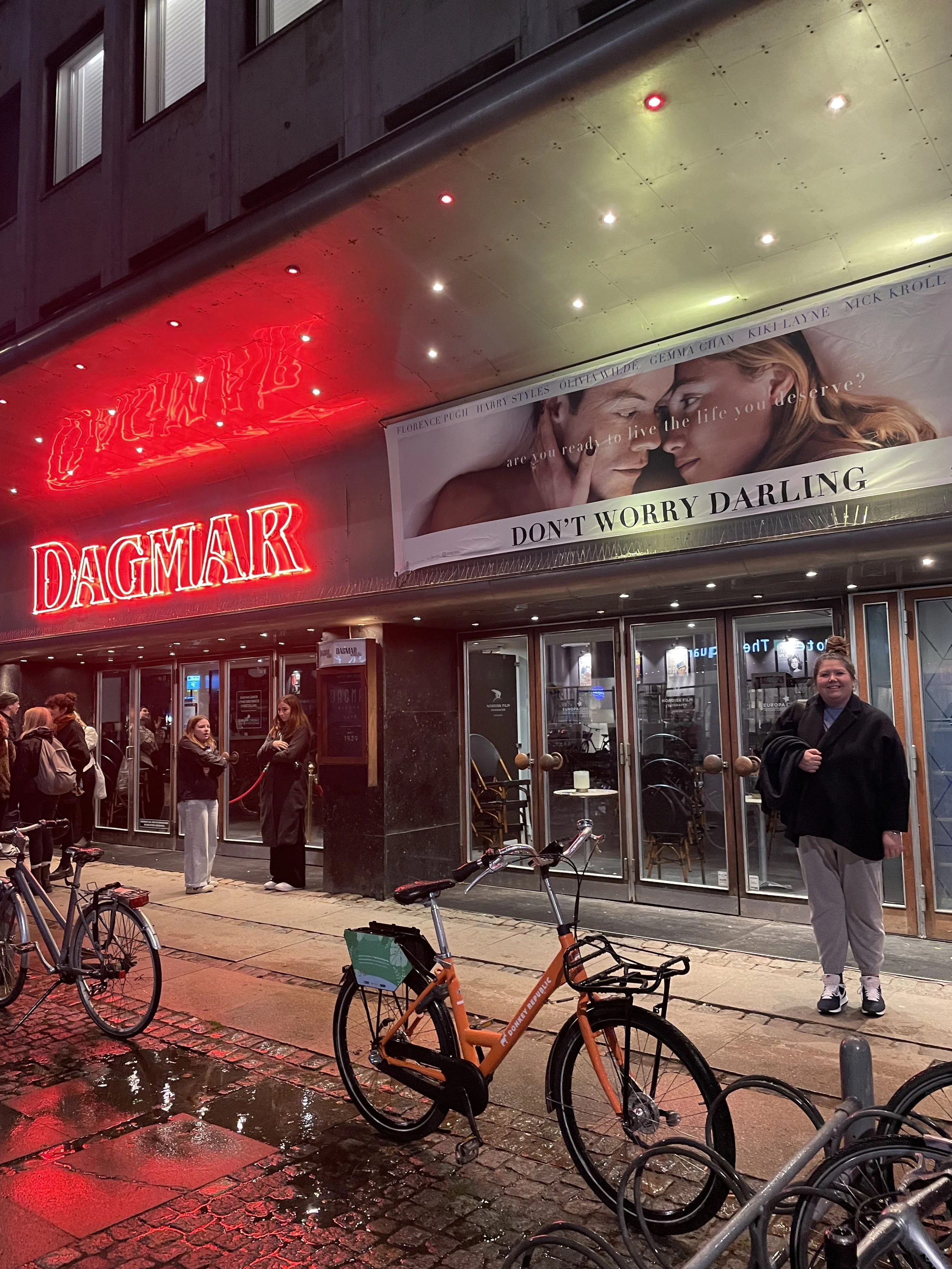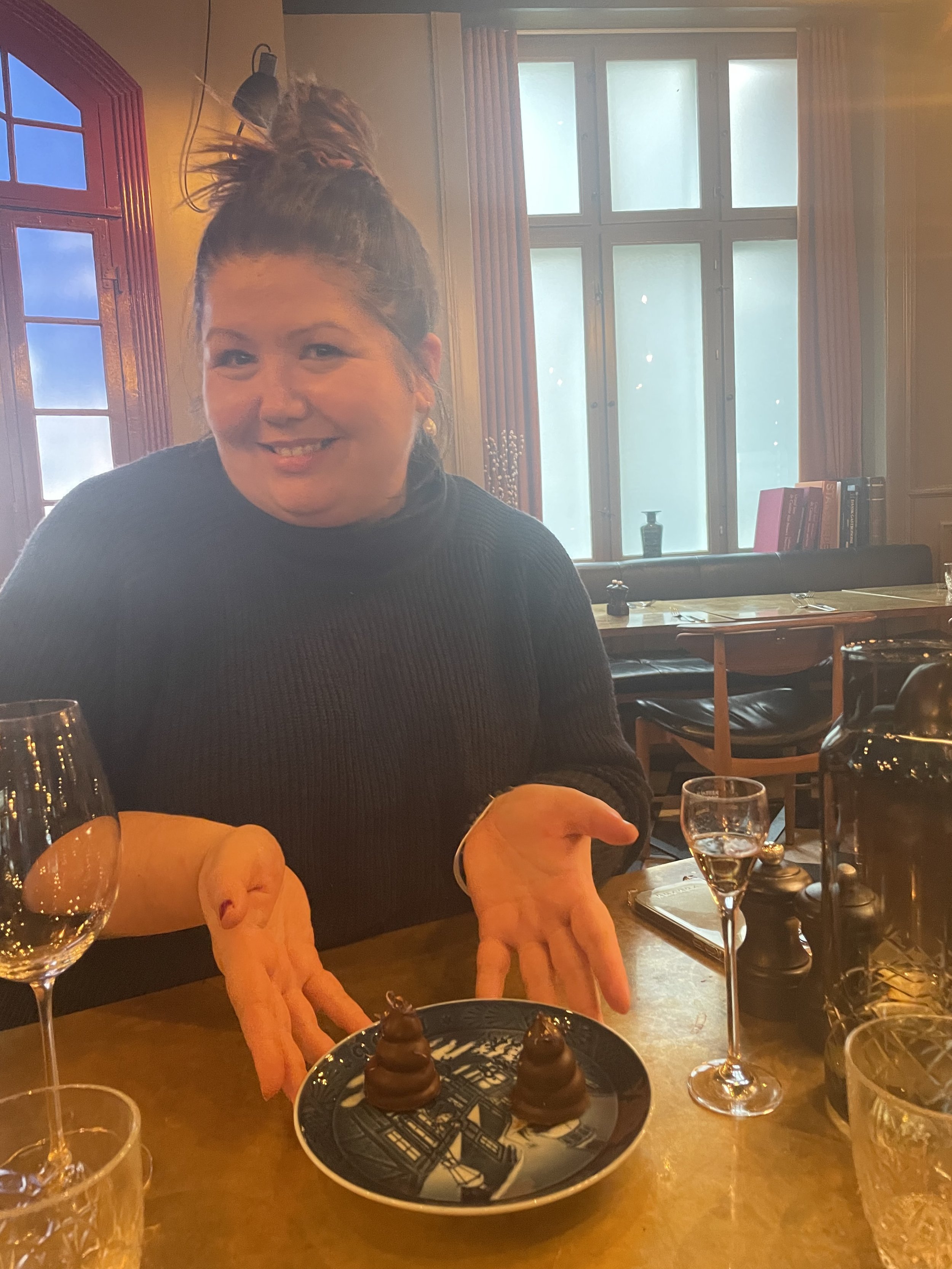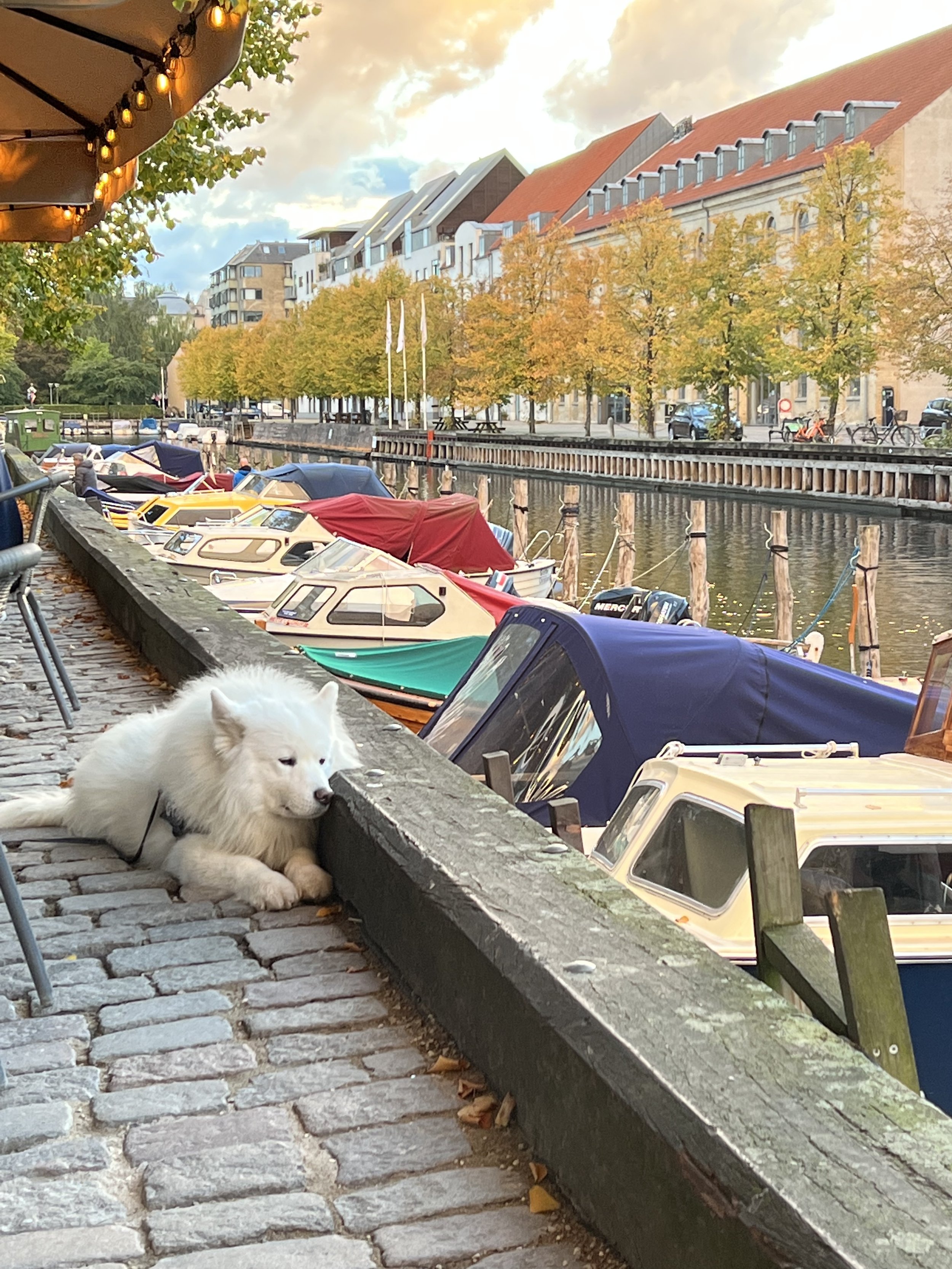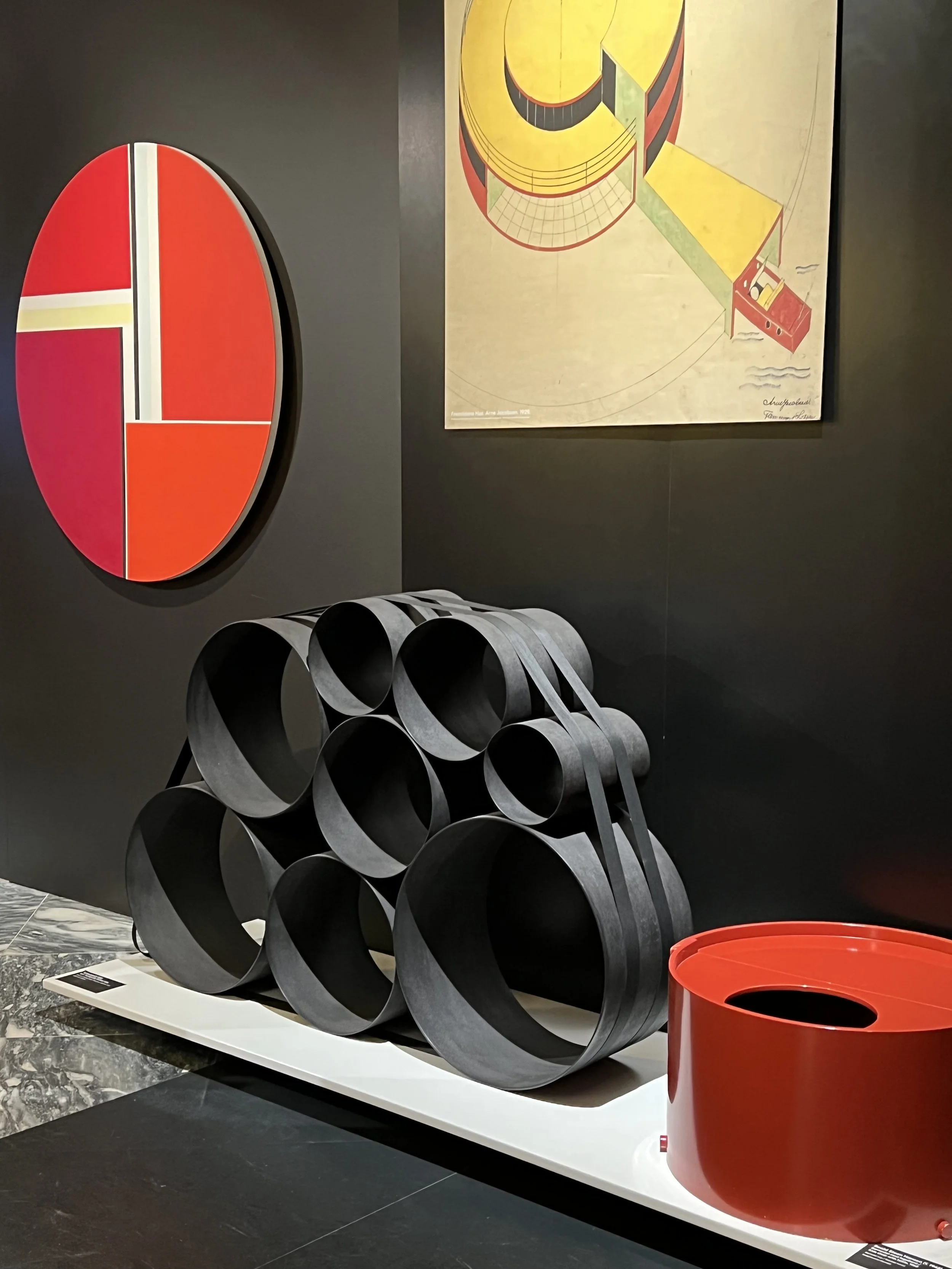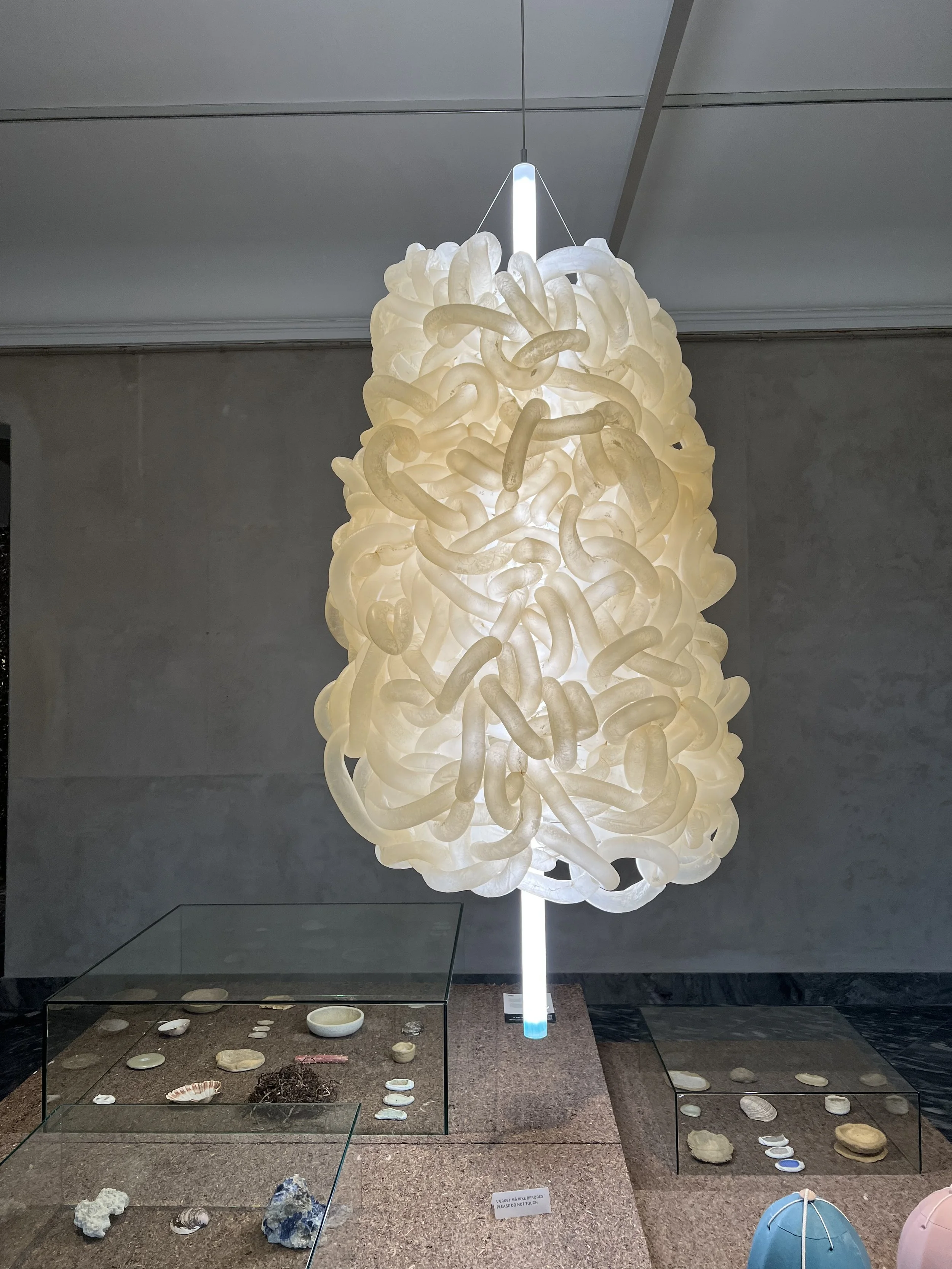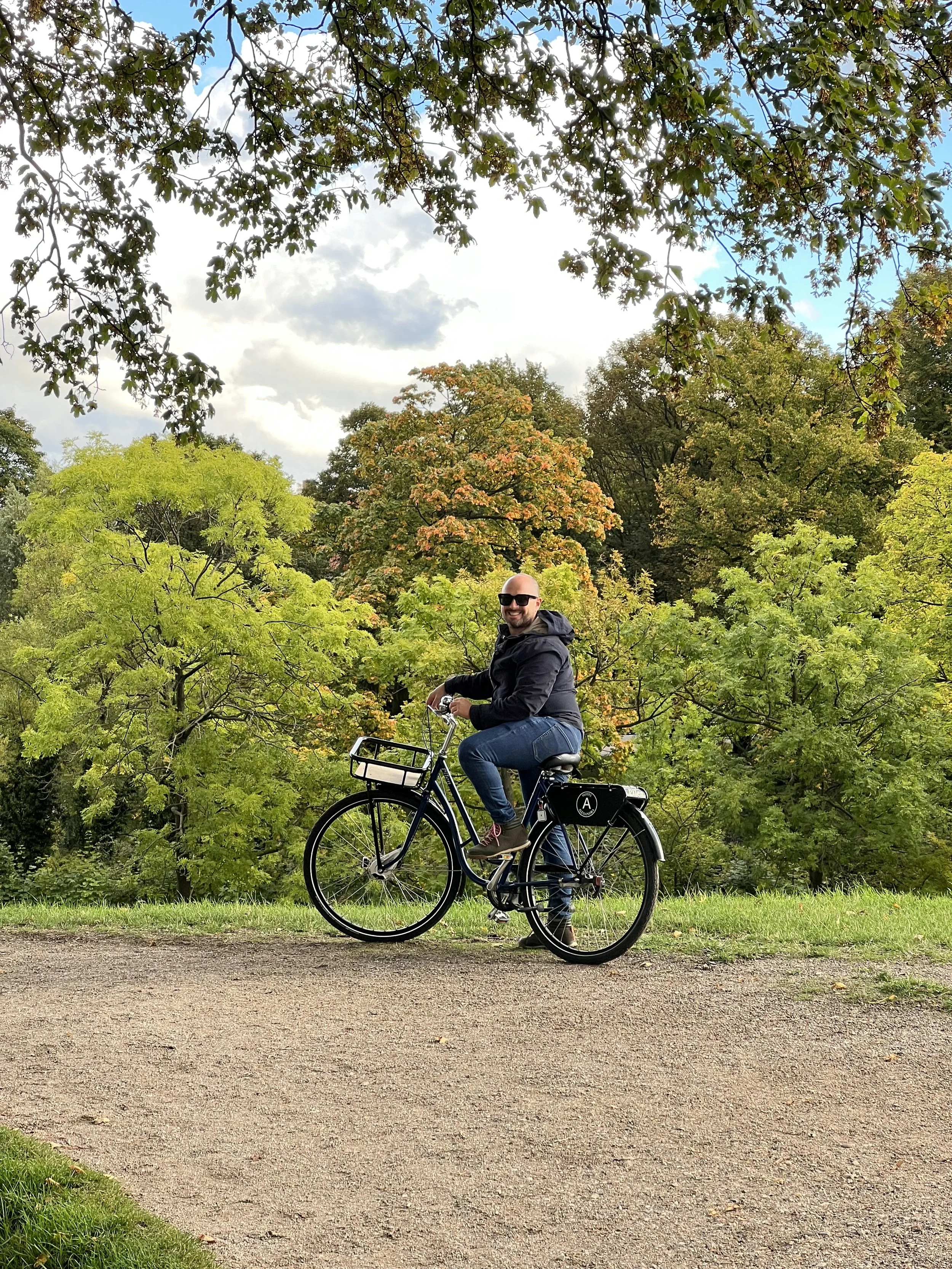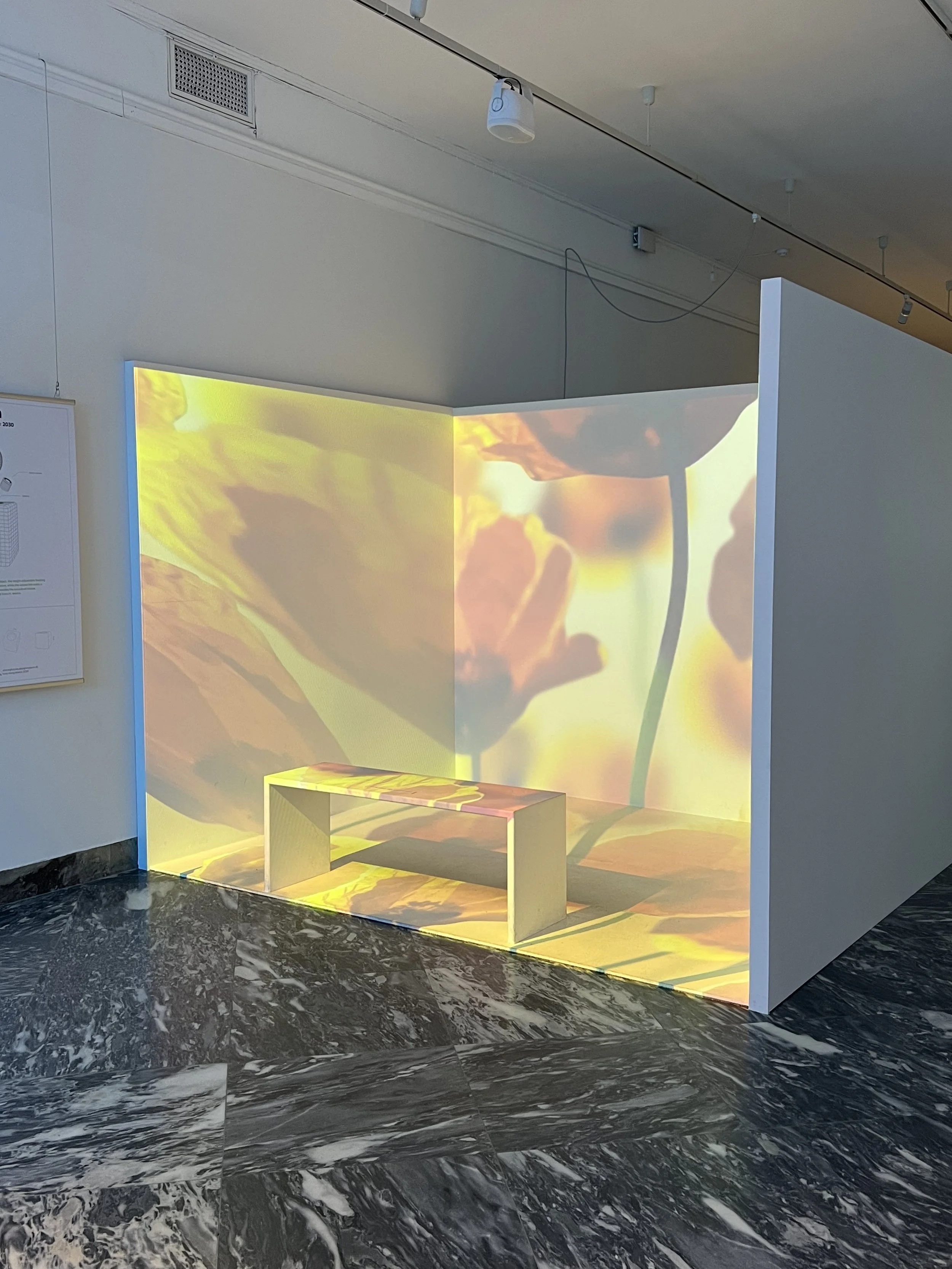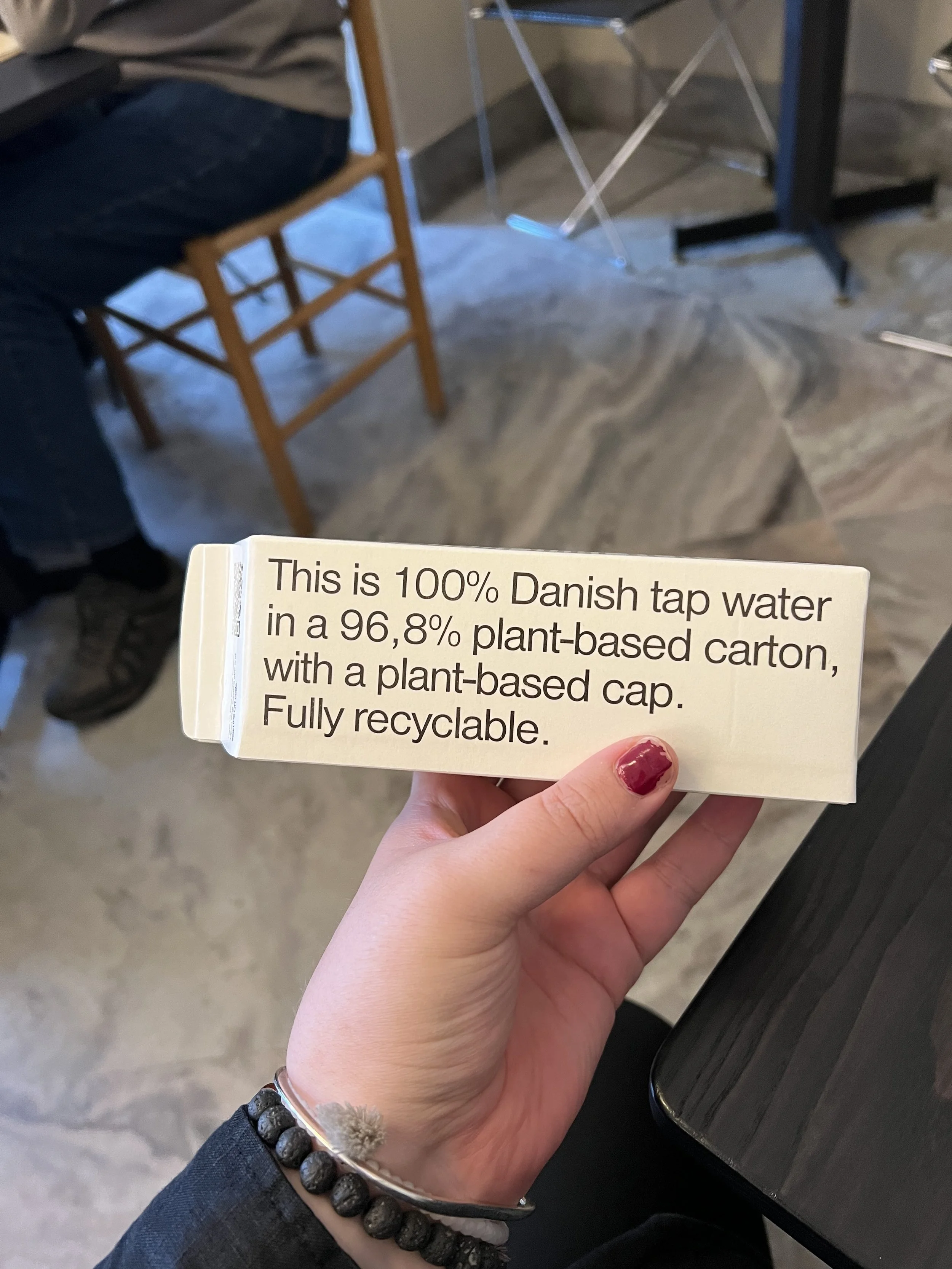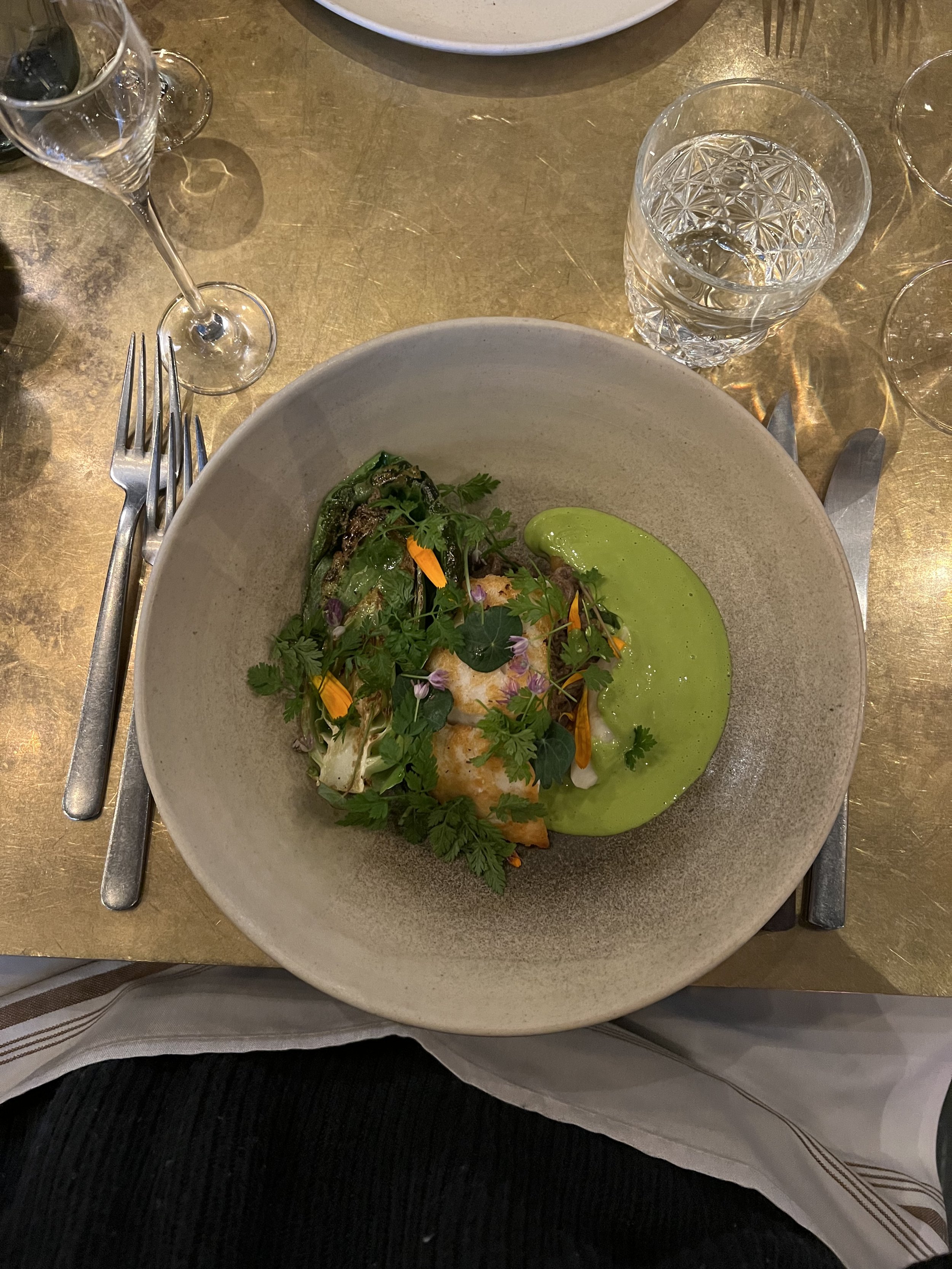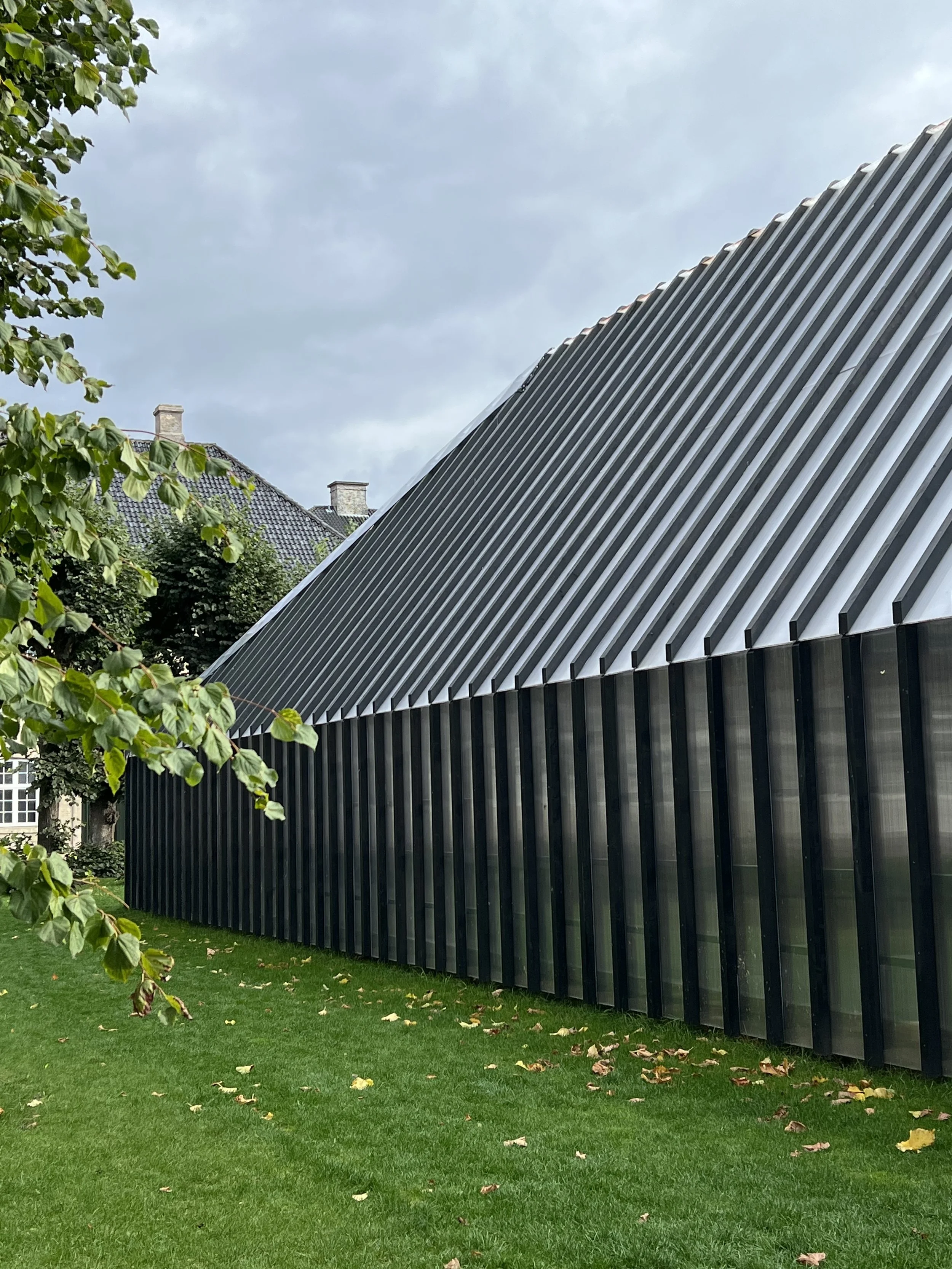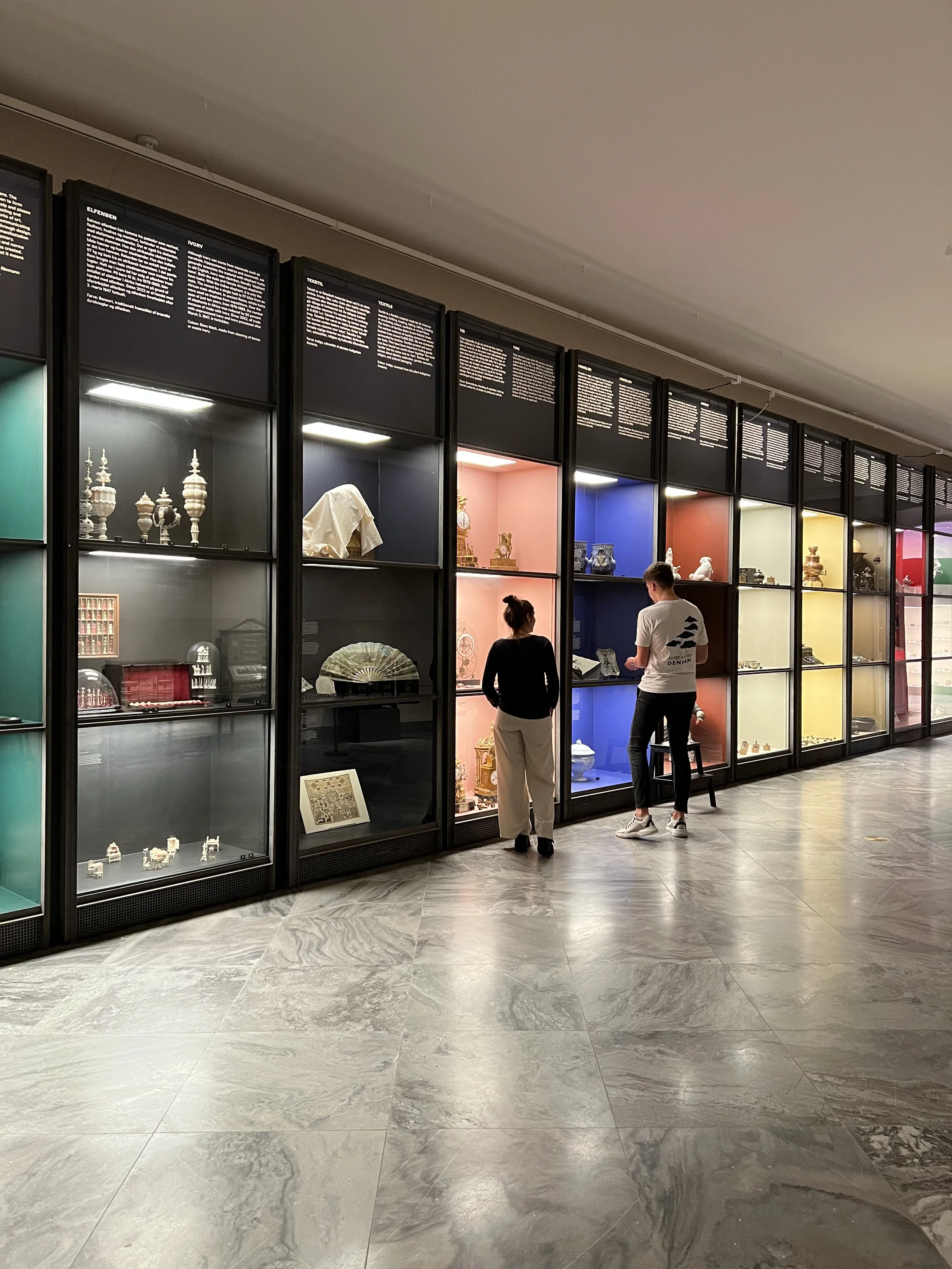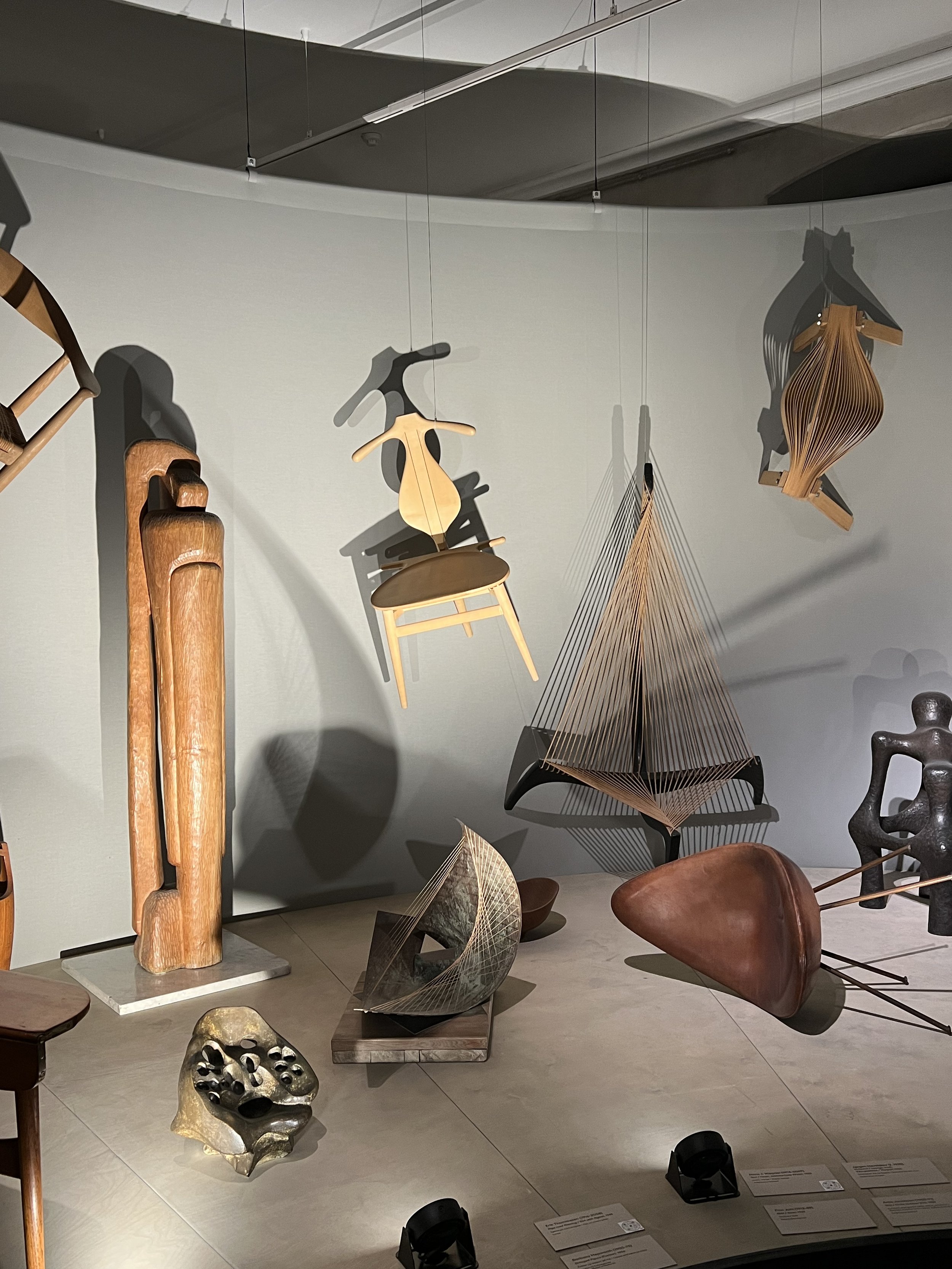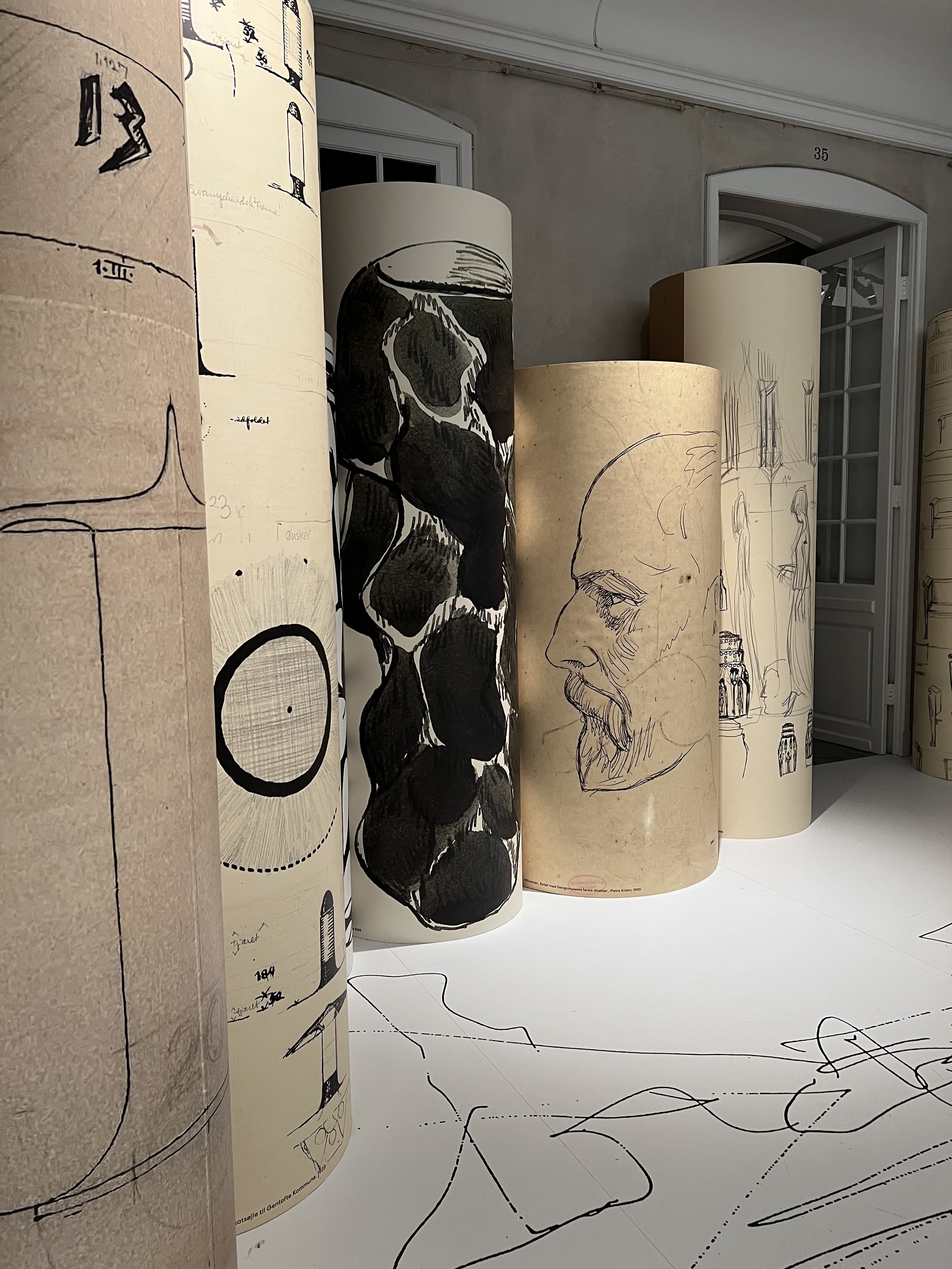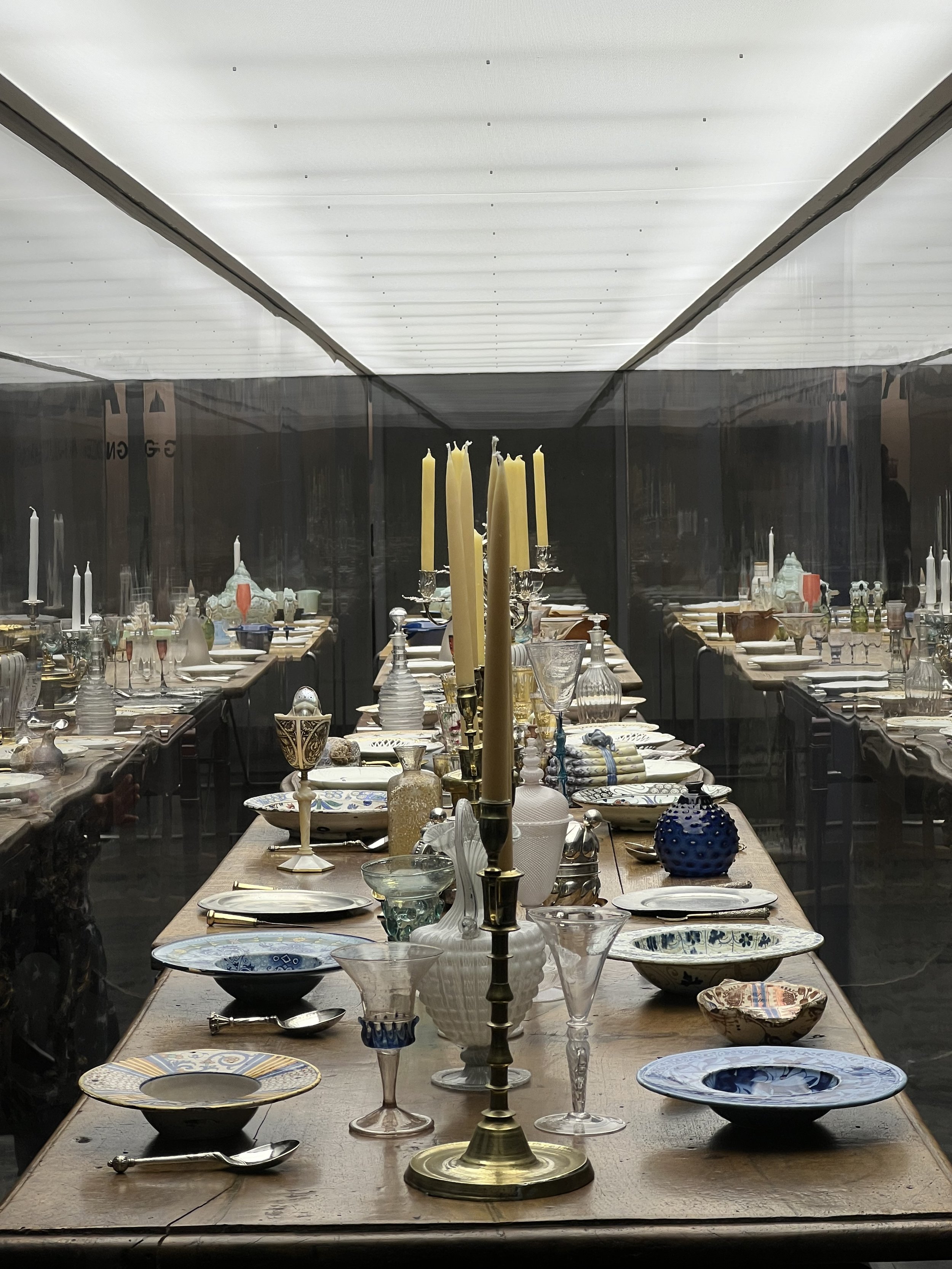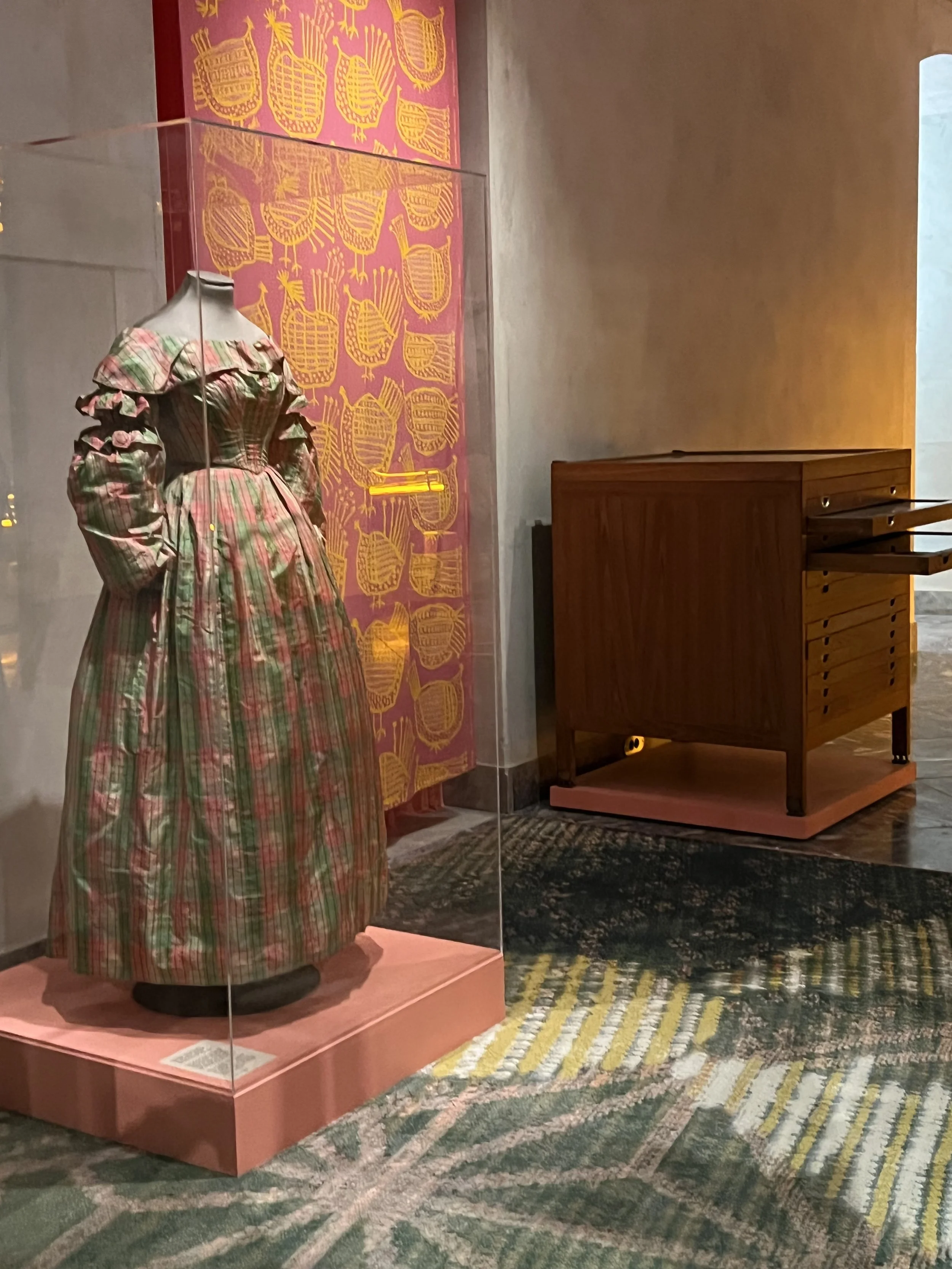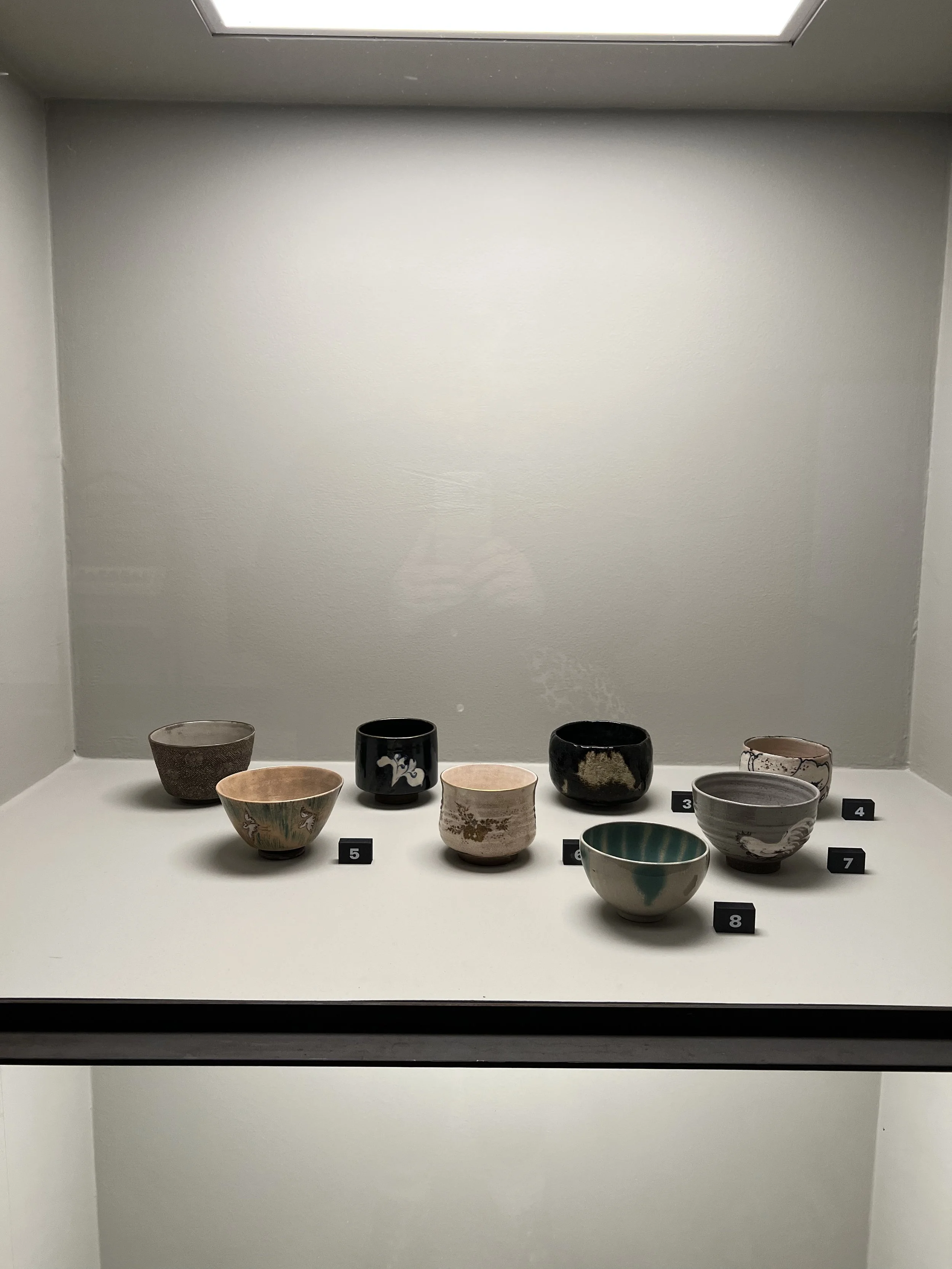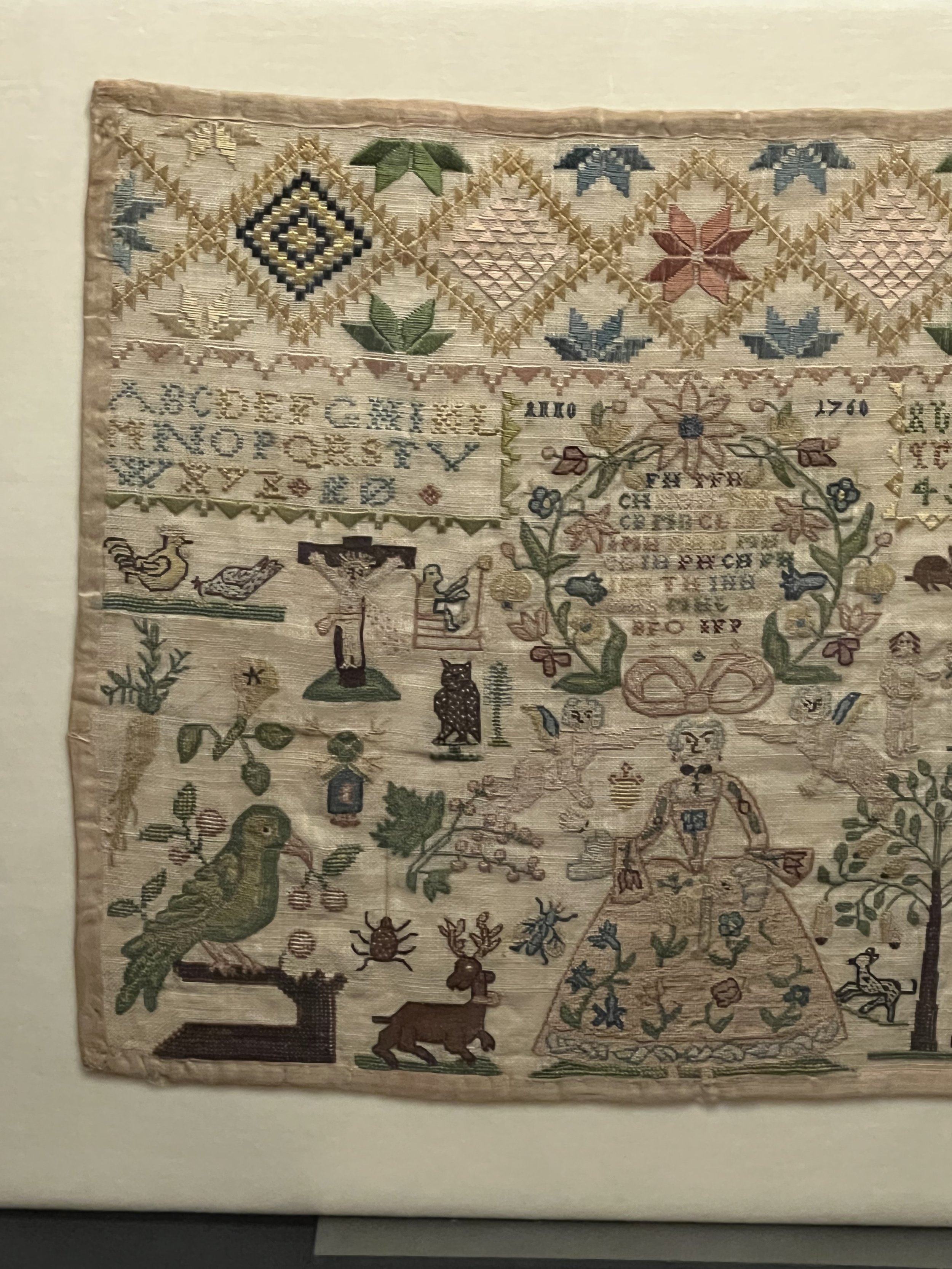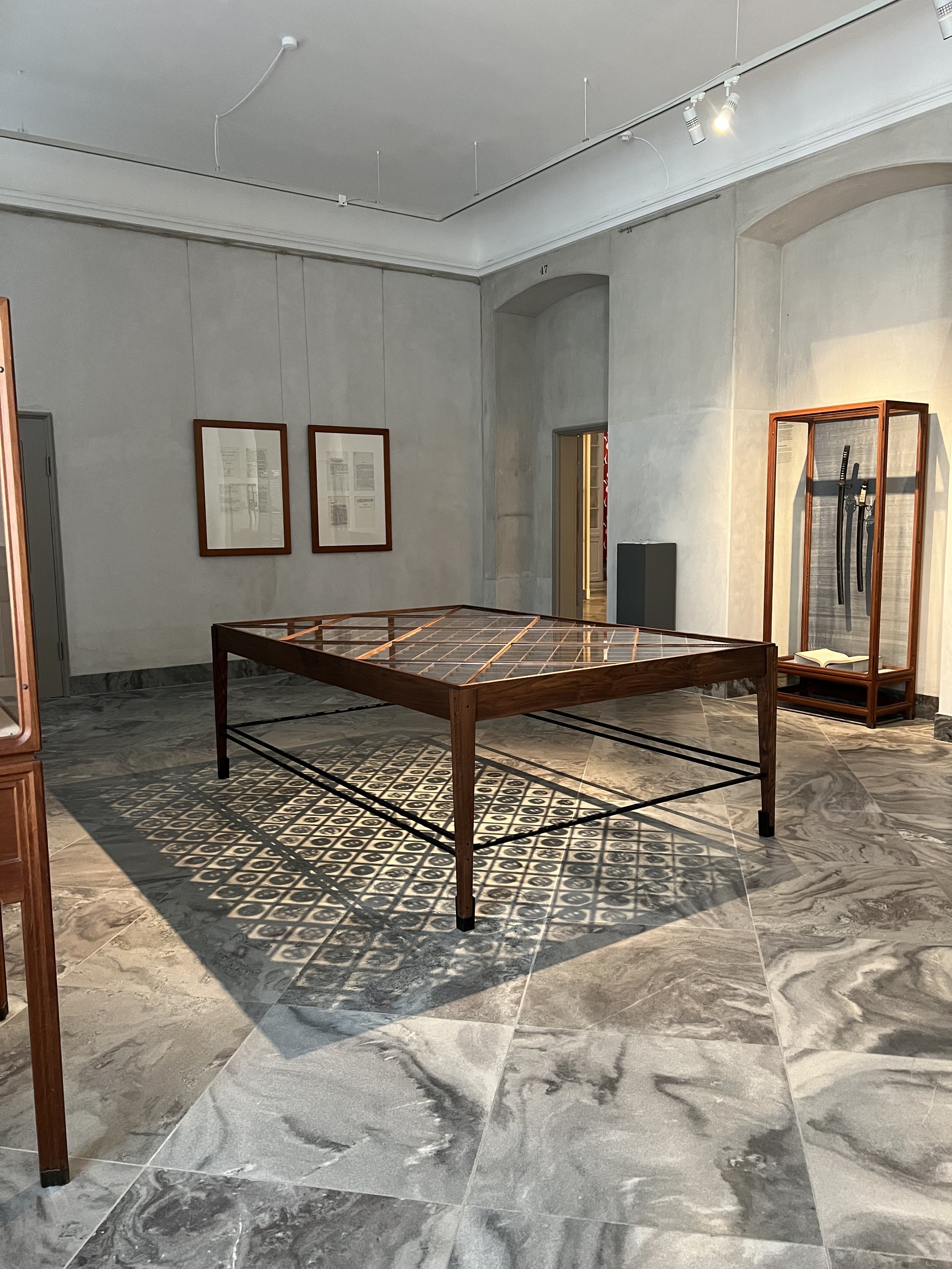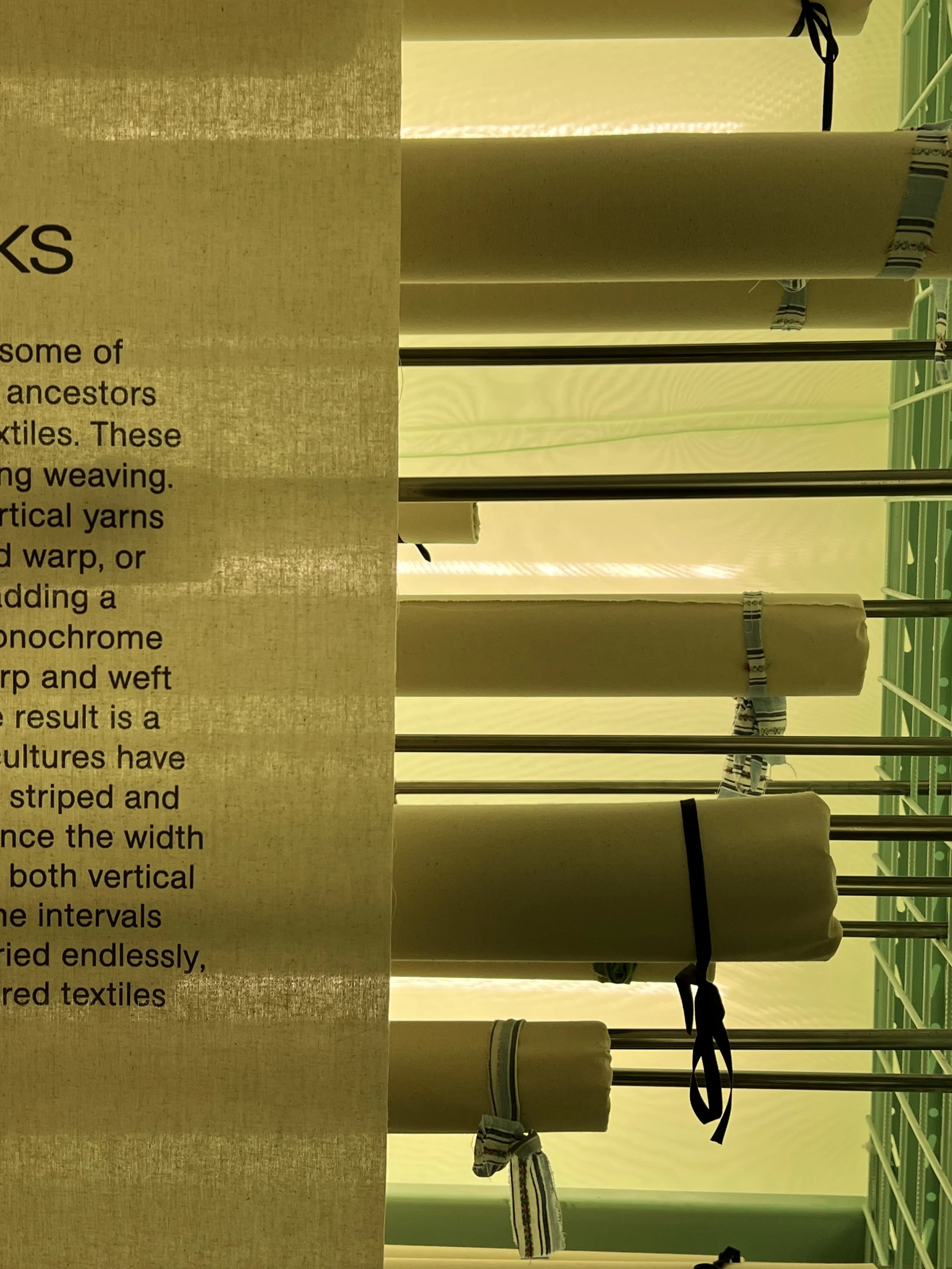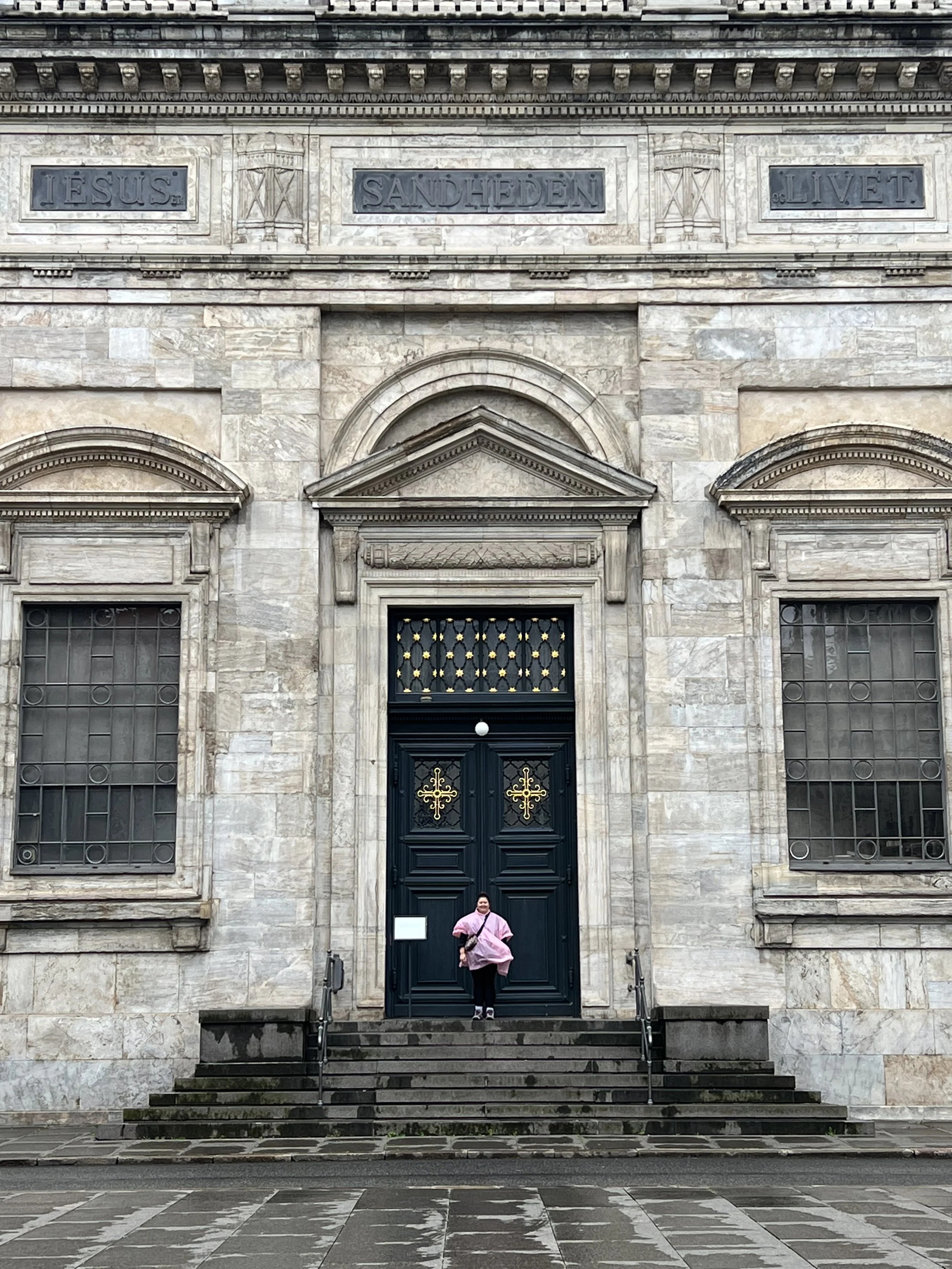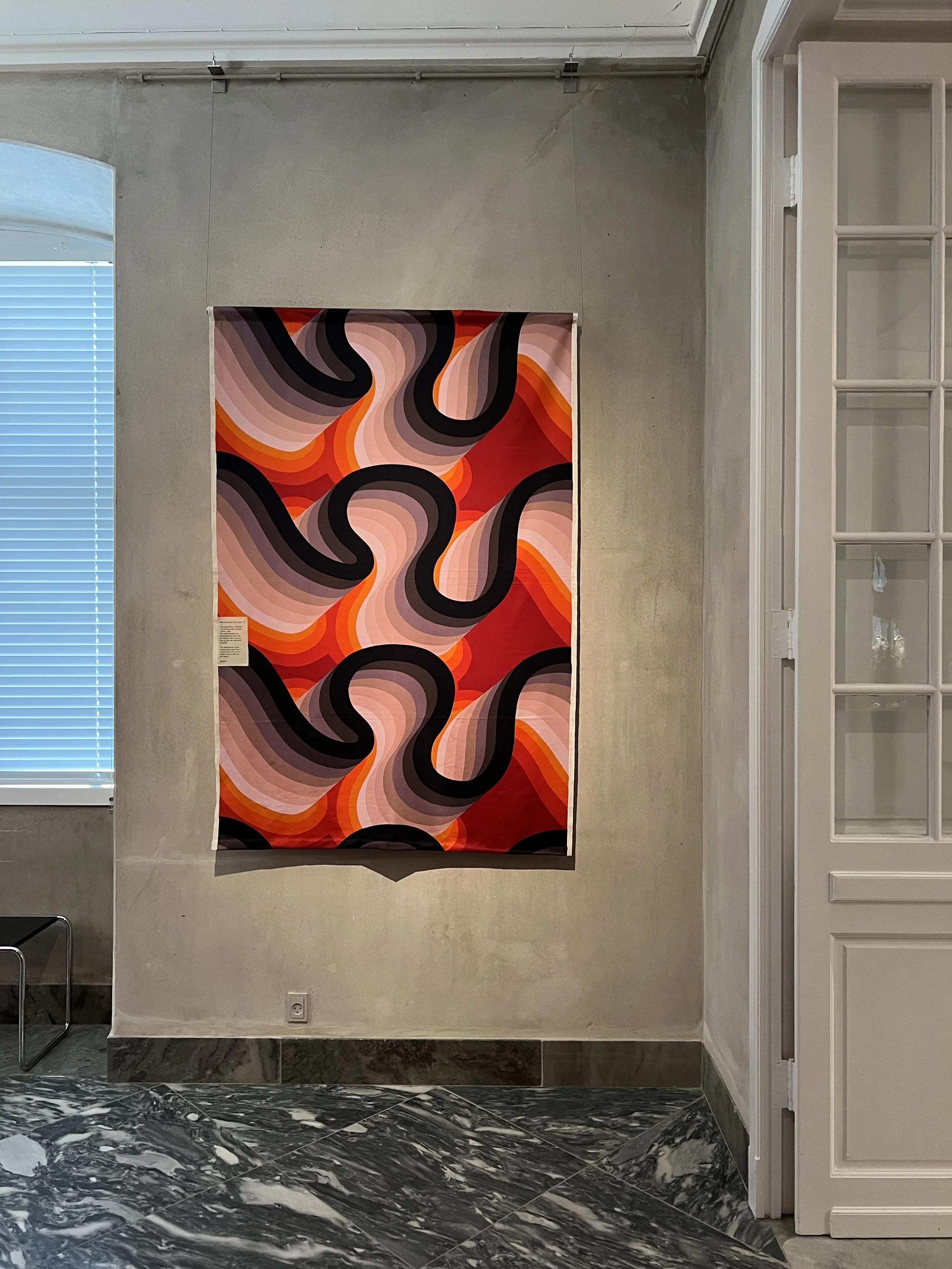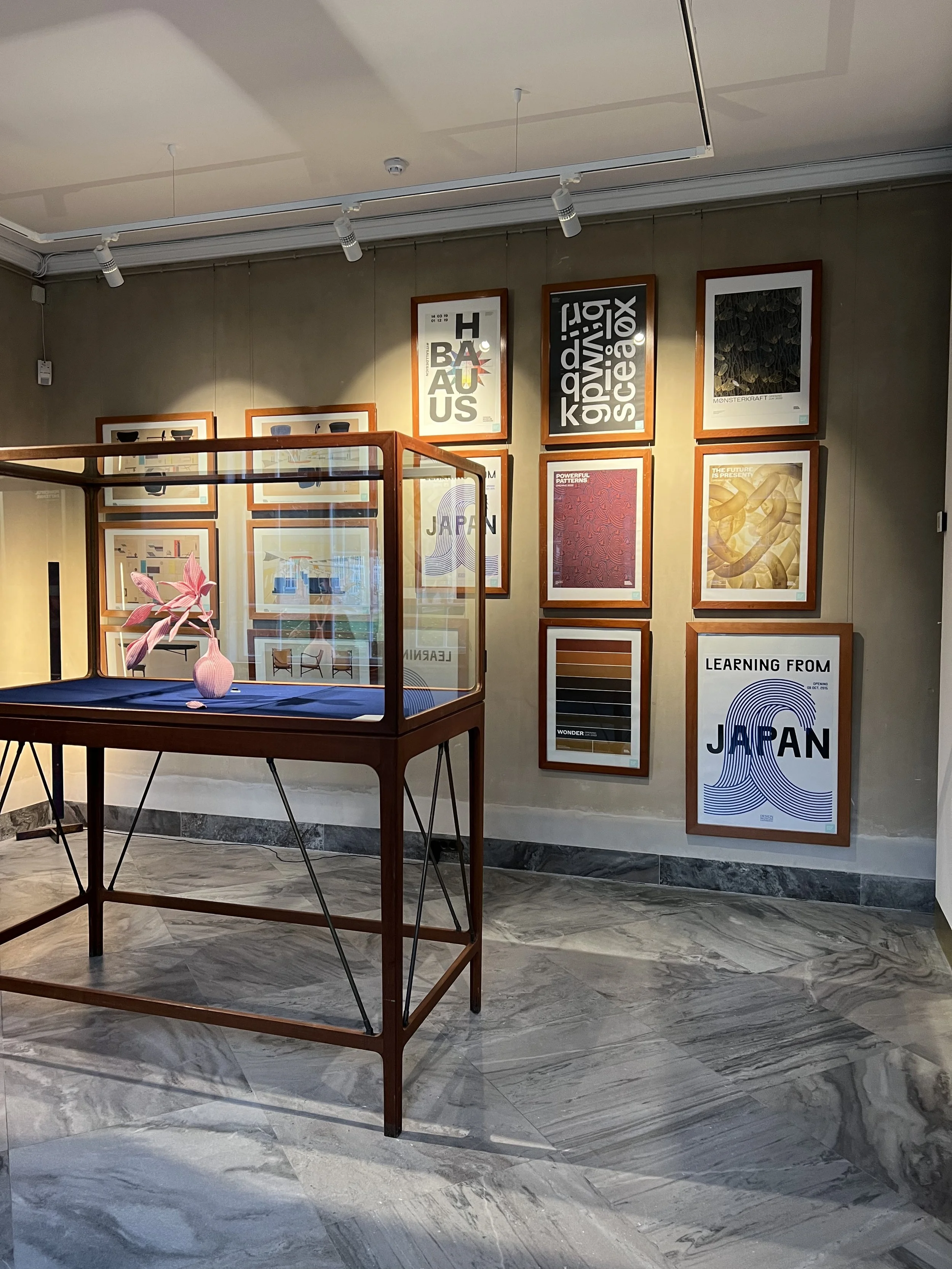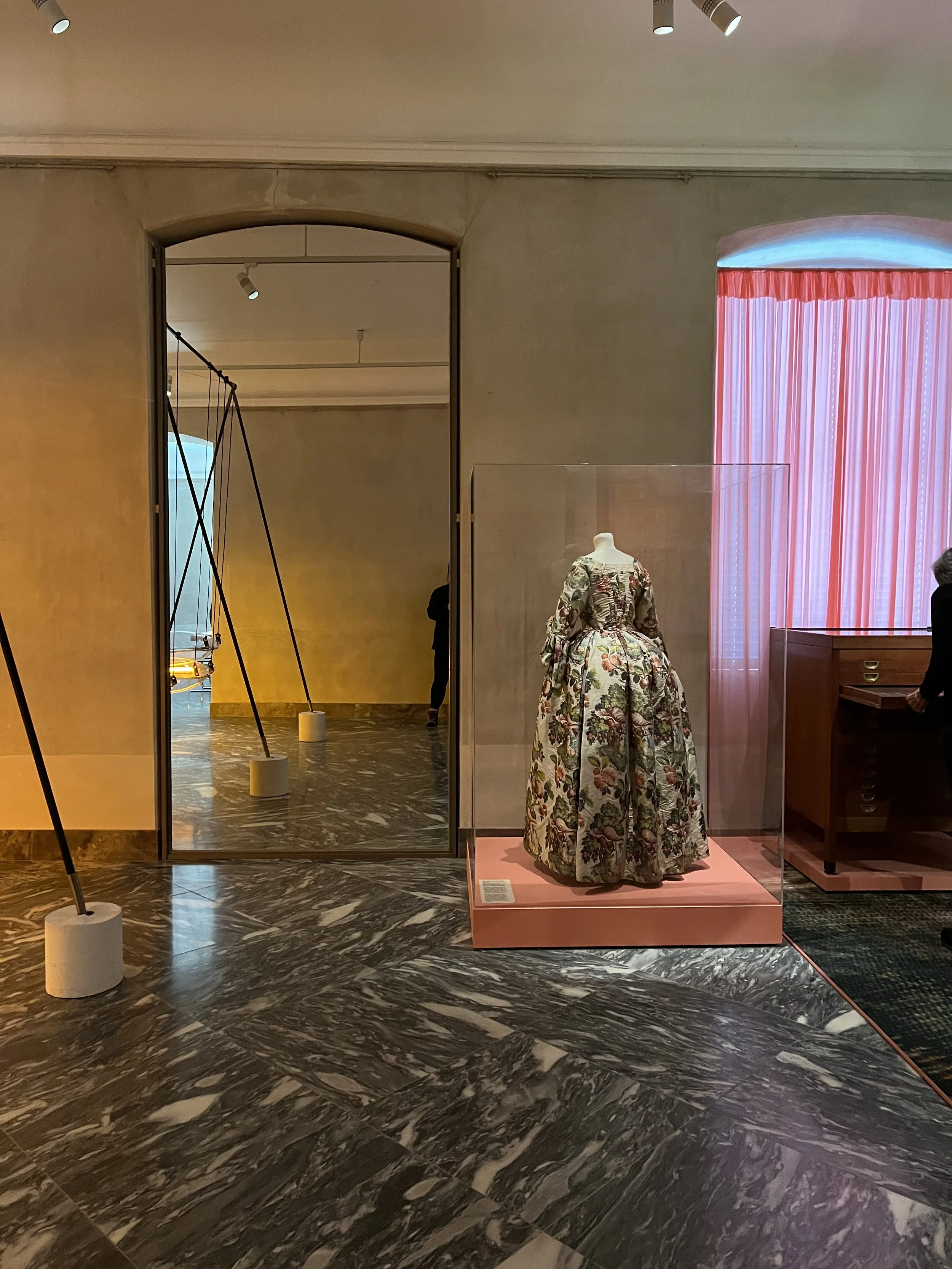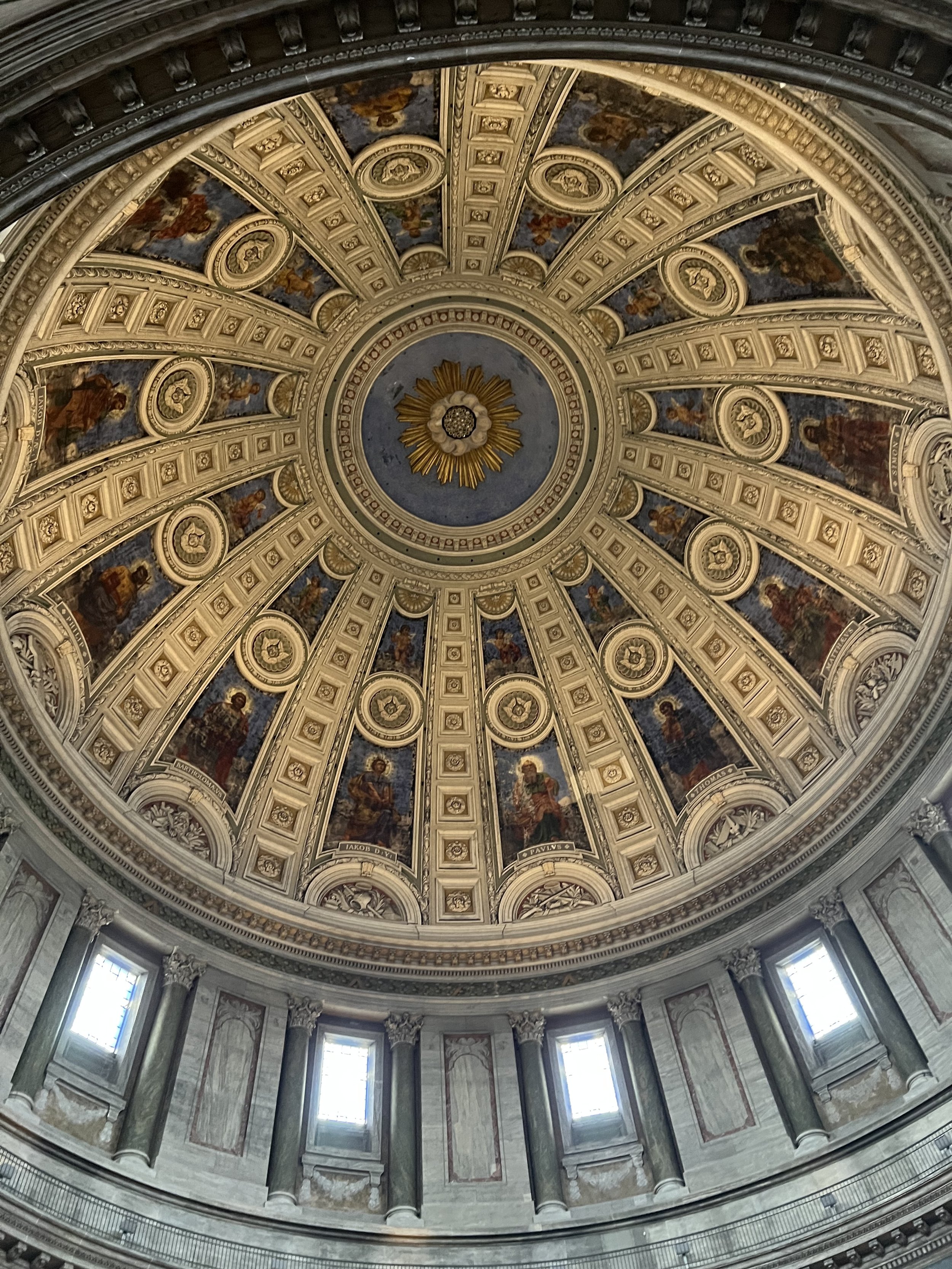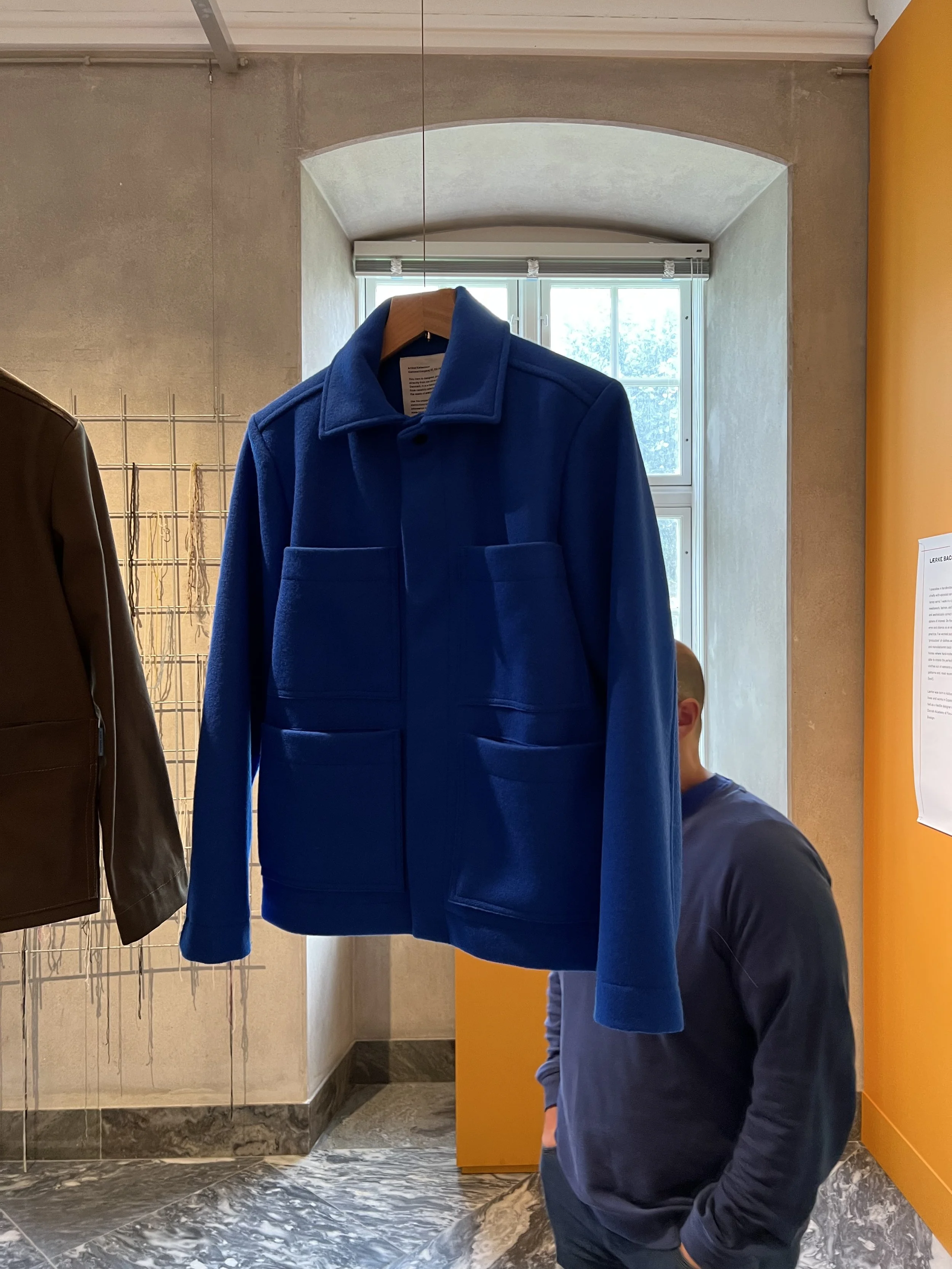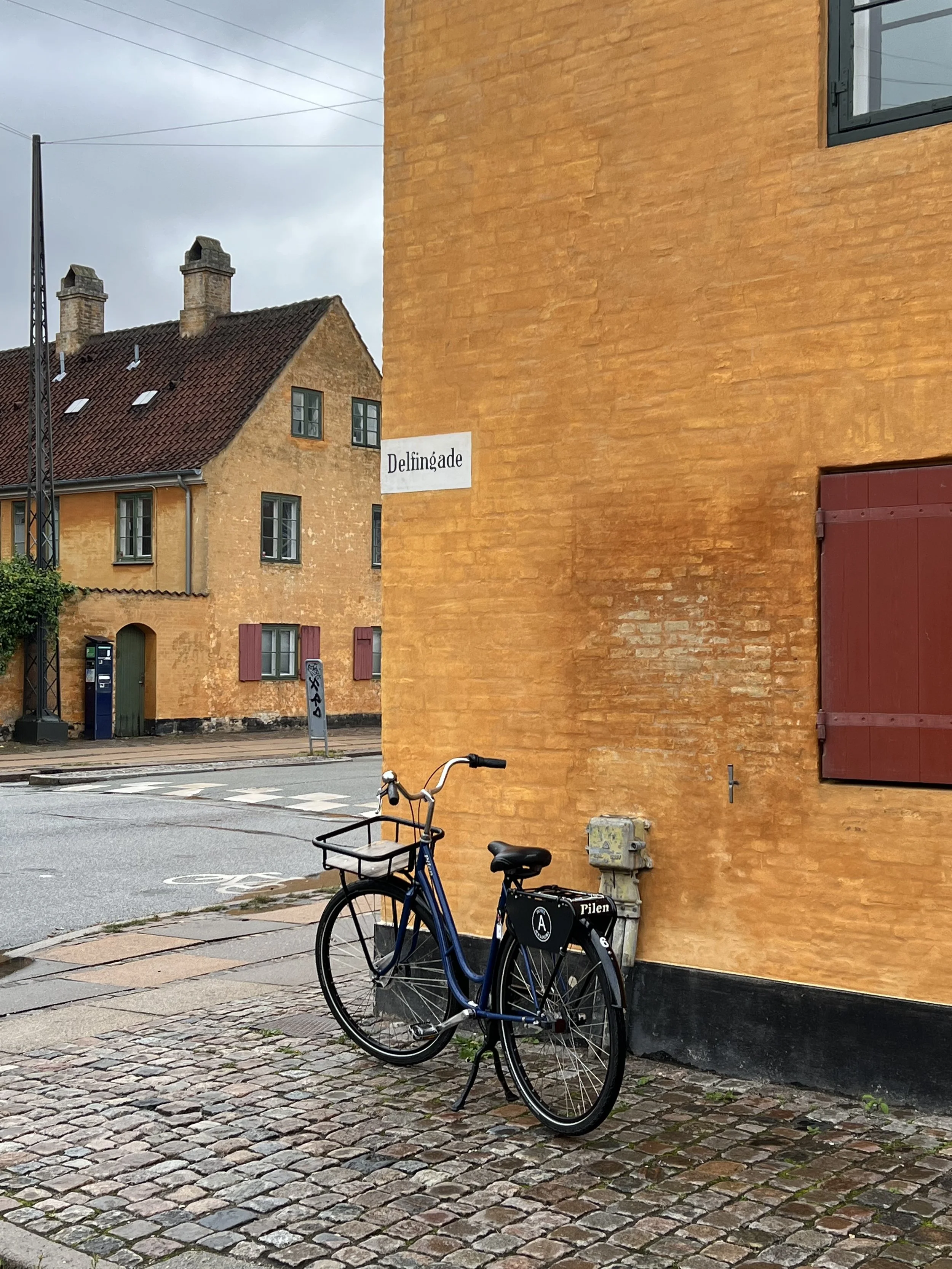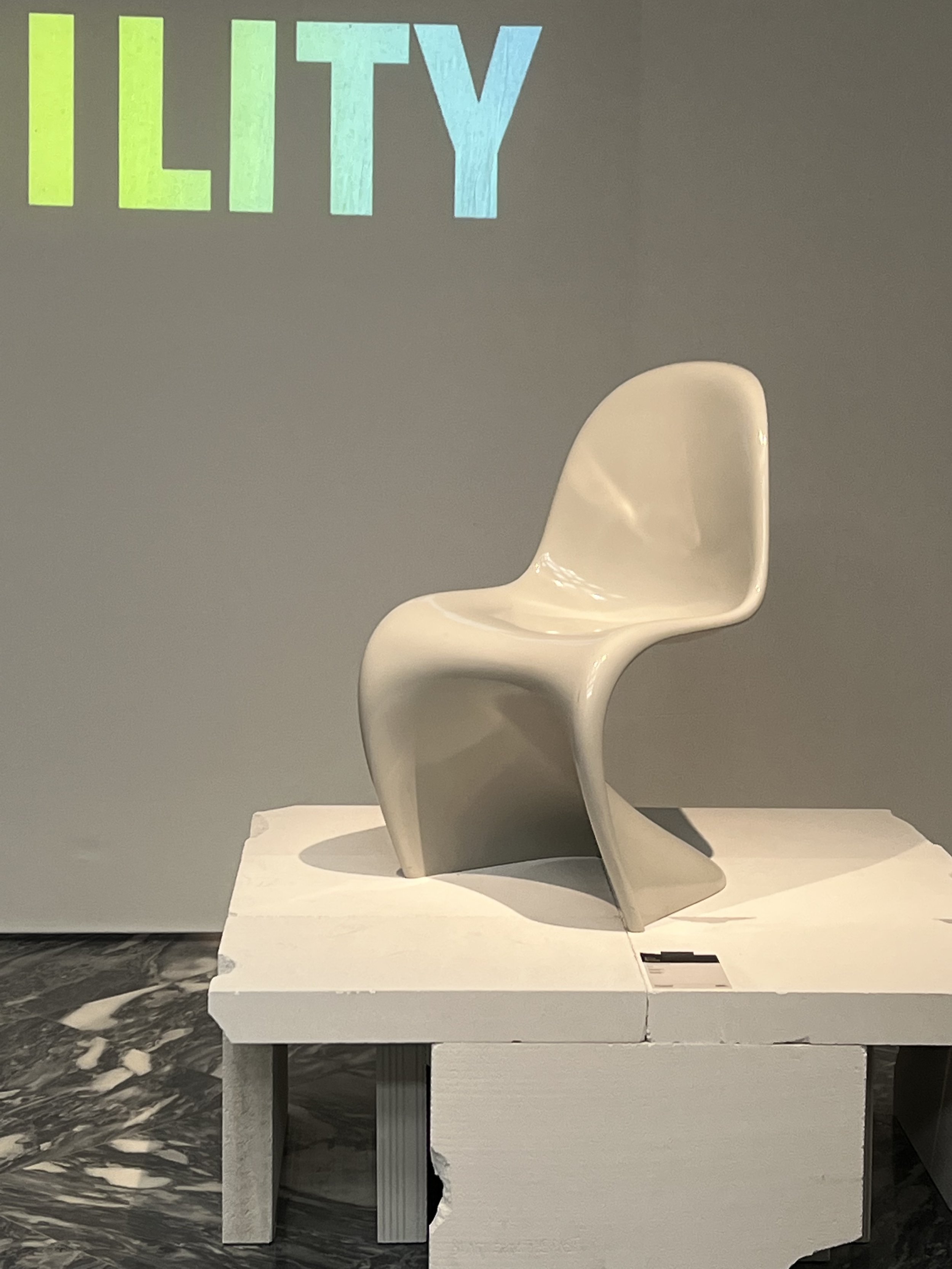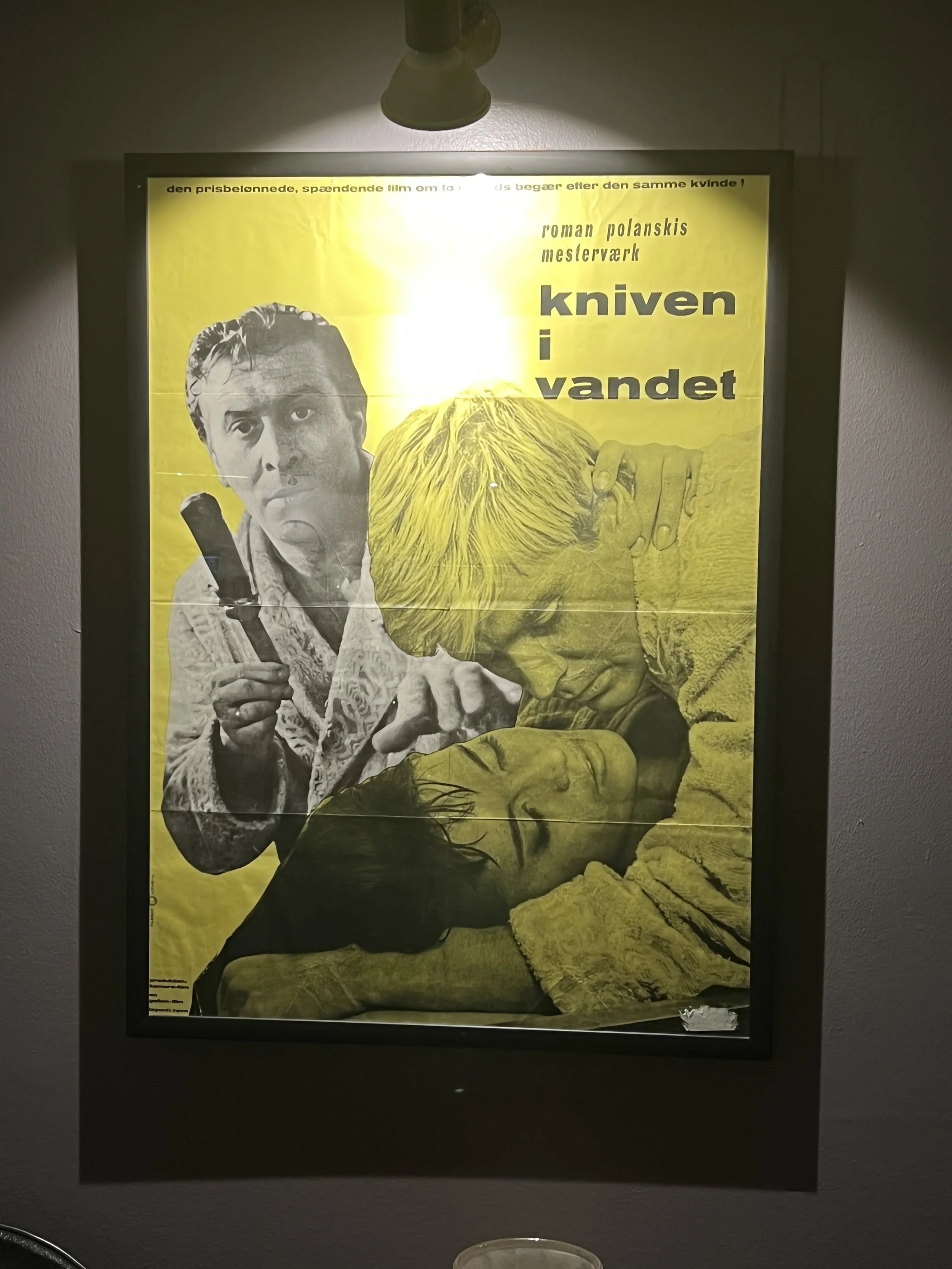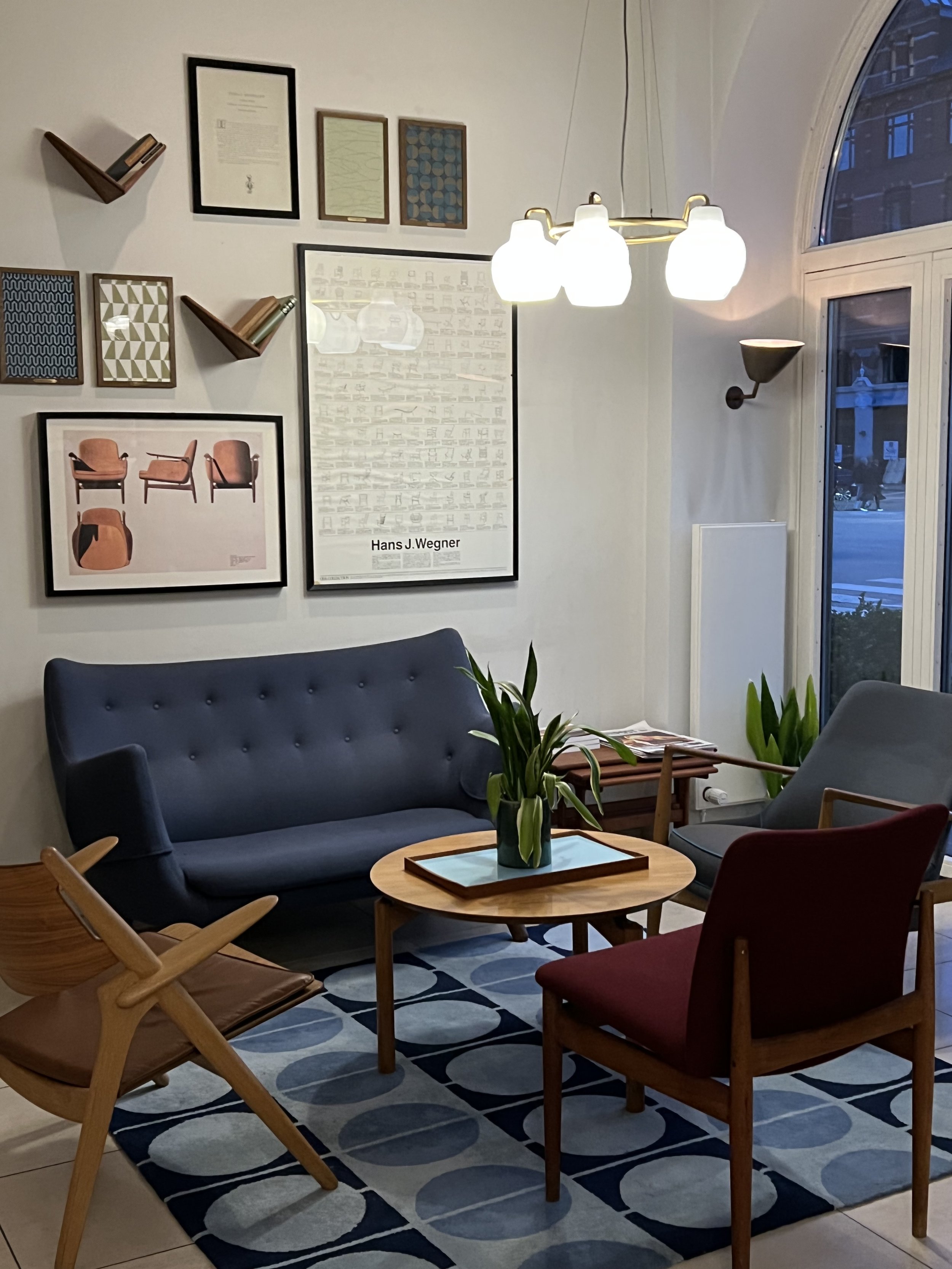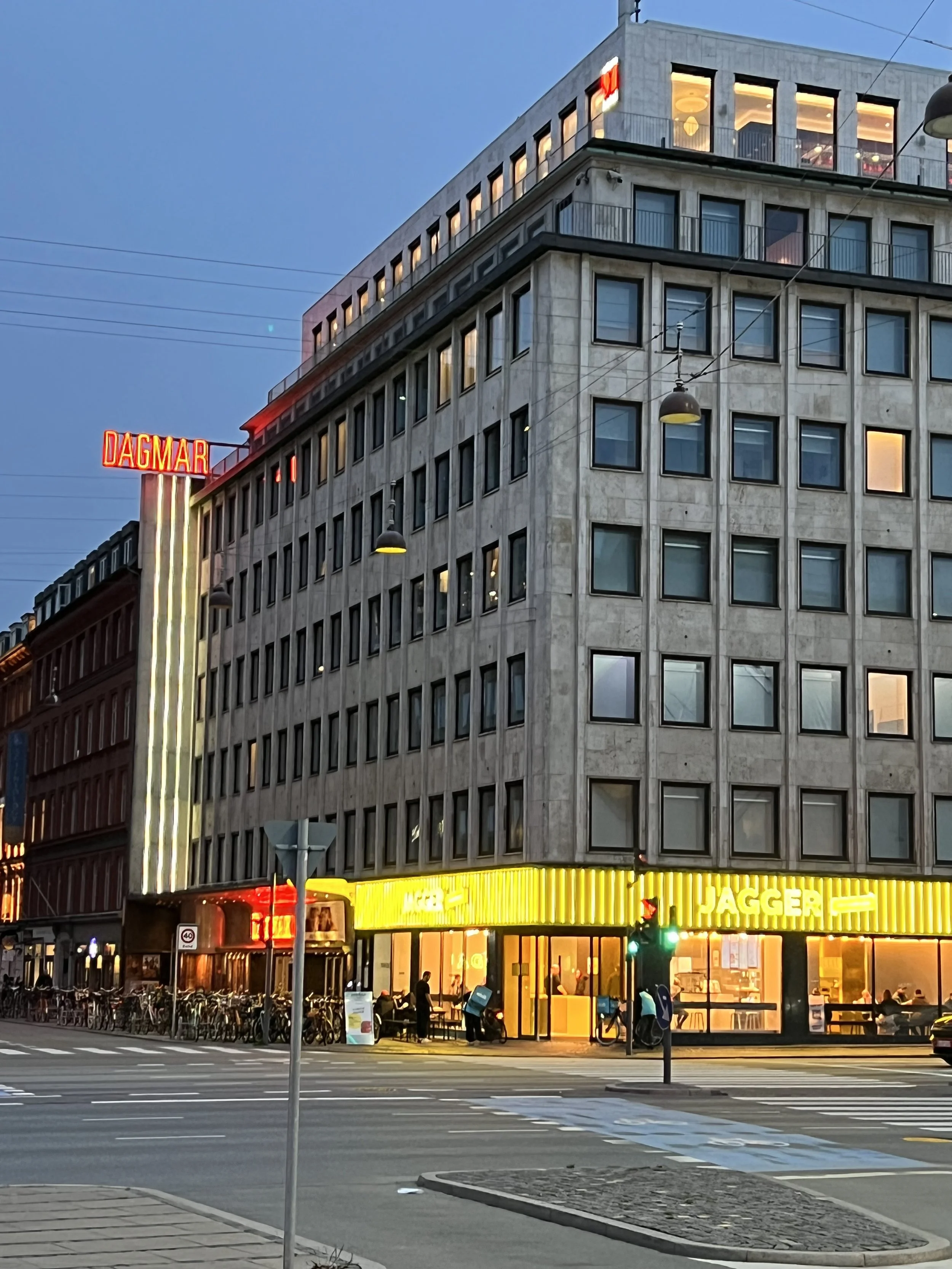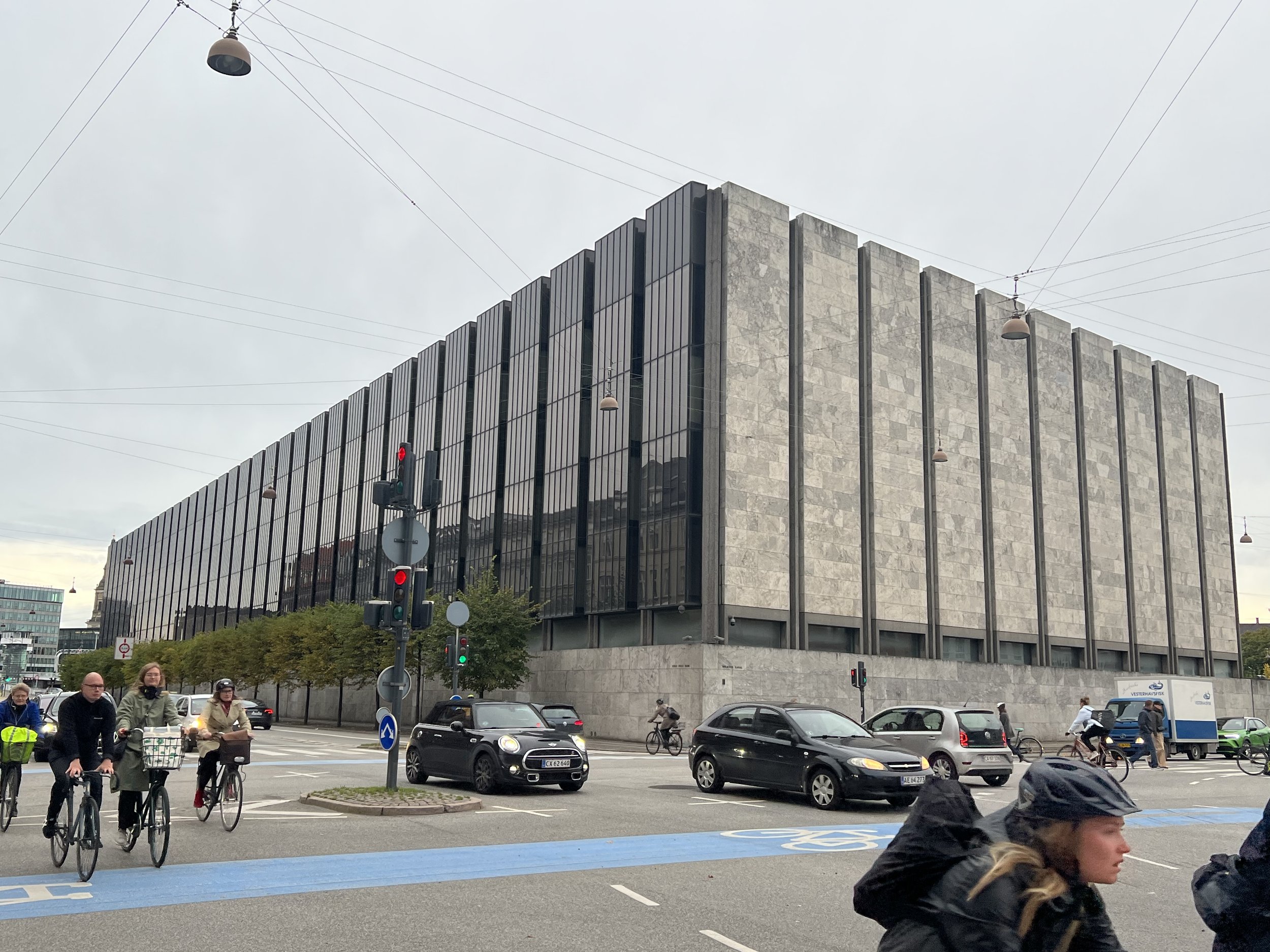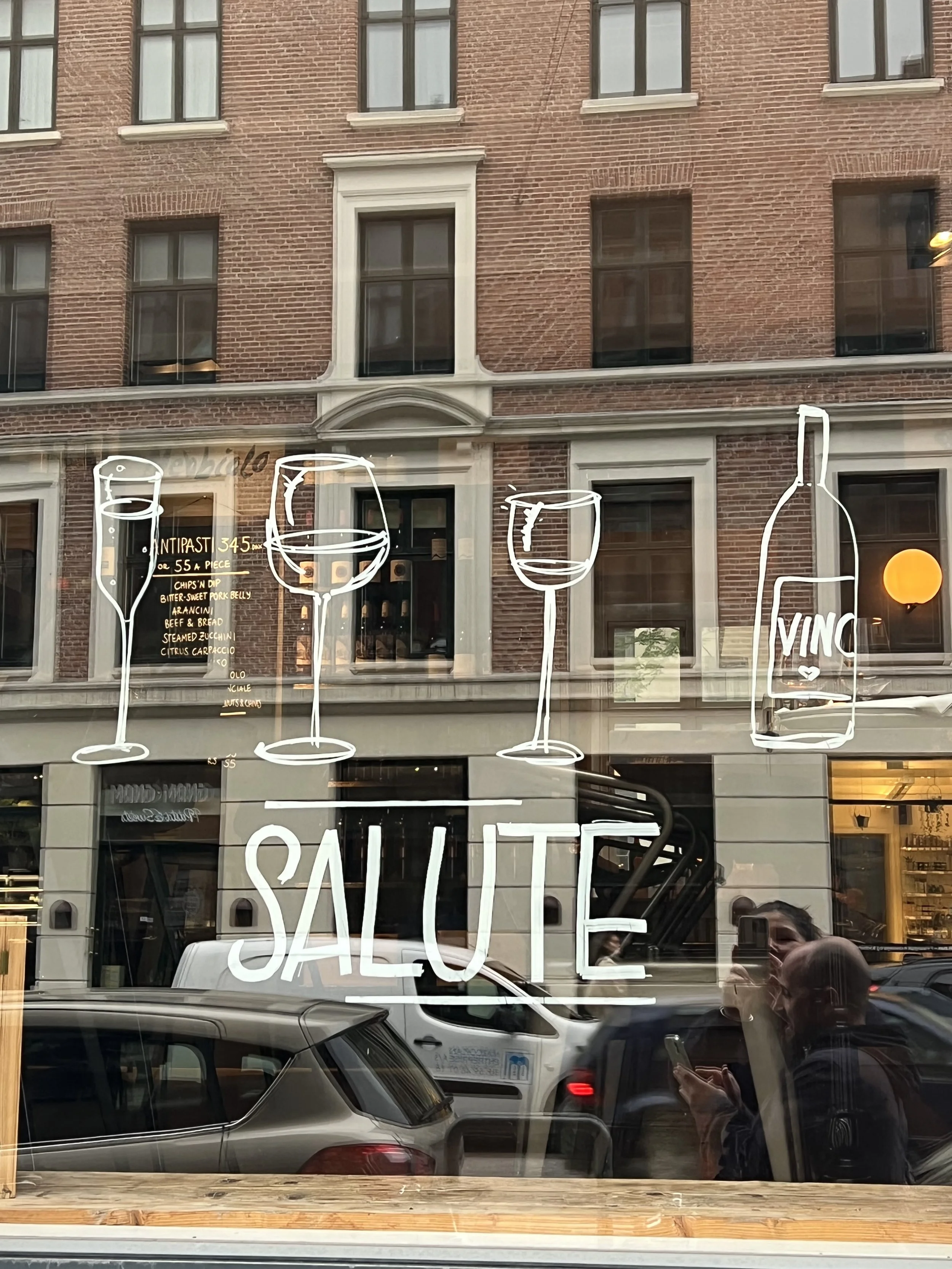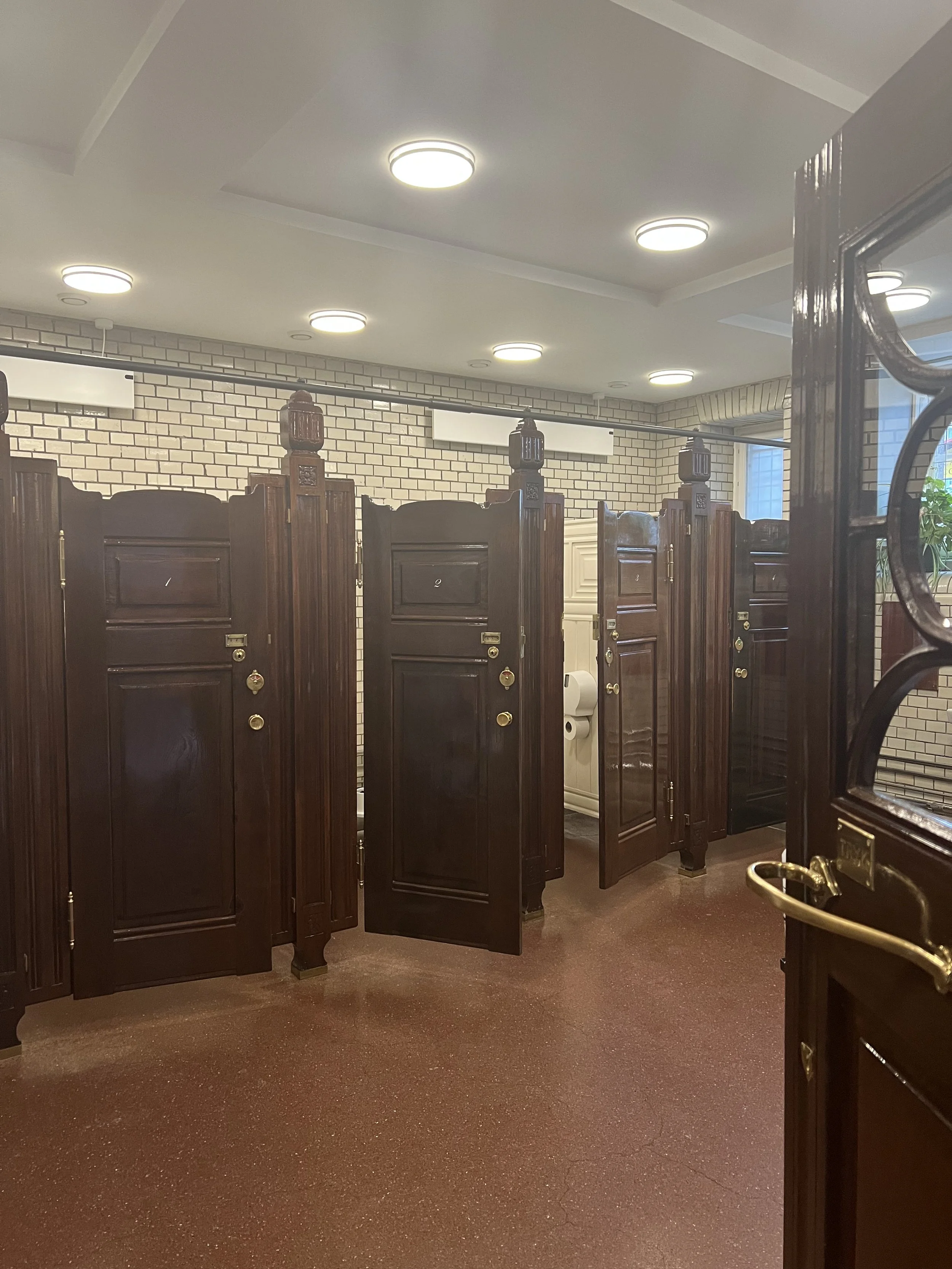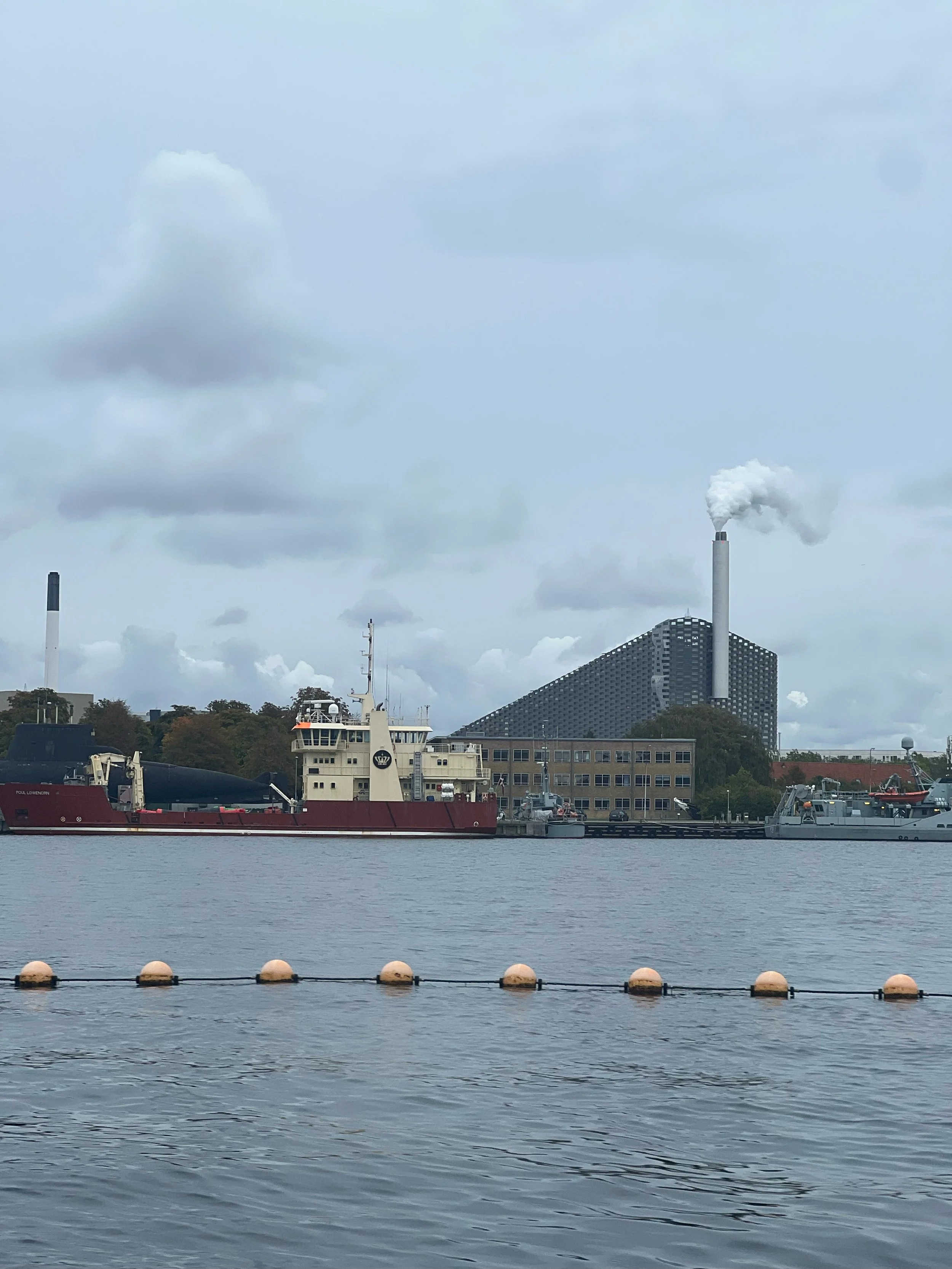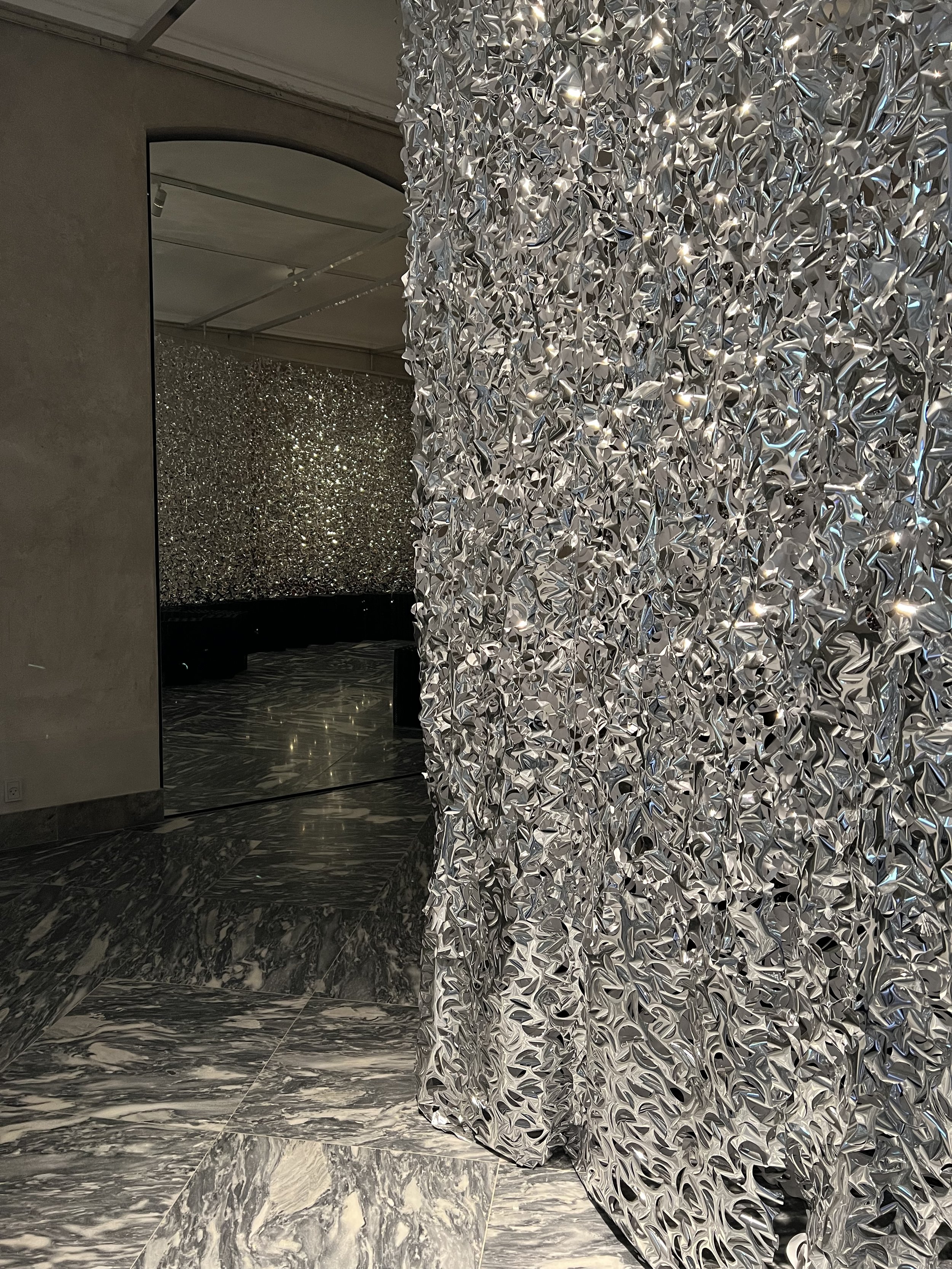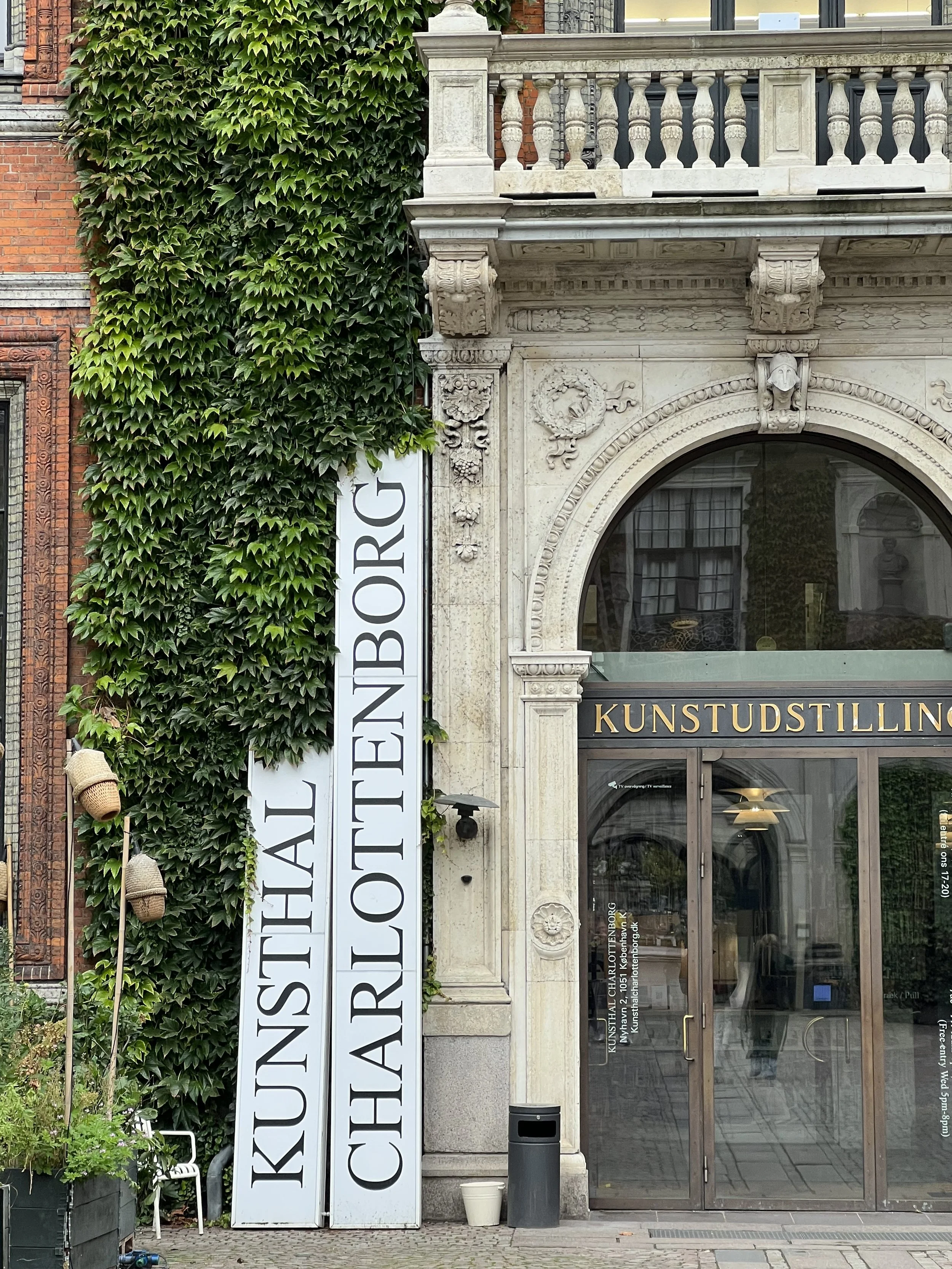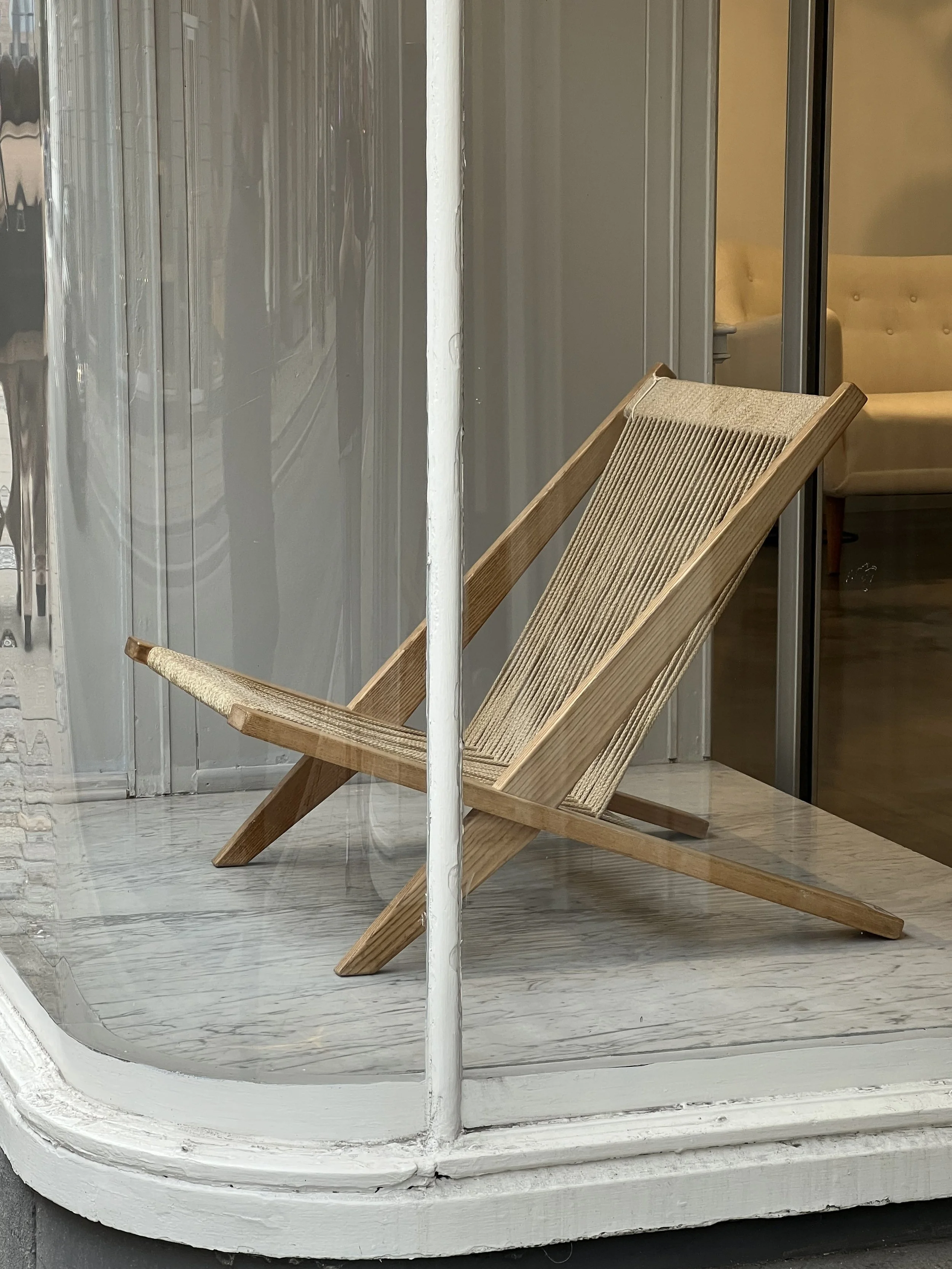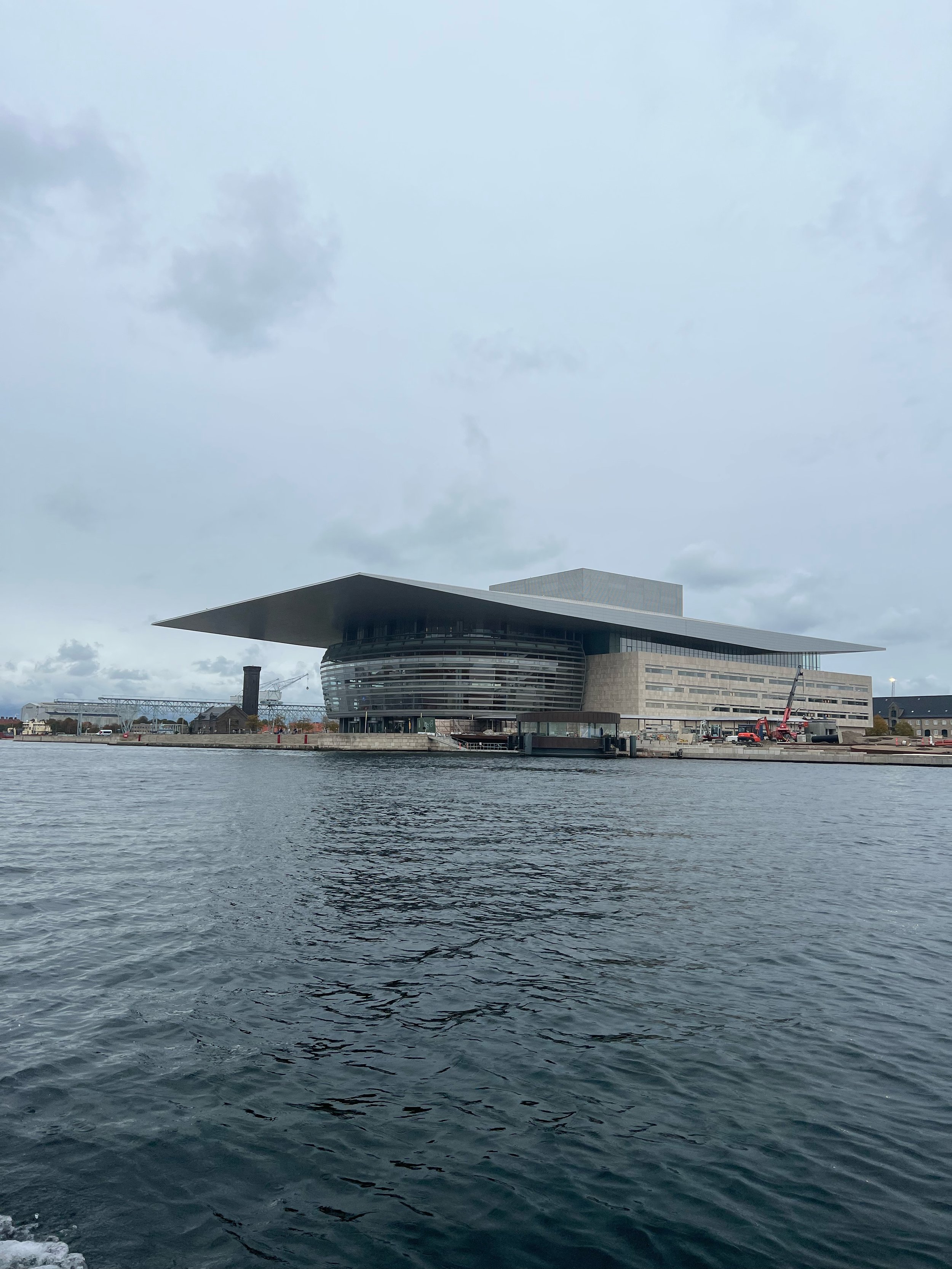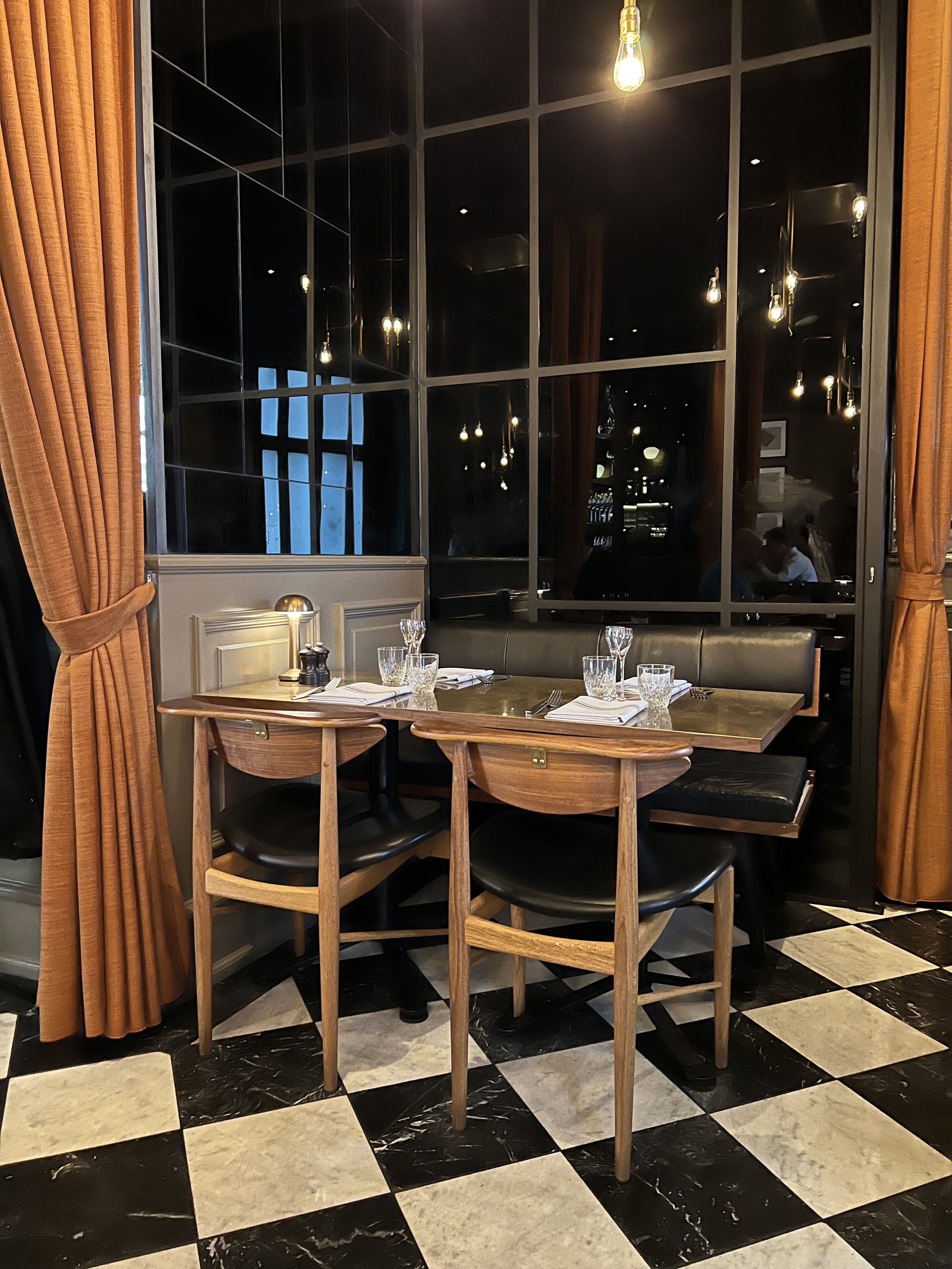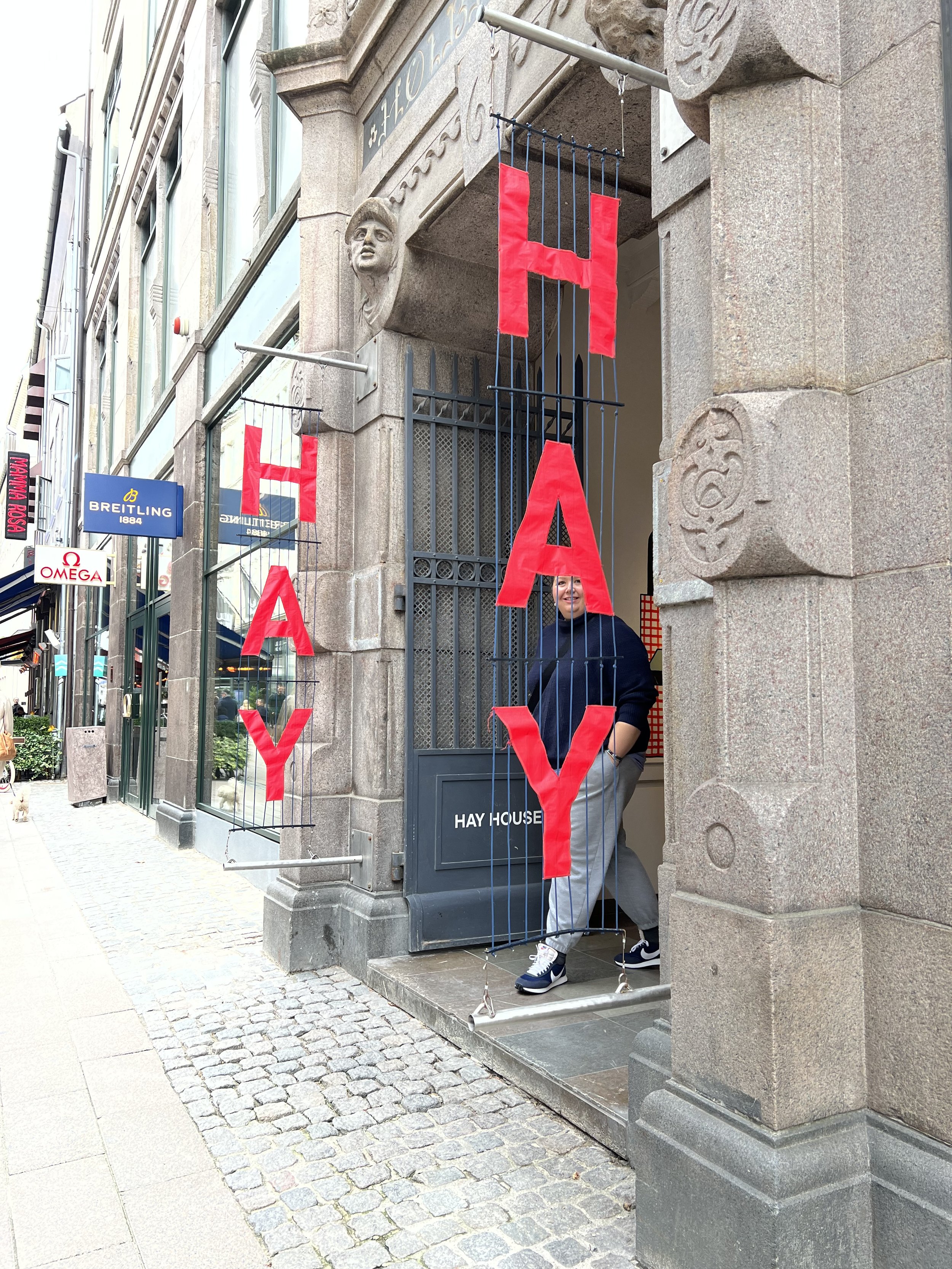A Designer’s Guide to Copenhagen
Copenhagen is the kind of city that feels effortlessly magnetic—a place where design and everyday life merge seamlessly. Often hailed as a must-visit destination for designers, it’s a city that balances functionality, beauty, simplicity, and depth. On my recent visit, I discovered a city rich in thoughtful details, from cycling lanes to sourdough loaves, each telling its own story of considered design.
Cycling Through a City of Thoughtful Design
To experience Copenhagen is to cycle through it. Renting bikes from our hotel, we joined the flow of commuters on the city’s immaculate cycle paths. Unlike the often-daunting roads of the UK, Copenhagen feels designed for cyclists. Dedicated bike lanes are tucked between the pavement and parked cars, creating a safe, intuitive system inviting you to ride confidently. The government’s investment in bike-friendly infrastructure, like the elegant bicycle bridges spanning the harbour, makes exploring the city enjoyable. Sailing through the streets, with the breeze in your hair, is as exhilarating as it is efficient—a pure embodiment of the Danish approach to design: practical yet undeniably joyful.
A Taste of Simplicity at Mirabelle Bakery
Bread lovers take note—Mirabelle Bakery is a celebration of sourdough perfection. The loaves are extraordinary with their dark, crackly crusts and tangy crumbs. The bakery is a masterclass in understated design, with an open kitchen that invites you to witness the artistry of baking firsthand. Even the staff uniforms, adorned with playful sketches of baked goods, reflect the bakery’s attention to detail. This is more than a place to eat—it’s a space that showcases how design can enhance the most ordinary rituals.
Hay House: A Playground of Modern Danish Design
Stepping into Hay House feels like entering a sanctuary of modern design. Housed in an art nouveau building overlooking Amagertorv Square, this multi-floor store is a showcase of HAY’s playful, contemporary take on Danish minimalism. Each room is a testament to thoughtful curation, from a blue shelving system by Stefan Diez to a vibrant yellow sofa embroidered with dandelion flowers. The mix of icy pastels, primary colours, and whimsical signage adds an element of fun, proving that great design doesn’t have to take itself too seriously.
The Design Museum: A Tribute to Everyday Beauty
The recently reopened Design Museum is a treasure trove of creativity. Among its many highlights is a room dedicated to the evolution of table settings—an ode to the rituals of daily life, beautifully displayed as a continuous dinner party spanning centuries. Another standout is the collection of tsuba, the intricately decorated hand guards of samurai swords. Every detail of the Museum, from its exhibitions to its oak-and-steel cafe, reinforces the Danish ethos of design: that beauty should be inspiring and functional.
Studio Arhoj: Playful Ceramics with Japanese Roots
Studio Arhoj is a love letter to the craft of ceramics. Originally founded in Tokyo, the studio now operates in Copenhagen, blending Danish and Japanese influences. Visitors are welcomed into the studio to watch artisans at work, bringing a rare, tactile connection to the making process. Each piece, from pastel-hued vases to quirky ghost figurines, feels like a celebration of imperfection—a reminder that great design often lies in the handmade and unique.
Aamanns 1921: Smørrebrød in a Reverential Setting
For a taste of traditional Danish cuisine, Aamanns 1921 is a must. The setting, with its soaring arches, terrazzo floors, and brass chandeliers, feels almost sacred, yet the atmosphere is anything but austere. Known for its organic ingredients and homemade schnapps, Aamanns takes the humble smørrebrød to new heights. It’s a perfect example of how design and food can create an unforgettable experience.
Copenhagen is a city that doesn’t shout about its design credentials—it simply lives them. From its cycling lanes to its bakeries and museums, the Danish capital embodies a quiet confidence in the power of thoughtful design to shape how we live, move, and connect. For any designer seeking inspiration, it’s a city proving that beauty and functionality are inseparable—and all the more powerful.

